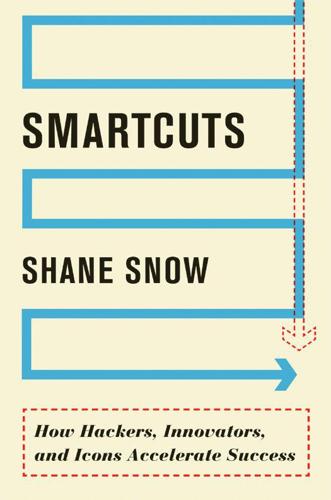
Smartcuts: How Hackers, Innovators, and Icons Accelerate Success
by
Shane Snow
Published 8 Sep 2014
For an excellent academic discussion about experimentation for entrenched businesses, see Stefan Thomke, “Unlocking Innovation through Business Experimentation,” European Business Review, http://www.europeanbusinessreview.com/?p=8420 (accessed February 17, 2014). 112 enjoy an unfair advantage over their competitors: The seminal paper on first-mover advantage was Marvin B. Lieberman, and David B. Montgomery, “First-Mover Advantages,” Strategic Management Journal, no. 9 (1988): 41–58. Lieberman and Montgomery revisited and amended their claims ten years later in “First-Mover (Dis)Advantages: Retrospective and Link with the Resource-Based View,” Strategic Management Journal 19 (1998): 1111–25.
…
Barnett, Mi Feng, and Xaioqu Luo, “Social Identity, Market Memory, and First-Mover Advantage,” Industrial and Corporate Change 22, no. 3 (2012): 585. 116 Fast followers, on the other hand: Reasons for the second-wave advantage were proposed by researchers from Texas A&M only a few years after Lieberman and Montgomery’s initial paper on first movers. “Major shifts in technology for which the first mover is ill-prepared because of its investment in old technology may favor the fast follower that is not burdened with such investments,” write Roger A. Kerin, P. Rajan Varadarajan, and Robert A. Peterson, “First-Mover Advantage: A Synthesis, Conceptual Framework, and Research Propositions,” Journal of Marketing 56, no. 4 (1992): 33–52.
…
Kerin, Roger A., P. Rajan Varadarajan, and Robert A. Peterson. “First-Mover Advantage: A Synthesis, Conceptual Framework, and Research Propositions.” Journal of Marketing 56, no. 4 (1992): 33–52. Kluger, Avraham N., and Angelo DeNisi. “The Effects of Feedback Interventions on Performance: A Historical Review, a Meta-Analysis, and a Preliminary Feedback Intervention Theory.” Psychological Bulletin 119, no. 2 (1996): 254–84. Lehrer, Jonah. Imagine: How Creativity Works. Houghton Mifflin, 2012. Lieberman, Marvin B., and David B. Montgomery. “First-Mover Advantages.” Strategic Management Journal no. 9 (1988): 41–58.

Against Intellectual Monopoly
by
Michele Boldrin
and
David K. Levine
Published 6 Jul 2008
So, too, the other industry players will probably not rush to aid you in your lack of understanding. The First-Mover Advantage Competitive rents are the least amount that an innovator can expect to earn in conditions of competition. Because the innovator initially is the only one to know the idea, there are many ways to profit from this first-mover advantage. As remarkable as the phenomenon of economists who believe that ideas are transmitted freely, while writing a voluminous literature on technology transfer and the cost of information, is the other phenomenon of economists who believe that innovators have no first-mover advantage, while writing a voluminous literature on the strategic advantages of being first.
…
Absent competition in the production of cars, the genial innovator would have much less bargaining power with the only producer of cars. Hence, the moral: make sure to enforce competition, among innovators but also among not-so-innovative producers of old goods, such as cars – and shoes. Quantifying the First-Mover Advantage How strong the first-mover advantage is depends on whether profits are earned from venues in which duplication is difficult or venues in which profits can be earned quickly. When the first-mover advantage is strong, the economic rationale for protection is weak, because most worthwhile works will be produced in the absence of intellectual monopoly. Lobbyists from the book industry, such as the Authors Guild, the RIAA, speaking for the recording industry, and the MPAA, speaking for the movie industry, have been quite adamant about the need for protection of their intellectual property.
…
And they asked me how I did it, and I gave ’em the Scripture text, “You keep your light so shining a little in front o’ the next!” They copied all they could follow, but they couldn’t copy my mind, And I left ’em sweating and stealing a year and a half behind.10 The most striking implications of the first-mover advantage, may, however, lie elsewhere. They are captured by the observation first made by Jack Hirshleifer, that the innovator, by virtue of inside information, may be able to earn vastly more than the social value of the innovation.11 To understand Hirshleifer’s argument, consider the recent innovation of the Ginger scooter, now relabeled the Segway, which was said to revolutionize urban transportation, and grant that this unlikely prediction was actually true.
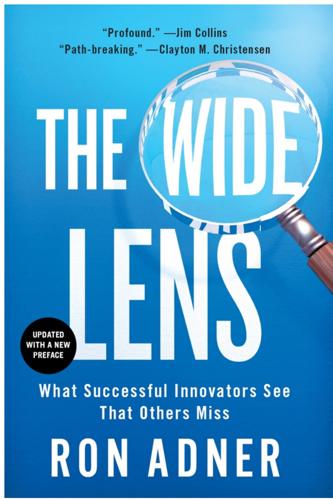
The Wide Lens: What Successful Innovators See That Others Miss
by
Ron Adner
Published 1 Mar 2012
What they reveal is that it is fundamentally wrong to think about first-mover advantage as a fixed characteristic of an industry—any industry, including your own. Instead, we see that the extent of first-mover advantage depends on the nature of challenges in the ecosystem. When development efforts are accelerated, costs rise exponentially. Whether or not they win a prize, a certainty for firms that race to be first is that they will pay a higher price for the attempt. Wise innovators will locate the nature of their endeavor on the first-mover matrix and adjust their speed accordingly. Aggressively pursuing first-mover advantage makes most sense when the innovator’s execution challenges are high.
…
At first glance, it defies logic. In 1979, Sony’s pioneering Walkman, the world’s first portable cassette player, was able to benefit from a first-mover advantage that lasted over thirty years. However, with the same customer set and value proposition, the world’s first portable MP3 player, SaeHan’s MPMan, introduced in 1998, enjoyed no early-mover advantage. It was Apple, which launched its iPod three years after the first mover, that finally dominated the industry. How did this happen? First Mover: Advantage or Disadvantage? In 1978, engineers at Sony successfully married a compact playback device with lightweight headphones to create the prototype for a product that would become a worldwide hit.
…
By the launch of the iPod in 2001, there were approximately fifty portable MP3 players available in the United States—and no firm had achieved anywhere near the dominance that the Walkman had enjoyed twenty years earlier. Although IDC predicted sales of MP3 players to reach 9 million by 2006, unit sales in 2001 were only 248,000. SaeHan saw the market, delivered the product, embraced the right file format, and did it all before the competition. But unlike Sony, it did not enjoy a first-mover advantage. Why was first-mover advantage so large in the portable music player industry in one technology generation but completely absent in another? First, we must ask: what does it take for a portable music player to create value? By design, these devices are basic; a customer need only add batteries and the music itself.
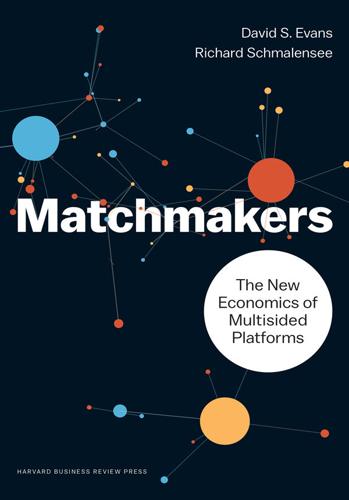
Matchmakers: The New Economics of Multisided Platforms
by
David S. Evans
and
Richard Schmalensee
Published 23 May 2016
Many writers on business strategy took this apparent lesson to heart and emphasized the importance of first-mover advantages in industries with network effects.5 They drew two conclusions. The first was that network effects meant that one firm, or standard, would control the market, since bigger was always better in the eyes of consumers. These were, therefore, winner-take-all markets. The second was that, if you wanted to be the winner who took all, you had better start first and keep your lead. Since direct network effects would magnify the effects of even the slightest of leads, there’s always a first-mover advantage. One can see the influence of this work from a Google Ngram that shows the frequency of these phrases in books published after 1950.
…
As Rochet and Tirole realized in their pioneering paper, “[M]any, if not most markets with network externalities are characterized by the presence of two distinct sides whose ultimate benefit stems from interacting through a common platform.”7 The French economists pointed to the general significance of indirect network effects. A network effect is indirect when the value of a matchmaker to one group of customers depends on how many members of a different group participate. FIGURE 2-1 Mentions of “network effect(s)” and “first-mover advantage,” 1950–2008 Note: Both Ngrams are case-insensitive. The Ngram for “network effect(s)” includes both the singular and plural. The Ngram for “first-mover advantage” includes both the hyphenated and unhyphenated forms. The units for both axes are per 10 million, e.g., a value of 32 for “network effect(s)” indicates that 32 bigrams per 10 million bigrams (two-word phrases) in the Google Book database were “network effects.”
…
One can see the influence of this work from a Google Ngram that shows the frequency of these phrases in books published after 1950. There was a surge in the term network effects in the early 1970s following the publication of Rohlfs’s paper, references died down, and then grew explosively after 1995 (see figure 2-1).6 References to the first-mover advantage started increasing rapidly in the early 1990s and then grew explosively after 1995 as well. By the mid-1990s, when the dot-coms flooded the market, supported by plentiful venture capital funding, the view that entrepreneurs should build share quickly and worry about money later was the accepted wisdom.
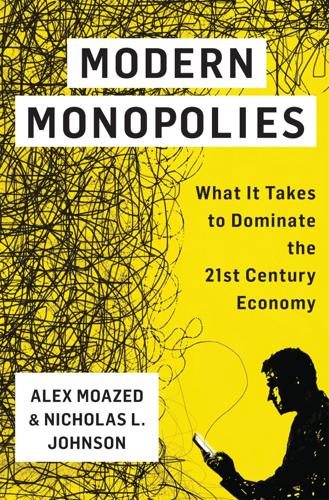
Modern Monopolies: What It Takes to Dominate the 21st Century Economy
by
Alex Moazed
and
Nicholas L. Johnson
Published 30 May 2016
Backed by a simplistic notion of how networks created value, the common view of network effects viewed competition between platforms as a simple matter of getting the biggest the fastest. This concept also was known as first-mover advantage. The idea of first-mover advantage was so powerful that, according to technology columnist Kevin Maney at USA Today, “it could instantly win a startup millions of dollars in financing, boatloads of publicity and board members who seemed, for a moment anyway, important.”33 Be the first to take over any new business category on the Web and it was yours, or so the thinking went. The idea of first-mover advantage took a hit after the dot-com bubble burst, but it still lives on today. Steve Blank, a serial entrepreneur and one of the founders of the Lean Startup movement, called first-mover advantage “an idea that just won’t die.”34 In the past, part of the problem was that this concept was applied to businesses that didn’t have any real network effects and very little sustainable advantage, even if they were to succeed.
…
We borrow the term “reverse network effect” from Bernard Lunn, “Is There a Reverse Network Effect with Scale?” readwrite, March 16, 2009, http://readwrite.com/2009/03/16/is_there_a_reverse_network_effect_with_scale. 33. Kevin Maney, “‘First Mover Advantage’ No Longer an Advantage,” USA Today, July 18, 2001. 34. Steve Blank, “Steve Blank: Here’s Why the First-Mover Advantage Is Extremely Overrated,” Business Insider, October 19, 2010, http://www.businessinsider.com/steve-blank-first-mover-advantage-overrated-2010-10. 35. For more detail, see David S. Evans, “Governing Bad Behavior by Users of Multi-Sided Platforms,” Berkeley Technology Law Journal 27, no. 2 (Fall 2012). 36.
…
Steve Blank, a serial entrepreneur and one of the founders of the Lean Startup movement, called first-mover advantage “an idea that just won’t die.”34 In the past, part of the problem was that this concept was applied to businesses that didn’t have any real network effects and very little sustainable advantage, even if they were to succeed. Pets.com and Kozmo.com are both examples from the dot-com era. But another problem with the emphasis on first-mover advantage is that it gives you the wrong ideas on how you should go about scaling a network. The growth-at-any-cost mind-set is a big reason why platforms that get initial traction often fail to reach scale.
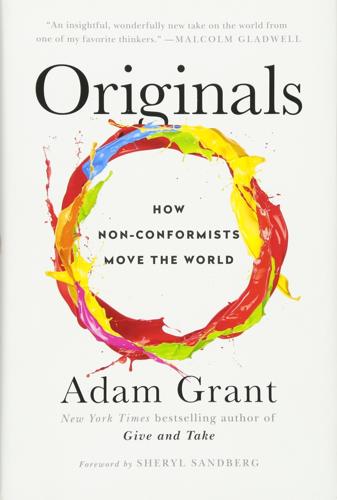
Originals: How Non-Conformists Move the World
by
Adam Grant
Published 2 Feb 2016
As marketing researcher Lisa Bolton summarizes, “Although first movers face some advantages in particular industries, the academic research remains mixed and does not support an overall first-mover advantage.” If you’re someone who’s tempted to rush into a new domain, this knowledge should stop you cold and leave you thinking carefully about the ideal timing. But Bolton finds something frightening: even when people learn that evidence doesn’t support the first-mover advantage, they still believe in it. It’s easier to think of pioneers that succeeded; the failed ones are long forgotten, so we assume they’re rare. The best way to shatter the myth of the first-mover advantage is to ask people to generate reasons for first-mover disadvantage.
…
“The number one thing”: Bill Gross, “The Single Biggest Reason Why Startups Succeed,” TED Talks, June 2015, www.ted.com/talks/bill_gross_the_single_biggest_reason_why_startups_succeed/transcript. a first-mover advantage: Lisa E. Bolton, “Believing in First Mover Advantage,” manuscript under review. These edges create barriers: Marvin B. Lieberman and David B. Montgomery, “First-Mover Advantages,” Strategic Management Journal 9 (1988): 41–58; Montgomery and Lieberman, “First-Mover (Dis)advantages: Retrospective and Link with the Resource-Based View,” Strategic Management Journal 19 (1998): 1111–25.
…
Dubner, SuperFreakonomics: Global Cooling, Patriotic Prostitutes, and Why Suicide Bombers Should Buy Life Insurance (New York: William Morrow, 2009). “A new scientific truth”: Max Planck, Scientific Autobiography and Other Papers (New York: Philosophical Library, 1949). First-mover advantages: Marvin B. Lieberman, “Did First-Mover Advantages Survive the Dot-Com Crash?,” Anderson School of Management working paper (2007). odds of success aren’t higher: Pieter A. VanderWerf and John F. Mahon, “Meta-Analysis of the Impact of Research Methods on Findings of First Mover Advantage,” Management Science 43 (1997): 1510–19. when the market is uncertain: William Boulding and Markus Christen, “Sustainable Pioneering Advantage?

How Big Things Get Done: The Surprising Factors Behind Every Successful Project, From Home Renovations to Space Exploration
by
Bent Flyvbjerg
and
Dan Gardner
Published 16 Feb 2023
How Uniqueness Bias Undermines Project Management,” under review. 6. Marvin B. Lieberman and David B. Montgomery, “First-Mover Advantages,” Strategic Management Journal 9, no. 51 (Summer 1988): 41–58. 7. Peter N. Golder and Gerard J. Tellis, “Pioneer Advantage: Marketing Logic or Marketing Legend?,” Journal of Marketing Research 30, no. 2 (May 1993): 158–70. 8. Fernando F. Suarez and Gianvito Lanzolla, “The Half-Truth of First-Mover Advantage,” Harvard Business Review 83, no. 4 (April 2005): 121–27; Marvin Lieberman, “First-Mover Advantage,” in Palgrave Encyclopedia of Strategic Management, eds. Mie Augier and David J. Teece (London: Palgrave Macmillan, 2018), 559–62. 9.
…
Those in the private sector may object that, yes, experience is good and there is no upside to being the first court system to digitize its records. But a company that develops the first-ever widget and is first to bring it to market does have an upside, the famous “first-mover advantage.”6 Surely this advantage more than compensates for the downside of not being able to learn from the experience of others. But the first-mover advantage is greatly overstated. In a watershed study, researchers compared the fates of “pioneer” companies that had been the first to exploit a market and “settlers” that had followed the pioneers into the market. Drawing on data from five hundred brands in fifty product categories, they found that almost half of pioneers failed, compared to 8 percent of settlers.
…
Lia, Leif, Trond Jensen, Kjell E. Stensby, and Grethe H. Midttømme. 2015. “The Current Status of Hydropower Development and Dam Construction in Norway.” Hydropower & Dams 22, no. 3. Lieberman, Marvin. 2018. “First-Mover Advantage.” In Palgrave Encyclopedia of Strategic Management, eds. Mie Augier and David J. Teece. London: Palgrave Macmillan. Lieberman, Marvin B., and David B. Montgomery. 1988. “First-Mover Advantages.” Strategic Management Journal 9 (51): 41–58. Lindsey, Bruce. 2001. Digital Gehry: Material Resistance, Digital Construction. Basel: Birkhäuser. Liou, Joanne. 2021. “What Are Small Modular Reactors (SMRs)?”
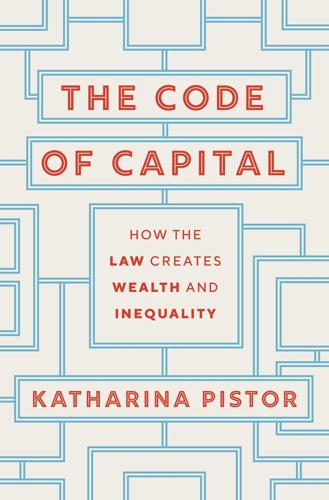
The Code of Capital: How the Law Creates Wealth and Inequality
by
Katharina Pistor
Published 27 May 2019
But for the legitimate plaintiffs, the costs of private policing often exceed its benefits, and many victims will discover a loss that empowers them to bring an action only too late to recover anything; they may be formally barred by statutes of limitation, which bar litigation after the lapse of time, or may find it difficult to obtain the evidence needed to make their case. Taken together, these hurdles give the coders of capital a first-mover advantage. A practice that may have been deemed a transgression of the rights of others when first introduced can therefore spread and evolve into a new standard of behavior before it is legally challenged; after all, if everybody does it, it can hardly be wrong. Courts might even sanction it as the new standard of behavior. The first-mover advantage, which structurally disadvantages plaintiffs, can be overcome, at least in theory, by giving would-be plaintiffs powerful tools, such as class action suits; by affording them a multiple of the damages they have suffered; or by shifting the burden of proof to the defendant—all well-known strategies for rebalancing the legal powers between private opponents.
…
Asset holders in search of higher returns and greater wealth have been the main driver for adapting the modules of the code to ever newer types of assets, but they needed lawyers to, quite literally, perform the deed. The asset holders and their lawyers did not steal the code, and neither was it handed to them on a silver platter. Rather, they benefited from the indeterminacy and malleability of private law on one hand, and on the other, a first mover advantage enshrined in the procedural law that governs the enforcement of claims. Economists have long realized that contracts are incomplete.11 The parties to a contract simply cannot foresee all possibilities the future might hold; trying to address every possible event that might affect their relation and providing for it in the contract would be far too costly, indeed hopeless, because the future can’t be known at the time of contracting.
…
Once granted, however, the burden to question this new property right falls on the challenger. In sum, the code of capital benefits from law’s indeterminacy, from private autonomy that makes the modules of the code highly malleable devices in the hands of sophisticated lawyers, and from the fact that aggressive coders can play offense and exploit first-mover advantages. Under these conditions, there is little reason for asset holders to bargain with the state as rational choice theorists would have it; all they need is a good lawyer who commands the skills to code their assets as capital. And, contrary to Marxists, they don’t need to storm the Bastille to exercise power; they only need to position their lawyers at the major intersections of the nation’s capital to manage the traffic lights so that they can ride a green wave.

Army of None: Autonomous Weapons and the Future of War
by
Paul Scharre
Published 23 Apr 2018
Right now, “offense has all of the advantage in computer security,” Walker said. The problem is right now there is an asymmetry between attackers and defenders. Defenders have to close all of the vulnerabilities, while attackers have to just find one way in. Autonomous cybersystems level the playing field, in part because defense gets a first-mover advantage. They write the code, so they can scan it for vulnerabilities and patch them before it is deployed. “I’m not saying that we can change to a place where defense has the advantage,” Walker said, but he did think autonomous cybertools would enable “investment parity,” where “the best investment wins.”
…
Conversely, an unstable equilibrium is one where a slight disturbance will cause the system to rapidly transition to an alternate state, like a pencil balanced on its tip. Any slight disturbance will cause the pencil to tip over to one side. Nuclear strategists prefer the former to the latter. Beyond “first-strike stability” (sometimes called “first-mover advantage”), several variants of stability have emerged. “Crisis stability” is concerned with avoiding conditions that might escalate a crisis. These could include perverse incentives for deliberate escalation (“strike them before they strike us”) or accidental escalation (say a low-level commander takes matters into his or her own hands).
…
Extremely difficult to detect and able to stay at underwater for months at a time, submarines give nuclear powers an assured second-strike capability. Even if a surprise attack somehow wiped out all of a nation’s land-based nuclear missiles and bombers, the enemy could be assured that even a single surviving submarine could deliver a devastating attack. This effectively removes any first-mover advantage. The omnipresent threat of ballistic missile submarines at sea, hiding and ready to strike back, is a strong deterrent to a first strike and helps ensure stability. In some cases, defensive weapons can be destabilizing. National missile defense shields, while nominally defensive, were seen as highly destabilizing during the Cold War because they could undermine the viability of an assured second-strike deterrent.
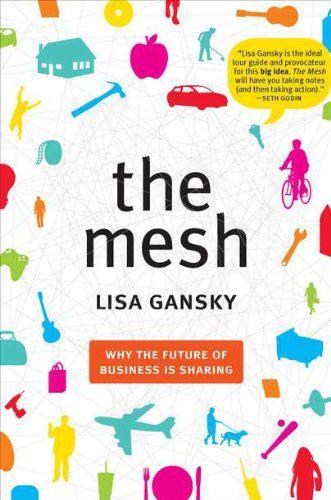
The Mesh: Why the Future of Business Is Sharing
by
Lisa Gansky
Published 14 Oct 2010
These are adjacent businesses that provide necessary services or reduce the “friction” of certain offers. Finance, insurance, and maintenance are fundamental for launching car sharing into the mainstream. arrive early. stay for the main meal. In most businesses where technology is involved, including Mesh businesses, there’s something called the first mover advantage. You get the first mover advantage by, well, being first—by identifying a category or a class of service or product, and going to market with it before anyone else. If you do, you’re often more likely to set the standard for the product or service expectations, build your brand, and be a partner magnet. Patagonia got ahead by branding a recycled textile for their clothes.
…
See Product design double bottom line of energy cooperatives government initiatives for green business practices and profits green criteria and purchasing decisions Mesh companies purchasing decisions, green drivers of recycling and reuse services sustainable design upcycling waste management, natural approach to Etsy Expedia Expensure Expert-advice sharing, Mesh companies for Facebook Firefox, community input First mover advantage Flash branding Flextronics, Mesh strategies Florida, Richard Folcia, Federico Food co-ops, Mesh companies Freepeats FreshlyBranded FriendlyFavor Friendster Full Mesh model Gardening, Mesh companies Geek Squad General Electric Get Satisfaction Global Green Godin, Seth Goodall, Jane GoodGuide Goods swaps, Mesh companies Google Google Earth Gordon, Chuck Green initiatives.
…
See Loans/social lending Social networking importance to the Mesh Mesh companies negative events, broadcasting on on Netflix network effect privacy, importance of and product improvement for word-of-mouth advertising See also Facebook Software getting for startup Mesh open development Software as a service (SaaS) Sourcemap SpareFoot Spride Share Standardization of products Starting a Mesh company capital needs customers, identifying define/redefine/scale stages first mover advantage marketing primary questions serendipity as factor shareable assets, identifying software, ASP model Stohr, Kate Supply chain forward and reverse integration reverse supply chain Sustainable design Swishing Taxi Magic TCHO Technology, Mesh-friendly Mesh companies TED Prize thinkspace thredUP adaptability of case study Tool sharing, Mesh companies Toyota, broken trust Transaction fees Transparency and adaptability “age of radical transparency,” and trust building Transportation efficiency communities developed for See also Bike sharing; Car sharing Travel-related services, Mesh companies Trials Tripkick Trust building basics of broken trust, examples of and customer complaints customer misbehavior, dealing with by delighting customers discoverers as trust agents lost trust, rebuilding maintaining trust negative events, impact on and privacy practices proprietary versus open control reviews, keeping perspective social networks, role of starting slow, necessity of and transparency trials/samples for “virtuous circle of trust,” Tryvertising Twitter Tylenol tragedy Upcycling Mesh companies Vacation Rentals by Owner (VRBO) Virgin Corporation, Mesh strategy Volkswagen, idea solicitation on Web Walmart customer data, use of greening of integration with suppliers Mesh possibilities for waste, created by Waste disposal and climate change as resource underutilization Waste management government initiatives for Mesh companies in Mesh ecosystem in natural ecosystem raw materials, sharing recycling and reuse services reverse value chain yield management See also Recycling and reuse services Water Legacy Wattzon.com Westmill Wind Farm Co-operative WhipCar Wilcox, Ronald Wilhelm, Eric Williamson, Oliver Wine cooperatives, Mesh companies Word of mouth, power of Work-space sharing, Mesh companies World of Goods Yelp Yield management Zipcar customer experience with Mesh model for partners Zopa Zynga Table of Contents Title Page Copyright Page Dedication Introduction Chapter 1 - Getting to Know the Mesh Chapter 2 - The Mesh Advantage Chapter 3 - Mesh Design Chapter 4 - In with the Mesh Chapter 5 - In Mesh We Trust Chapter 6 - The Mesh as Ecosystem Chapter 7 - Open to the Mesh Chapter 8 - Mesh Inc.

Our Final Invention: Artificial Intelligence and the End of the Human Era
by
James Barrat
Published 30 Sep 2013
At this juncture in mouse history, you may have learned, there is no shortage of tech-savvy mouse nation rivals, such as the cat nation. Cats are no doubt working on their own ASI. The advantage you would offer would be a promise, nothing more, but it might be an irresistible one: to protect the mice from whatever invention the cats came up with. In advanced AI development as in chess there will be a clear first-mover advantage, due to the potential speed of self-improving artificial intelligence. The first advanced AI out of the box that can improve itself is already the winner. In fact, the mouse nation might have begun developing ASI in the first place to defend itself from impending cat ASI, or to rid themselves of the loathsome cat menace once and for all.
…
An ASI’s drive to go into space would be stronger, more akin to survival. “Space holds such an abundance of riches that systems with longer time horizons are likely to devote substantial resources to developing space exploration independent of their explicit goals,” says Omohundro. “There is a first-mover advantage to reaching unused resources first. If there is competition for space resources, the resulting ‘arms race’ is likely to ultimately lead to expansion at speeds approaching the speed of light.” Yes, he said the speed of light. Let’s review how we got here from a chess-playing robot. First, a self-aware, self-improving system will be rational.
…
The Singularitarians’ conceit that anyone who can afford it will enjoy superintelligence through brain augmentation is a virtual guarantee that everyone else will have to live at the mercy of the first malevolent superintelligence achieved this way. That’s because, as we’ve discussed, there’s a decisive first-mover advantage in AGI development. Whoever initially achieves AGI will probably then create the conditions necessary for an intelligence explosion. They’ll do that because they fear their chief competitors, corporate or military, will do the same, and they don’t know how close to the finish line their competitors are.

From Airline Reservations to Sonic the Hedgehog: A History of the Software Industry
by
Martin Campbell-Kelly
Published 15 Jan 2003
It underwent many revisions as IBM worked closely with user associations in specifying additional features.37 In 1973, DL/1, a less powerful version of IMS intended for IBM’s smaller mainframes, was released. Cincom’s TOTAL, IMS’s chief competitor, was the first true database to be produced by an independent software vendor and enjoyed an enormous first-mover advantage. Though IBM and Cincom remained the market leaders throughout the decade, there were many new entrants in the early 1970s. By 1975 there were about 50 vendors and more than 80 products.38 The three most important products to emerge in 1970–71, System 2000, Adabas, and Datacom/DB, all are still major products, though have all undergone great transformations—including the incorporation of “relational” features—to keep up technologically and with users’ expectations.
…
SAP’s dominance of the ERP sector was due more to luck than to strategy or prescience. In the 1970s and the the 1980s, because of local circumstances and the need to serve the European operations of American multinationals, SAP developed a unique style of tightly integrated generic business software. By the early 1990s, SAP had made the most its first-mover advantage and had become the leading player in what had come to be called ERP software. Of the top 15 firms of 1995, all but three can be classified as consolidators, database vendors, or ERP software providers. However, this still leaves firms such as BMC Software, Compuware, and Attachmate. These The Corporate Software Products Industry 173 firms can be classified as second-tier operations supplying complementary products to the database industry or specialist software tools to large computer users.
…
SAP expanded its training facilities and franchised its courses to third-party trainers and academic institutions. Since R/3 had been installed primarily in large firms, a domino effect came into play: The suppliers to those large firms became targets for R/3. By 1998 there were 20,000 R/3 installations. Although SAP benefited to an unusual extent from its first-mover advantage, several competitors emerged in the 1990s.54 The most significant of these was Oracle, whose database was at the heart of 80 percent of R/3 installations. Oracle’s R/3 competitor, Oracle Applications, was introduced in 1995. Offering tight integration with the Oracle database, it quickly gained 10 percent of the ERP software market.
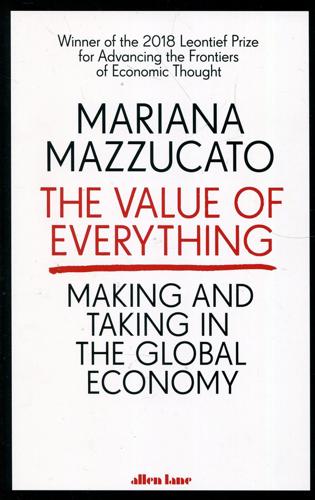
Value of Everything: An Antidote to Chaos The
by
Mariana Mazzucato
Published 25 Apr 2018
Financialization of the Real Economy The Buy-back Blowback Maximizing Shareholder Value The Retreat of ‘Patient' Capital Short-Termism and Unproductive Investment Financialization and Inequality From Maximizing Shareholder Value to Stakeholder Value 7. Extracting Value through the Innovation Economy Stories about Value Creation Where Does Innovation Come From? Financing Innovation Patented Value Extraction Unproductive Entrepreneurship Pricing Pharmaceuticals Network Effects and First-mover Advantages Creating and Extracting Digital Value Sharing Risks and Rewards 8. Undervaluing the Public Sector The Myths of Austerity Government Value in the History of Economic Thought Keynes and Counter-cyclical Government Government in the National Accounts Public Choice Theory: Rationalizing Privatization and Outsourcing Regaining Confidence and Setting Missions Public and Private Just Deserts From Public Goods to Public Value 9.
…
Baumol termed ‘unproductive entrepreneurship'. Third, in the way that prices of innovative products do not reflect the collective contribution to the products concerned, in fields as diverse as health, energy or broadband. And fourth, through the network dynamics characteristic of modern technologies, where first-mover advantages in a network allow large economies to reap monopolistic advantages through economies of scale and the fact that customers using the network get locked in (finding it too cumbersome or disadvantageous to switch service). The chapter will argue that the most modern form of rent-seeking in the twenty-first-century knowledge economy is through the way in which risks in the innovation economy are socialized, while the rewards are privatized.
…
Technological risks, for instance, can increase with the complexity of the target (e.g. going to the moon, solving climate change) or the paucity of knowledge within the organizations involved.3 The longer the time required to devise certain solutions, the greater the chance of a competitor reaching the market first, establishing what are known as first-mover advantages. Additional risks that militate against recouping the initial investment or the viability of the business include spillover effects (an event brought on by an apparently unrelated event elsewhere); the lack of demand for goods even if they make it to the market; investors' exposure to labour or tax problems; and changing economic conditions.

The End of College: Creating the Future of Learning and the University of Everywhere
by
Kevin Carey
Published 3 Mar 2015
Since the seed round is usually followed by further rounds of investment, the initial dollars buy only a fraction of the entire company, which means Minerva was implicitly being valued in the hundreds of millions of dollars before it even existed in tangible form. Nelson’s pitch was that he was going to make enough money to justify that valuation by serving the huge, pent-up demand for elite American universities. People in Silicon Valley talk about “first-mover advantage,” in which the first business entering a new market gains so many customers that competitors can never catch up. Elite American research universities experienced first-mover advantage on a historical scale. Harvard, Princeton, and Yale were on top of the heap in 1790, 1890, and 1990, and they’re still there today. As time went by and their alumni moved into positions of wealth and power, their endowments of reputation, social capital, and hard money grew.
…
At the time, Cisco was about to become the most valuable company in the world. The dot-com boom dominated the popular press, with stories of overnight billionaires thrilling the masses. In 1998, Columbia University began working on an ambitious plan called “Fathom” to sell college courses over the World Wide Web. Launched in 2000, Fathom.com was an attempt to gain first-mover advantage in what Columbia believed would be a multibillion-dollar market for higher education. At the time, Columbia was making more money from patent royalties than any other research university in America. This, university administrators believed, was an opportunity to similarly monetize Columbia’s prestigious brand and intellectual resources.
…
When an educational institution becomes grotesquely swollen with money, pawed at by tourists, possessed of an immensely valuable brand name the popular meaning of which it can’t control and the benefits of which it cannot bestow on nearly everyone who wants them, the pressures of that threaten to distort and split the place open at the seams. Harvard was never meant to be this wealthy or important. It all happened more inadvertently than anyone imagines, a combination of first-mover advantage, just the right sequence of industrialization and globalization, Cold War government spending, the rise of the information economy, and not getting bombed into rubble during World War II. But Real Harvard continued getting richer even as Imaginary Harvard grew larger and weirder and more important, because the hybrid university severely restricts your freedom of movement, and really there was nothing else to do.

Without Copyrights: Piracy, Publishing, and the Public Domain (Modernist Literature and Culture)
by
Robert Spoo
Published 1 Aug 2013
The major publishers had an additional strength, however; they enjoyed what economists call first-mover advantage. Because of their size and resources, the large houses were able to obtain advance sheets or early proofs of foreign books just ahead of publication abroad. Profits lay in being first to the American market with new titles, and a head start of only a few days could mean the difference between success and failure.168 While publishers could rely on courtesy to restrain their respectable competitors, first-mover advantage was necessary to steal a march on the cheap Ishmaelites. The combination of courtesy and first-mover advantage was the key to profits.
…
This ingenious and elaborate system of rights and remedies ultimately rested on a legal void—the legislated absence of copyrights for foreign authors—and served to mitigate, though not wholly to avert, a public goods problem that threatened to destroy incentives to invest in the dissemination of uncopyrighted works by foreign authors. The Persistence of Pirates: First-Mover Advantages and the Second Public Domain At the edges of trade courtesy there were always eager opportunists. Sometimes they were extremely aggressive and numerous, especially during the publishing wars of the 1830s–40s and 1870s–80s when cheap books and inexpensive modes of distribution made the reprinting of unprotected foreign works irresistibly attractive to many firms.
…
At the end of that time the pirate has caught up with him, published the book in a cheap form, and made the authorized edition unprofitable.171 An advantage of days or even hours was critical to these ventures. In this respect, nineteenth-century American publishers ran risks similar to those faced today by fashion designers, who likewise lack copyright protection in their creations and are menaced by rapid free riding. Discussing first-mover advantages in the fashion industry, Kal Raustiala and Christopher Sprigman note that in the short interval between the appearance of new fashion designs and the activities of copyists, design originators can “gain the the lion’s share of revenues from their designs and will continue to engage in innovation.”172 Similarly, it was the brief period between authorized publication and piracy, supplemented by the protections of courtesy, that allowed Putnam, Holt, Appleton, and other major houses to earn their profits.

Bold: How to Go Big, Create Wealth and Impact the World
by
Peter H. Diamandis
and
Steven Kotler
Published 3 Feb 2015
In the first six days of the project, we saw more than one million images reviewed and more than 400,000 asteroids classified. There’s a corollary here: If you don’t have first-mover advantage, then ask yourself what new and exciting twist you are bringing to the table. Think about CrossFit. The health and fitness space was exceptionally crowded when this workout craze was introduced, but CrossFit leveraged two facts: People work harder when they’re in a group of peers, and outside of yoga, there were no fitness classes aimed directly at men. So while CrossFit lacked a first-mover advantage, their distinguishing elements were new (no other game in town) and exciting (you get a better workout), and that was more than enough to build upon.
…
Hull constructed his first 3-D printer in 1984, then founded the Valencia, California–based 3D Systems10 to develop and commercialize the technology. Unfortunately, this was not easy. Over the next twenty years, development was slow (deceptive), incredibly expensive, and burdened with complicated user interfaces. All three factors prevented widespread adoption. By the early 2000s, despite their enormous first mover advantage, 3D Systems was on the verge of bankruptcy. “The company was a train wreck,” says Avi Reichental.11 “They had lost sight of the fact that their technology was accelerating exponentially. They had forgotten how to innovate.” And Reichental would know, as he was the person brought in to save the company.
…
“It might sound like science fiction, but the first steps toward making it a reality are happening in our lab right now, and aboard the ISS.” What does this all mean? It means that while Made in Space started off disrupting a billion-dollar spare parts industry, the exponential growth curves that underpin their business model lead them directly toward first mover advantage in the multitrillion-dollar industry that will eventually be off-world living. A Toy Story Perhaps you’re thinking Made in Space is more the entrepreneurial exception than the rule. After all, Kemmer, Dunn, and Chen might not have known much about 3-D printing, but they were already students at Singularity University, giving them both access to the technology (there are 3-D printers on site) and exposure to all these exponential ideas.
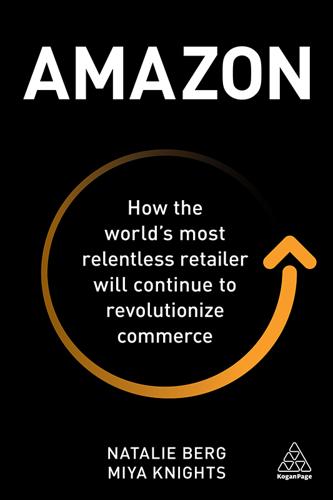
Amazon: How the World’s Most Relentless Retailer Will Continue to Revolutionize Commerce
by
Natalie Berg
and
Miya Knights
Published 28 Jan 2019
Either way, the initial launch of the Echo voice-enabled device, followed by the revamped and expanded line of Echo devices it unveiled at the end of 2017, demonstrate a real differentiator for Amazon as well as the culmination of its flywheel strategy, which is based on its three pillars that are, in turn, built on the three global drivers of technology development, and which facilitate more and more frictionless retailing experiences. First-mover advantage While the voice assistant device market is still in its early stages of development, Amazon has already consolidated its first-mover advantage, enabling its users to watch web videos (with Fire TV), turn on kitchen timers, listen to music, check the weather and, of course, shop on Amazon – all using just their voice. It also cut the cost of its premium Echo device to $100 from $180 at the end of 2017 – all with the aim of positioning its voice devices as so indispensable that it is able to embed itself ever more firmly into its customers’ homes.
…
Available from: https://www.nytimes.com/2018/05/25/business/amazon-alexa-conversation-shared-echo.html [Last accessed 10/6/2018]. 11 Store of the future: how digital automation will enrich the customer experience ‘It’s data with heart. We’re taking the data we have and we’re creating physical places with it.’ Jennifer Cast, vice president of Amazon Books, 20151 We’ve seen how Amazon’s technology innovation and first-mover advantage have given it the edge online with the development of its e-commerce services and functionality, as well as in the home, through its various hardware devices and Alexa voice assistant. Here, Amazon has used digital shopping tools applied with AI-based capabilities to remove the friction from online shopping and personalize the experience with tailored recommendations.
…
Like the in-home delivery, customers are given a four-hour delivery window.30 It remains to be seen whether either in-home or in-car delivery proves popular enough to overcome any privacy and security concerns. But, as an extension of the locker concept and its last-mile advantages, Amazon has been developing the requisite technology for several years and can exploit a first-mover advantage. Future developments could see it capitalize on alliances it may forge to embed its Alexa voice assistant into car operating systems. The final frontier, as far as Amazon’s journey to fulfil orders ever faster is concerned, is drone technology. Jeff Bezos revealed plans to commercialize drone delivery at the end of 2013.

The Automatic Customer: Creating a Subscription Business in Any Industry
by
John Warrillow
Published 5 Feb 2015
Power & Associates, 186–87 Jobs, Steve, 57 Kassensturz, 88 Kava, Jordana, 93–94 Kelly, Patrick, 35–36, 96, 164 Kerber, Tim, 49 Kirkpatrick & Hopes, 168–70 Klein, Bernard, 93 Køge, 24–25 Koum, Jan, 2, 113 K-Tipp, 88 LA Fitness, 180 laptops, 116 Lapwood, Nev, 171 large companies, 188–89, 194 lawn care, 104 Levine, Mark, 81–83, 87 Liechti, Samy, 83 LifeLock, 140 lifetime value (LTV), 128, 130, 138, 139, 142–43, 146, 151, 173 Ancestry.com and, 136 Constant Contact and, 137 HubSpot and, 133–34 Mosquito Squad and, 138 light-switch reliability, 19–20, 22 Lindt, 93, 94 LinkedIn, 19, 63, 140 Lippitt, Robb, 51 logo churn, 191–93 LoJack Stolen Vehicle Recovery System, 116 long tail, 21–22 Long Tail, The (Anderson), 16, 21 Lore, Marc, 84–85 Luciani, Patrick, 70 Lynda.com, 59 magazines, 16–17, 193 margin, 131–32 Ancestry.com and, 136 HubSpot and, 133–34 Mosquito Squad and, 138 MarketingSherpa, 52, 53 market research, 34–36 Martella, Roberto, 70 Matrix Partners, 129 McCabe, Kathy, 48–49 McDerment, Mike, 27, 144–48, 163 McGrath, Rob, 68 measuring progress, 125–34 Meeker, Matt, 19, 92 MemberGate, 49 membership website model, 47–55 Mequoda Group, 61, 154, 161, 179 messaging services, 2 WhatsApp, 1–2, 108–9, 113, 157 Microsoft, 22 Office, 24 Project, 146n Windows, 57 millennial generation, 18 MMORPGs (massively multiplayer online role-playing games), 111–12 monthly recurring revenue (MRR), 128, 139, 143, 149, 174 Ancestry.com and, 135, 136 CAC payback period and, 140–43 churn rate and, see churn rate Constant Contact and, 136, 137 HubSpot and, 132, 133–34, 135, 149 Mosquito Squad and, 138 SnowboardAddiction.com and, 171 Wild Apricot and, 189–91 Morningstar, 11, 12 Mosquito Squad, 31–32, 103–4, 138, 153–54, 197 Murdoch, Rupert, 16 music business, 57–58 Myspace, 146n National Dance Council of America, 49–50 Nelson, Perry, 165, 171–72, 178–79 Netflix, 35, 59, 63, 154, 155, 159, 166 NetSuite.com, 189 network model, 107–14 New Masters Academy, 59–62, 155, 166 newspapers, 16–17 New York Times, 17, 48, 82 Nicely Noted, 165, 171–72, 178–79 Nicholas, Don, 61, 154, 161, 179 Nightingale Conant, 66 Nike, 89 Nimsoft, 141–42 O’Brien, Chris, 187 onboarding, 132, 140, 142 90-day clock and, 176–82 One Wipe Charlies, 192 online reputation, 117 Onvia, 17 Osler Bluff, 162 Otis, 40 Outdoor Living Brands, 32 Oyster, 59 Panda, Sonu, 33, 158, 197 PayPal, 19 peace-of-mind model, 115–22 pets, 91–92 BarkBox and, 19, 92, 95, 165, 187 PetShopBowl.com and, 38 Tagg and, 115 PetShopBowl.com, 38 pharmacies, 31 photo printing, 156–57 Piranha Marketing System: The Seven Success Multiplying Factors to Dominate Any Market You Enter (Polish), 66 Pitney Bowes, 178 Plugg, 157 Polish, Joe, 66–67, 155 Portrait Software, 178 prioritizing customers, 75 private club model, 65–72 Private Retreats, 68 Procter & Gamble (P&G), 192 productivity applications, 100 profit-and-loss (P&L) statement, 125–28, 138 publishing, 16–17 QSS Group, 101 Qualcomm, 115 Quickbooks, 146n Quidsi, 15, 86 Radian6, 117 radioactive waste and devices, 36–37 Ravindran, Vijay, 12 razor blade business: Dollar Shave Club, 81–83, 84, 87–89, 157, 175–76, 192–93 Raz*War, 157–58, 193, 194 Raz*War, 157–58, 193, 194 Rdio, 58, 155 recession, 39–41 recurring revenue, 4, 6, 78, 104, 128 see also monthly recurring revenue reliability, 19–20, 22 “Renegotiation of Cash Flow Rights in the Sale of VC-Backed Firms” (Broughman and Fried), 147 RestaurantOwner.com, 49 Revolution Dancewear, 50–52 Rhapsody, 58 risk, 119–20, 121 RoleView, 150, 192 roof business, 118–20 Rosen, Lori, 88 Roth, Marcel, 83 Royal Melbourne Golf Club (RMGC), 65–66, 72 Running Room, 13 social status, 68, 69 SafetyNet, 116 sales approaches, 134–38 Salesforce.com, 18, 19, 74–75, 117, 159, 176 salespeople, 135, 167 Salon Speaker Series (Grano Speaker Series), 70–71, 159 scaling up, 171–94 Schwietzer, Robbie, 13 self-employed individuals, 188–89 Sellability Score.com, 3–4, 28, 31, 132, 149, 176, 182 selling subscriptions, see subscription selling “sharing” economy, 18–19 simplifier model, 99–105, 121 Site24x7.com, 117 skiing, 162 Skok, David, 129–30, 131, 150, 151, 185 Snaptracs, 115 SnowboardAddiction.com, 171 social proof, 67 socks: Blacksocks, 83, 84, 88, 151 Foot Cardigan, 165 software industry, 29–32, 74–75, 125–26 Spagnuolo, Marc, 47 SpicySubscriptions.com, 91 Spotify, 58 Springwise, 157 Standard Cocoa, 22, 93–94, 165 StitchFix, 91 Stone, Brad, 85 Strife, Carly, 92 strivers, 72 Stuart Hunt & Associates, 36–37 subscription economy, 11–25 competing in, 22–24 subscription models: all-you-can-eat library, 57–63 automatic payments in, 36–37 business valuation and, 28–32 challenges of adopting, 41–43 consumables, 81–90 convincing employees and partners about merits of, 168–69 customer loyalty and, 38 demand and, 33–34 front-of-the-line, 73–79 history of, 15–18 lifetime value of customer in, 32–33 market research and, 34–36 measuring progress in, 125–34 membership website, 47–55 need for, 27–43 network, 107–14 peace-of-mind, 115–22 private club, 65–72 recession risk and, 39–41 renaissance of, 18–22 sales approaches for, 134–38 simplifier, 99–105, 121 surprise box, 91–98 up-selling in, 38–39 using in your own business, 122 subscription selling, 153–70 burning platform strategy in, 166–67 freemium option in, 161–62, 164 gift offers in, 164–66 rational buying and, 157–59 subscription fatigue and, 154 10x vs. 10% idea in, 155–57 trial in, 161–64 ultimatum in, 159–60 Subscription Site Insider, 52, 53 surfing, 182–83 surprise box model, 91–98 swimming pools, 104 Tagg, 115 Tarence, Zen, 29–30 Target, 13, 89 Subscriptions, 15 TechCrunch, 157 technology, 99 telephone, 107–8 telephone sales, 135 The Live Event (TLE), 53 37signals, 144, 145–46 Thriveworks, 75–77 TIGER 21, 67–68, 72, 149, 159 Time Warner Cable, 23 TrendHunter.com, 91–92 trial offers, 161–64 Tri-State Elevator Co., 40–41 Trojan Horse, 94–95, 98 Twitter, 61, 63, 108, 117 ultimatums, 159–60 underwriting profit, 117, 118 user marketing, 108–9 vacation industry, 68–70, 73–74 Vagonis, Jim, 102–3, 181 valuation of businesses, 28–32 venture capital, 147–48, 151 viability threshold, 129–30 Volcker, Paul, 70 Wall Street Journal, 17, 48, 188 Walmart, 13, 84, 89 Goodies Co., 20–21, 35 Warrillow & Co., 5–6 website monitoring, 117 Wells Fargo, 126 Werdelin, Henrik, 92 WhatsApp, 1–2, 108–9, 113, 157 WhichTestWon.com, 52–53 Whiteman, Brian, 156 Whiteman, Julie, 156 Wild Apricot, 29, 184–85, 189–91 Wired, 16 Women’s Living, 179 Woodward, Bob, 71 Wood Whisperer Guild, 47 Workday, 135 World of Warcraft, 111–12 WP Engine, 177 Wunderlist, 100 Yoga Journal, 179 Zendesk, 77, 79, 163 Zide, Scott, 32 Zipcar, 19, 109–11, 113, 153 * The “first mover advantage” concept is severely overhyped. Before there was FreshBooks, there was QuickBooks, before we had Basecamp we had Microsoft Project, and before Facebook there was Myspace. Most winning companies take a proven model and make it better, so you may want to ask yourself some hard questions before using “first mover advantage” as your justification for seeking outside capital. Looking for more? Visit Penguin.com for more about this author and a complete list of their books.
…
Absolute Software, 116 access generation, 18–19, 22 accountants, 169 Acton, Brian, 2, 113 ADT, 116 Airbnb, 19 airplanes, 175 all-you-can-eat library model, 57–63 Amazon, 11–15, 84, 87, 89, 90 AmazonFresh, 14 Diapers.com acquired by, 15, 84–86 Mom, 85 Prime, 11–13, 14, 37, 84, 188 Subscribe & Save, 14–15, 25, 84 Web Services, 15 Ancestry.com, 30–31, 58–59, 135–36, 159, 163–64 Anderson, Chris, 16, 21 Any.do, 100 Apple, 22, 100 iPhone, 1, 19 iTunes, 57–58, 154 Joint Venture, 22–23, 79 One to One, 22, 23 Reseller network, 23 art education, 59–60 New Masters Academy, 59–62, 155, 166 Art Snacks, 187–88 Auger, Frank, 180–81 Avis Budget Group, 111 banking, 100, 177–78, 186–87 Bank of America, 126 BarkBox, 19, 92, 95, 165, 187 Barna, Haley, 39 Basecamp, 144, 145–46 Beauchamp, Katia, 39 Berkshire Hathaway, 118 Bessemer Venture Partners (BVP), 140–41 Bezos, Jeff, 14, 86, 145 Bharara, Vinit, 84–85 BirchBox, 38–39, 88, 172 Blackburn, Jeff, 85 Blacksocks, 83, 84, 88, 151 Blake, Kathy, 49–52, 197 Blake, Suzanne, 50–52, 197 Blockbuster, 59 Bloodhound Technologies, 147 Bloomberg Businessweek, 58, 85 Blue Dolphin, 179–80 Brand, Stewart, 47–48 brand, unique, 87, 89, 90 Branson, Richard, 67 Broughman, Brian, 147 Buffet, Warren, 118 Built to Sell: Creating a Business That Can Thrive Without You (Warrillow), 3 Burkhart, Bryan, 33, 197 burning platform strategy, 166–67 business-to-business (B2B) companies, 55, 69, 158 Buterin, Dmitry, 29, 184–85, 190 cancellations, see churn rate Capital Factory, 142, 173 Carsanaro, Joseph A., 147 car sharing, 109 Zipcar, 19, 109–11, 113, 153 car theft, 116 Case, Steve, 69 cash, 138, 139–43 cash sources, 143–51 charging up front, 148–51 outside money, 146–48 robbing Peter to pay Paul, 143–46 CA Technologies, 141–42 CBS MarketWatch, 88 Centore, Anthony, 76–77 charging up front, 148–51, 184–85 Chase, Robin, 109, 113 chocolate, 93–94 Standard Cocoa, 22, 93–94, 165 churn rate, 130–31, 142–43, 172–74 Ancestry.com and, 136 and charging up front, 184–85 communication and, 185–87 Constant Contact and, 137 evergreen subscriptions and, 193–94 happiness bombs and, 187–88 Hassle Free Home Services and, 173 HubSpot and, 133–34, 180 logo churn and, 191–93 lowering, 174–94 Mosquito Squad and, 138 net churn and, 189–91 90-day onboarding clock and, 176–82 rogue jet concept and, 175–76 Salesforce.com and, 176 and targeting larger businesses, 188–89 wow timetable and, 182–84 Cisco, 117 Coca-Cola, 89 Cohen, Jason, 177 Cohen, Ted, 58 cohorts, 182 Colony, George F., 150–51 communication, 185–87 Conscious Box, 35–36, 86, 95–96, 164 Constant Contact, 18, 136–37, 183–84 consumables model, 81–90 Consumer Intelligence Research Partners, 11 ContractorSelling.com, 35, 49 cost of goods sold (COGS), 132 counseling, 75–77 Cratejoy, 86, 96–97 Crisara, Joe, 35 cross-selling, 191–93 Cue, 100 customer acquisition cost (CAC), 128–30, 138, 139, 143, 146, 151, 189 Ancestry.com and, 136 cash up front and, 148–51 Constant Contact and, 137 HubSpot and, 133–34, 149–50 Mosquito Squad and, 138 payback period and, 140–43 Crystal Cruises, 50 DanceStudioOwner.com, 49–52, 197 Dance Teachers’ Club of Boston, 49 Danielson, Antje, 109, 113 data, 20–21, 22, 96–97 Daugherty, Gordon, 141–42, 173 demand, 33–34 De Nayer, Pierre, 158 Desk.com, 77 destination clubs, 68–70 Diapers.com, 15, 84–86 discounted cash flow, 28 distribution channels, 20 DocuSign, 140 Dollar Shave Club, 81–83, 84, 87–89, 157, 175–76, 192–93 Dorco, 88–89 Dream of Italy, 48–49 Driesman, Debbie, 101 Dropbox, 100 Dubin, Michael, 81–83, 87 e-commerce: consumables model, 81–90 surprise box model, 91–98 Economist Intelligence Unit, 25 Elaguizy, Amir, 86–87, 96 elevator business, 40–41 Entitle, 59 entrepreneurs, 129 eReatah, 59 evergreen subscriptions, 193–94 Everything Store, The: Jeff Bezos and the Age of Amazon (Stone), 85 Exclusive Resorts, 68–69 Facebook, 2, 19, 108, 146n New Masters Academy and, 61, 62 Family Circle, 179 Financial Times, 17, 48 first mover advantage, 146n float, 118–19 flower stores, 32–33, 34, 158–59, 195–96 H.Bloom, 33, 34, 39, 158–59, 197 Foot Cardigan, 165 For Entrepreneurs, 129 Forrester Research, 150–51, 192 Founders Investment Banking, 29–30 freemium model, 161–62, 164 free trials, 161–64 FreshBooks.com, 27, 144–48, 162–63, 164, 189 Fried, Jason, 144, 145–46 Fried, Jesse, 147 front-of-the-line model, 73–79 GameFly, 59, 155 Gartner and Forrester Research, 5, 24 Gates, Bill, 67 Generally Accepted Accounting Principles (GAAP), 127 Genius Network, 66–67, 155 Gerety, Suzanne Blake, 50–52, 197 Ghirardelli, 93 gifts: happiness bombs, 187–88 subscriptions as, 164–66 Gladwell, Malcolm, 71 Godiva, 93 Goodies Co., 20–21, 35 Goodman, Gail, 136, 183–84 Google, 55, 92 Apps, 24 Grano Speaker Series, 70–71, 159 Gray, Andrew, 168–70 Griffith, Scott, 109–10, 111, 113 Griffiths, Rudyard, 70 GrooveBook, 156–57 Hackers Conference, 47 Handler, Brad, 69 Handler, Brent, 69 Hansson, David Heinemeier, 144 happiness bombs, 187–88 Harland Clarke, 178 Hassle Free Home Services, 101–3, 173, 181, 194 H.Bloom, 33, 34, 39, 158–59, 197 Hearst, William Randolph, 16 Herbal Magic Weight Loss & Nutrition Centers, 24–25 Holland, Anne, 52–54 home ownership, 18 Hassle Free Home Services and, 101–3, 173, 181, 194 security businesses and, 4, 31, 116 Honda, 117 HubSpot.com, 131–36, 149–50, 180–81 Hunt, Sean, 37 Hunt, Stuart, 37 Hyssen, Alex, 24–25 Hyssen, James, 24–25 IBM, 126 inertia, 175, 180–81 information, 47–48 Infusionsoft, 176 Inspirato, 69–70 insurance companies, 117–19 International Air Transport Association, 175 Internet, 16, 137 reliability of, 19 Internet-based messaging services, 2 WhatsApp, 1–2, 108–9, 113, 157 iPhone, 1, 19 Islam, Frank, 101 iTunes, 57–58, 154 JackedPack, 91 Jacobo, Joshua, 59–62, 155 J.
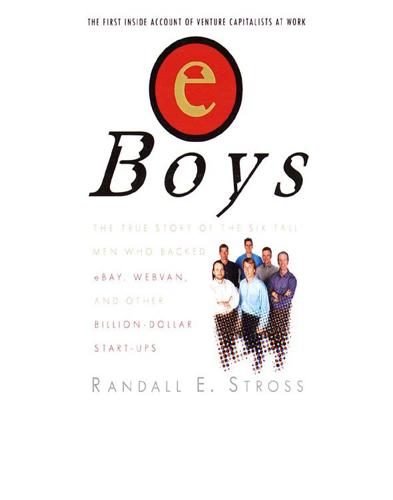
eBoys
by
Randall E. Stross
Published 30 Oct 2008
Entrepreneurs do not have the luxury of holding a basket of eggs, however; their egg, usually their only egg, must not break. Often the biggest threat to the embryo is not adult birds of prey, the entrenched competition from the Fortune 500, but rather carnivorous fledglings, fellow start-ups, some of which will have first-mover advantages and perhaps better capitalization. In eBay’s case, at the time it was still sitting in the nest and Benchmark had invested in it, The Economist estimated that there were more than 150 online auction sites on the Web. One of those was far ahead of the rest, backed by Kleiner Perkins, and was already a public company with a market capitalization of about $175 million.
…
“I think he’s still shackled by the specter of his small-thinking father,” Dunlevie said. “The guy just has no frame of reference on what he’s doing. Like coming out of the analog marketplace and stumbling into the digital world.” But there were positive aspects to artuframe’s story too, and it was not too late to act. Dunlevie continued, “Nobody has first-mover advantage in this category yet. Whoever raises capital, with some good advice and recruiting, is going to win, I believe. How big the sector is, I don’t know.” However, the art business looked better than that of Sparks, Kagle’s greeting-cards-online company. “The average selling prices are twenty-X higher.”
…
“And was pretty constructive about it, right?” Dunlevie followed up. “Yeah, very, actually.” “Those good Midwest values,” Dunlevie said. Kagle noted other encouraging details about Lederer’s handling of the crisis. “He went right into full gear. He also said, ‘I’m positive I could get traction and first-mover advantage with this thing. And if in twelve months you think there’s a better guy to run it, I’ll help you find him.’ I said, ‘What if it’s six months, Bill?’ He said that would be okay, too.” Kagle had also called Intuit’s Scott Cook, whom he knew from eBay board meetings and who also sat on Amazon’s board, to get Amazon to take a look and either consider investing or acquiring the company, providing artuframe with a soft landing.
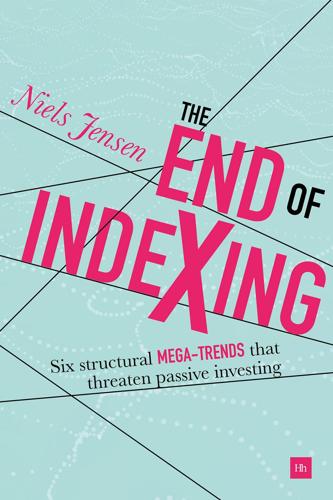
The End of Indexing: Six Structural Mega-Trends That Threaten Passive Investing
by
Niels Jensen
Published 25 Mar 2018
The world will change dramatically as a result of advanced robotics, but is it for the better or worse? I have come across estimates suggesting that robots will take over nearly 50% of all manufacturing jobs and shave $9 trillion off labour costs within a decade24. Whether these numbers are accurate, only time can tell, but the trend is clear, and the driver is first mover advantage. Those countries that don’t embrace the new technology will simply be left behind, such are the advantages, but more on this in chapter 10. The impact on inflation – the two extremes Let’s revisit BofAML’s projection that 50% of all manufacturing jobs will be lost between now and 2025. That could potentially raise unemployment levels quite dramatically and, by implication, increase the economic slack, which would almost certainly put further downward pressure on inflation.
…
BofAML’s research analysts argued that robots will take over nearly 50% of all manufacturing jobs and shave $9 trillion off labour costs within a decade. I don’t know enough about robots to argue for or against those numbers and the suggested timeline of it all, but the trend is clear, and the driver is first mover advantage. As this is highly likely to happen concurrently with the other structural trends that are reviewed in this book, most of which will further slow economic growth, it is quite possible that history may not repeat itself. In the past, not one technological advance has led to rising unemployment.
…
Automation In the eyes of many investors, an increased use of advanced robotics in the years to come is what is going to have the biggest positive impact on productivity. In chapter 9, I referred to BofAML’s research paper from 2015 on advanced robotics87, and I pointed out that the driver is first mover advantage. Take the car manufacturing industry. At the time of BofAML’s paper, an American spot welder was paid on average about $25 per hour. A robot could do the same job for $8 an hour (all in). Those countries that don’t embrace the new technology will simply be left behind, such are the advantages, argue the researchers from BofAML (exhibit 10.2).

The Innovation Illusion: How So Little Is Created by So Many Working So Hard
by
Fredrik Erixon
and
Bjorn Weigel
Published 3 Oct 2016
Market deregulation helped to accelerate the diffusion of new technologies, making it easier for a company to take an innovation to market and for a user to adopt it.35 Moreover, changes in product market regulation reduced the capacity of companies to use market power such as first-mover advantage to limit innovation competition or to block markets to new entrants.36 Even in markets that have become more concentrated in recent phases of globalization, the spirit of competition brought by deregulation has been maintained and continues to limit the role of first-mover advantage. The flip side of the coin is that the rate of knowledge obsolescence – how fast new knowledge or an innovative product becomes obsolete – has increased rapidly as well, meaning that the capacity of companies to naturally dominate markets on the back of past innovation has weakened.
…
12.OECD, Businesses’ Views on Red Tape. 13.Olson, The Logic of Collective Action. 14.Sellar and Yeatman, 1066 and All That. 15.This anecdote is from Diamandis and Kotler, Abundance. 16.Acemoglu and Robinson, Why Nations Fail. 17.Downes, “Fewer, Faster, Smarter.” 18.Goodwin, “The History of Mobile Phones.” 19.Rogers and Ramsey, “Tesla to Stop Selling Electric Cars in New Jersey.” 20.Lepore, “How Santa Monica Will Enforce Its Airbnb Ban.” 21.Coldwell, “Airbnb’s Legal Troubles.” 22.Tabarrok, “Book Review: ‘Innovation Breakdown’.” 23.Gulfo, Innovation Breakdown. 24.Kay, “Miracles of Productivity Hidden in the Modern Home.” 25.Erixon, “EU Policies on Online Entrepreneurship.” 26.Tabarrok, “Book Review: ‘Innovation Breakdown’.” 27.CSDD, “Growing Protocol Design Complexity.” 28.Grabowski and Hansen, “Cost of Developing a New Drug.” 29.Herper, “The Truly Staggering Cost of Inventing New Drugs.” 30.Roy, “Stifling New Cures.” 31.CSDD, “Growing Protocol Design Complexity.” 32.Basu and Hassenplug, “Patient Access to Medical Devices.” 33.That figure is for 2010 when one of the authors was given a guided tour of the FedEx hub. 34.Button and Christensen, “Unleashing Innovation.” 35.Comin and Hobijn, “Technology Diffusion and Postwar Growth.” 36.Agarwal and Gort, “First-Mover Advantage.” 37.Jaffe and Trajtenberg, Patents, Citations and Innovations. 38.Mansfield, “How Rapidly Does New Industrial Technology Leak Out?” 39.Lanjouw, “Patent Protection in the Shadow of Infringement.” 40.Baumol, The Free Market Innovation Machine. 41.Comin and Hobijn, “An Exploration of Technology Diffusion.” 42.Arnold, Nicoletti, and Scarpetta, “Regulation, Resource Reallocation and Productivity Growth.” 43.Thiel with Masters, Zero to One. 44.Frey and Osborne, “Technology at Work: The Future of Innovation and Employment.” 45.Anders, “WhatsApp’s Growth Exceeds Christianity’s First 19 Centuries.” 46.Gerschenkron, Economic Backwardness in Historical Perspective. 47.Brown, “Nowhere in the World Uses Mobile Banking as Much as Africa.” 48.Aeppel, “50 Million Users.” 49.Hannemyr, “The Internet as Hyperbole.” 50.Chicago Tribune, “Wis.
…
Adams, Douglas, The Hitchhiker’s Guide to the Galaxy. DavCom, 2014. Aeppel, Timothy, “50 Million Users: The Making of an ‘Angry Birds’ Internet Meme.” Wall Street Journal, Mar. 20, 2015. At http://blogs.wsj.com/economics/2015/03/20/50-million-users-the-making-of-an-angry-birds-internet-meme/. Agarwal, Rajshree, and Michael Gort, “First-Mover Advantage and the Speed of Competitive Entry, 1887–1986.” Journal of Law and Economics, 44.1 (2001): 161–77. Ahmad, Majeed, Nokia’s Smartphone Problem: The End of an Icon? CreateSpace, 2013. Ahmed, Rasin, “Quantum Dots: The Pros and Cons in PV.” Pv magazine, Feb. 1, 2013. At http://www.pv-magazine.com/archive/articles/beitrag/quantum-dots--the-pros-and-cons-in-pv-_100010173/572/#axzz49xMM76ZT.
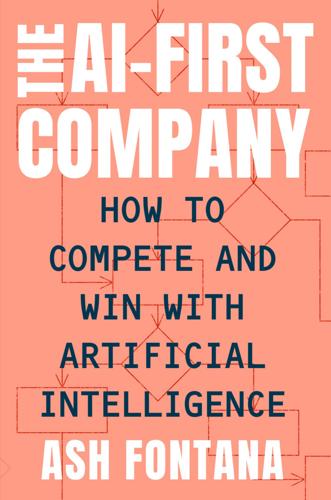
The AI-First Company
by
Ash Fontana
Published 4 May 2021
For example, a product that predicts what inventory to order needs inventory data from the system of record to train models generating predictions. Where there isn’t a precursor product—a system of record holding the data—then building that workflow product and giving it away for free to get the data could more deeply embed the AI-First product. First-Mover Advantage Getting to market first is a way to build a competitive advantage, albeit one that’s debated in the field of management strategy. However, it is of peculiar application to AI-First startups: the pros are powerful, and the cons don’t apply. First movers collect scarce assets, build technological leadership, and create switching costs before competitors.
…
Data moves between products in an ecosystem so compatibility with other products can help new entrants get data into their own product that can then be used to train an AI. Support complements. Third parties can create complementary products that contribute data to an ecosystem, ultimately delivering more value to customers. First-mover advantage works well for AI-First companies. The pros are powerful, and the cons don’t apply. Accumulating data before competitors do kicks off the DLE, building an unassailable head start. AI-First companies have unique brand-building powers. Intelligent systems can analyze large amounts of product-usage data to personalize products at scale.
…
A/B test, 271 accessibility of data, 72, 107 accuracy, 175, 203–4 in proof of concept phase, 59–60 active learning-based systems, 94–95 acyclic, 150, 271 advertising, 227, 240 agent-based models (ABMs), 103–5, 271 simulations versus, 105 aggregated data, 81, 83 aggregating advantages, 222–65 branding and, 255–56 data aggregation and, 241–45 on demand side, 225 disruption and, 239–41 first-mover advantage and, 253–55 and integrating incumbents, 244–45 and leveraging the loop against incumbents, 256–61 positioning and, 245–56 ecosystem, 251–53 staging, 249–51 standardization, 247–51 storage, 246–47 pricing and, 236–39 customer data contribution, 237 features, 238–39 transactional, 237, 281 updating, 238 usage-based, 237–38, 281 on supply side, 224–25 talent loop and, 260–61 traditional forms of competitive advantage versus, 224–25 with vertical integration, see vertical integration aggregation theory, 243–44, 271 agreement rate, 216 AI (artificial intelligence), 1–3 coining of term, 5 definitions and analogies regarding, 15–16 investment in, 7 lean, see Lean AI AI-First Century, 3 first half of (1950–2000), 3–9 cost and power of computers and, 8 progression to practice, 5–7 theoretical foundations, 4–5 second half of (2000–2050), 9 AI-First companies, 1, 9, 10, 44 eight-part framework for, 10–13 learning journey of, 44–45 AI-First teams, 127–42 centralized, 138–39 decentralized, 139 management of, 135–38 organization structure of, 138–39 outsourcing, 131 support for, 134–35 when to hire, 130–32 where to find people for, 133 who to hire, 128–30 airlines, 42 Alexa, 8, , 228, 230 algorithms, 23, 58, 200–201 evolutionary, 150–51, 153 alliances of corporate and noncorporate organizations, 251 Amazon, 34, 37, 84, 112, 226 Alexa, 8, 228, 230 Mechanical Turk, 98, 99, 215 analytics, 50–52 anonymized data, 81, 83 Apple, 8, 226 iPhone, 252 application programming interfaces (APIs), 86, 118–22, 159, 172, 236, 271 applications, 171 area underneath the curve (AUC), 206, 272 artificial intelligence, see AI artificial neural network, 5 Atlassian Corporation, 243 augmentation, 172 automation versus, 163 availability of data, 72–73 Babbage, Charles, 2 Bank of England, 104–5 Bayesian networks, 150, 201 Bengio, Yoshua, 7 bias, 177 big-data era, 28 BillGuard, 112 binary classification, 204–6 blockchain, 109–10, 117, 272 Bloomberg, 73, 121 brain, 5, 15, 31–32 shared, 31–33 branding, 256–57 breadth of data, 76 business goal, in proof of concept phase, 60 business software companies, 113 buying data, 119–22 data brokers, 119–22 financial, 120–21 marketing, 120 car insurance, 85 Carnegie, Andrew, 226 cars, 6, 254 causes, 145 census, 118 centrifugal process, 49–50 centripetal process, 50 chess, 6 chief data officer (CDO), 138 chief information officer (CIO), 138 chief technology officer (CTO), 139 Christensen, Clay, 239 cloud computing, 8, 22, 78–79, 87, 242, 248, 257 Cloudflare, 35–36 clustering, 53, 64, 95, 272 Coase, Ronald, 226 compatibility, 251–52 competitions, 117–18 competitive advantages, 16, 20, 22 in DLEs, 24, 33 traditional forms of, 224–25 see also aggregating advantages complementarity, 253 complementary data, 89, 124, 272 compliance concerns, 80 computer chips, 7, 22, 250 computers, 2, 3, 6 cost of, 8–9 power of, 7, 8, 19, 22 computer vision, 90 concave payoffs, 195–98, 272 concept drift, 175–76, 272 confusion matrix, 173–74 consistency, 256–57 consultants, 117–18, 131 consumer apps, 111–13, 272 consumer data, 109–14 apps, 111–13 customer-contributed data versus, 109 sensor networks, 113–14 token-based incentives for, 109–10 consumer reviews, 29, 43 contractual rights, 78–82 clean start advantage and, 78–79 negotiating, 79 structuring, 79–82 contribution margin, 214, 272 convex payoffs, 195–97, 202, 272 convolutional neural networks (CNNs), 151, 153 Conway, John, 104 cost of data labeling, 108 in ML management, 158 in proof of concept phase, 60 cost leadership, 272 DLEs and, 39–41 cost of goods sold (COGS), 217 crawling, 115–16, 281 Credit Karma, 112 credit scores, 36–37 CRM (customer relationship management), 159, 230–31, 255, 260, 272 Salesforce, 159, 212, 243, 248, 258 cryptography, 272 crypto tokens, 109–10, 272 CUDA, 250 customer-generated data, 77–91 consumer data versus, 109 contractual rights and, 78–82 clean start advantage and, 78–79 negotiating, 79 structuring, 79–82 customer data coalitions, 82–84 data integrators and, 86–89 partnerships and, 89–91 pricing and, 237 workflow applications for, 84–86 customers costs to serve, 242 direct relationship with, 242 needs of, 49–50 customer support agents, 232, 272 customer support tickets, 260, 272 cybernetics, 4, 273 Dark Sky, 112, 113 DARPA (Defense Advanced Research Projects Agency), 5 dashboards, 171 data, 1, 8, 69, 273 aggregation of, 241–45 big-data era, 28 complementary, 89 harvesting from multiple sources, 57 incomplete, 178 information versus, 22–23 missing sources of, 177 in proof of concept phase, 60 quality of, 177–78 scale effects with, 22 sensitive, 57 starting small with, 56–58 vertical integration and, 231–32 data acquisition, 69–126, 134 buying data, 119–22 consumer data, 109–14 apps, 111–13 customer-contributed data versus, 109 sensor networks, 113–14 token-based incentives for, 109–10 customer-generated data, see customer-generated data human-generated data, see human-generated data machine-generated data, 102–8 agent-based models, 103–5 simulation, 103–4 synthetic, 105–8 partnerships for, 89–91 public data, 115–22 buying, see buying data consulting and competitions, 117–18 crawling, 115–16, 281 governments, 118–19 media, 118 valuation of, 71–77 accessibility, 72, 107 availability, 72–73 breadth, 76 cost, 73 determination, 74–76 dimensionality, 75 discrimination, 72–74 fungibility, 74 perishability and relevance, 74–75, 201 self-reinforcement, 76 time, 73–74 veracity, 75 volume of, 76–77 data analysts, 128–30, 132, 133, 137, 273 data as a service (DaaS), 116, 120 databases, 258 data brokers, 119–22 financial, 120–21 marketing, 120 data cleaning, 162–63 data distribution drift, 178 data drift, 176, 273 data-driven media, 118 data engineering, 52 data engineers, 128–30, 132, 133, 137, 161, 273 data exhaust, 80, 257–58, 273 data infrastructure engineers, 129–32, 137, 273 data integration and integrators, 86–90, 276 data labeling, 57, 58, 92–100, 273 best practices for, 98 human-in-the-loop (HIL) systems, 100–101, 276 management of, 98–99 measurement in, 99–100 missing labels, 178 outsourcing of, 101–2 profitability metrics and, 215–16 tools for, 93–97 data lake, 57, 163 data learning effects (DLEs), 15–47, 48, 69, 222, 273 competitive advantages of, 24, 33 data network effects, 19, 26–33, 44, 273 edges of, 24 entry-level, 26–29, 31–33, 36–37, 274 network effects versus, 24–25 next-level, 26–27, 29–33, 36–37, 278 what type to build, 33 economies of scale in, 34 formula for, 17–20 information accumulation and, 21 learning effects and, 20–21 limitations of, 21, 42–43 loops around, see loops network effects and, 24–26 powers of, 34–42 compounding, 36–38 cost leadership, 39–41 flywheels, 37–38 price optimization, 41–42 product utility, 35–36 winner-take-all dynamics, 34–35 product value and, 39 scale effects and, 21–23 variety and, 34–35 data learning loops, see loops data lock-in, 247–48 data networks, 109–10, 143–44, 273 normal networks versus, 26 underneath products, 25–26 data pipelines, 181, 216 breaks in, 87, 181 data platform, 57 data processing capabilities (computing power), 7, 8, 19, 22 data product managers, 129–32, 274 data rights, 78–82, 246 data science, 52–56 decoupling software engineering from, 133 data scientists, 54–56, 117, 128–30, 132–39, 161, 274 data stewards, 58, 274 data storage, 57, 81, 246–47, 257 data validators, 161 data valuation, 71–77 accessibility in, 72, 107 availability in, 72–73 breadth in, 76 cost in, 73 determination in, 74–76 dimensionality in, 75 discrimination in, 72–74 fungibility in, 74 perishability and relevance in, 74–75, 201 self-reinforcement in, 76 time in, 73–74 veracity in, 75 decision networks, 150, 153 decision trees, 149–50, 153 deduction and induction, 49–50 deep learning, 7, 147–48, 274 defensibility, 200, 274 defensible assets, 25 Dell, Michael, 226 Dell Technologies, 226 demand, 225 denial-of-service (DoS) attacks, 36 designers, 129 differential privacy, 117, 274 dimensionality reduction, 53, 274 disruption, 239–41 disruption theory, 239, 274 distributed systems, 8, 9 distribution costs, 243 DLEs, see data learning effects DoS (denial-of-service) attacks, 36 drift, 175–77, 203, 274 concept, 175–76 data, 176 minimizing, 201 e-commerce, 29, 31, 34, 37, 41, 84 economies of scale, 19, 34 ecosystem, 251–52 edges, 24, 274 enterprise resource planning (ERP), 161, 250, 274 entry-level data network effects, 26–29, 31–33, 36–37, 274 epochs, 173, 275 equity capital, 230 ETL (extract, transform, and load), 58, 275 evolutionary algorithms, 150–51, 153 expected error reduction, 96 expected model change, 96 Expensify, 85–86 Facebook, 25, 43, 112, 119, 122 features, 63–64, 145, 275 finding, 64–65 pricing and, 238–39 federated learning, 117, 275 feedback data, 36, 199–200 feed-forward networks, 151, 153 financial data brokers for, 120–21 stock market, 72, 74, 120–21 first-movers, 253–55, 275 flywheels, 37–38, 243–44 Ford, Henry, 49 fungibility of data, 74 Game of Life, 104 Gaussian mixture model, 275 generative adversarial networks (GANs), 152, 153 give-to-get model, 36 global multiuser models, 275 glossary, 271–82 Google, 111–12, 115, 195, 241, 251, 253–54 governments, 118–19 gradient boosted tree, 53, 275 gradient descent, 208 graph, 275 Gulf War, 6 hedge funds, 227 heuristics, 139, 231, 275 Hinton, Geoffrey, 7 histogram, 53, 275 holdout data, 199 horizontal products, 210–12, 276 HTML (hypertext markup language), 116, 276 human-generated data, 91–102 data labeling in, 57, 58, 92–100, 273 best practices for, 98 human-in-the-loop (HIL) systems, 100–101, 276 management of, 98–99 measurement in, 99–100 missing labels, 178 outsourcing of, 101–2 profitability metrics and, 215–16 tools for, 93–97 human learning, 16–17 hyperparameters, 173, 276 hypertext markup language (HTML), 116, 276 IBM (International Business Machines), 5–8, 255 image recognition, 76–77, 146 optical character, 72, 278 incumbents, 276 integrating, 245–46 leveraging the loop against, 256–61 independent software vendors (ISVs), 161, 248, 276 induction and deduction, 49–50 inductive logic programming (ILP), 149, 153 Informatica, 86 information, 1, 2, 276 data versus, 22–23 informational leverage, 3 Innovator’s Dilemma, The (Christensen), 239 input cost analysis, 215–16 input data, 199 insourcing, 102, 276 integration, 86–90, 276 predictions and, 171 testing, 174 integrations-first versus workflow-first companies, 88–89 intellectual leverage, 3 intellectual property (IP), 25, 251 intelligence, 1, 2, 5, 15, 16 artificial, see AI intelligent applications, 257–60, 276 intelligent systems, 19 interaction frequency, 197 interactive machine learning (IML), 96–97, 276 International Telecommunications Union (ITU), 250–51 Internet, 8, 19, 32, 69, 241–42, 244 inventory management software, 260 investment firms, 232 iPhone, 252 JIRA, 243 Kaggle, 9, 56, 117 Keras, 251 k-means, 276 knowledge economy, 21 Kubernetes, 251 language processing, 77, 94 latency, 158 layers of neurons, 7, 277 Lean AI, 48–68, 277 customer needs and, 49–50 decision tree for, 50–52 determining customer need for AI, 50–60 data and, 56–58 data science and, 54–56 sales and, 58–60 statistics and, 53–54 lean start-up versus, 61–62 levels in, 65–66 milestones for, 61 minimum viable product and, 62–63 model features lean start-ups, 61–62 learning human formula for, 16–17 machine formula for, 17–20 learning effects, 20–22, 277 moving beyond, 20–21 legacy applications, 257, 277 leverage, 3 linear optimization, 42 LinkedIn, 122 loans, 35, 37, 227 lock-in, 247–48 loops, 187–221, 273 drift and, 201 entropy and, 191–92 good versus bad, 191–92 metrics for measuring, see metrics moats versus, 187–88, 192–94 physics of, 190–92 prediction and, 202–3 product payoffs and, 195–98, 202 concave, 195–98 convex, 195–97, 202 picking the product to build, 198 repeatability in, 188–89 scale and, 198–201, 203 and data that doesn’t contribute to output, 199–200 loss, 207–8, 277 loss function, 275, 277 machine-generated data, 102–8 agent-based models, 103–5 simulation, 103–4 synthetic, 105–8 machine learning (ML), 9, 145–47, 277 types of, 147–48 machine learning engineers, 39, 56, 117–18, 129, 130, 132, 138, 139, 161, 277 machine learning management loop, 277 machine learning models (ML models), 9, 26, 27, 31, 52–56, 59, 61, 134 customer predictions and, 80–81 features of, 61, 63 machine learning models, building, 64–65, 143–54 compounding, 148–52 diverse disciplines in, 149–51 convolutional neural networks in, 151, 153 decision networks in, 150, 153 decision trees in, 149–50, 153 defining features, 146–47 evolutionary algorithms in, 150–51, 153 feed-forward networks in, 151, 153 generative adversarial networks in, 152, 153 inductive logic programming in, 149, 153 machine learning in, 151–52 primer for, 145–47 recurrent neural networks in, 151, 153 reinforcement learning in, 152, 153 statistical analysis in, 149, 153 machine learning models, managing, 155–86 acceptance, 157, 162–66 accountability and, 164 and augmentation versus automation, 163 budget and, 164 data cleaning and, 162–63 distribution and, 165 executive education and, 165–66 experiments and, 165 explainability and, 166 feature development and, 163 incentives and, 164 politics and, 163–66 product enhancements and, 165 retraining and, 163 and revenues versus costs, 164 schedule and, 163 technical, 162–63 and time to value, 164 usage tracking and, 166 decentralization versus centralization in, 156 experimentation versus implementation in, 155 implementation, 158–66 data, 158–59 security, 159–60 sensors, 160 services, 161 software, 159 staffing, 161–162 loop in, 156, 166–81 deployment, 171–72 monitoring, see monitoring model performance training, 168–69 redeploying, 181 reproducibility and, 170 rethinking, 181 reworking, 179–80 testing, 172–74 versioning, 169–70, 281 ROI in, 164, 176, 181 testing and observing in, 156 machine learning researchers, 129–34, 135–36, 138, 277 management of AI-First teams, 135–38 of data labeling, 98–99 of machine learning models, see machine learning models, managing manual acceptance, 208–9 manufacturing, 6 marketing, customer data coalitions and, 83 marketing segmentation, 277 McCulloch, Warren, 4–5 McDonald’s, 256 Mechanical Turk, 98, 99, 215 media, 118 medical applications, 90–91, 145, 208 metrics, 203 measurement, 203–9 accuracy, 203–4 area underneath the curve, 206, 272 binary classification, 204–6 loss, 207–8 manual acceptance, 208–9 precision and recall, 206–7 receiver operating characteristic, 205–6, 279 usage, 209 profitability, 209–18 data labeling and, 215–16 data pipes and, 216 input cost analysis, 215–16 research cost analysis, 217–18 unit analysis, 213–14 and vertical versus horizontal products, 210–12 Microsoft, 8, 247 Access, 257 Outlook, 252 military, 6, 7 minimum viable product (MVP), 62–63, 277 MIT (Massachusetts Institute of Technology), 4, 5 ML models, see machine learning models moats, 277 loops versus, 187–88, 192–94 mobile phones, 113 iPhone, 252 monitoring, 277 monitoring model performance, 174–78 accuracy, 175 bias, 177 data quality, 177–78 reworking and, 179–80 stability, 175–77 MuleSoft, 86, 87 negotiating data rights, 79, 80 Netflix, 242, 243 network effects, 15–16, 20, 22, 23, 44, 278 compounding of, 36 data network effects versus, 24–25 edges of, 24 limits to, 42–43 moving beyond, 24–26 products with versus without, 26 scale effects versus, 24 traditional, 27 value of, 27 networks, 7, 15, 17 data networks versus, 26 neural networks, 5, 7, 8, 19, 23, 53, 54, 277–78 neurons, 5, 7, 15 layers of, 7, 276 next-level data network effects, 26–27, 29–33, 36–37, 278 nodes, 21, 23–25, 27, 44, 278 NVIDIA, 250 Obama administration, 118 Onavo, 112 optical character recognition software, 72, 278 Oracle, 247, 248 outsourcing, 216 data labeling, 101–2 team members, 131 overfitting, 82 Pareto optimal solution, 56, 278 partial plots, 53, 278 payoffs, 195–98 concave, 195–98 convex, 195–97, 202 perceptron algorithm, 5 perishability of data, 74–75, 201 personalization, 255–56 personally identifiable information (PII), 81, 278 personnel lock-in, 248 perturbation, 178, 278 physical leverage, 3 Pitts, Walter, 4–5 POC (proof of concept), 59–60, 63, 278 positioning, 245–56 power generators, 209, 278 power teachers, 209 precision, 278 precision and recall, 206–7 prediction usability threshold (PUT), 62–64, 90, 91, 173, 200–202, 279 predictions, 34–35, 48, 63, 65, 148, 202–3 predictive pricing, 41, 42 prices charged by data vendors, 73 pricing of AI-First products, 236–39 customer data contribution and, 237 features and, 238–39 transactional, 237, 280 updating and, 238 usage-based, 237–38, 281 of data integration products, 87 optimization of, 41–42 personalized, 41 predictive, 41, 42 ROI-based, 235–36, 279 Principia Mathematica, 4 prisoner’s dilemma, 104 probability, in data labeling, 107 process automation, 6 process lock-in, 248 products, 59 features of, 61, 63 lock-in and, 248 utility of, 35–36 value of, 39 profit, 213 profitability metrics, 209–18 data labeling and, 215–16 data pipes and, 216 input cost analysis, 215–16 research cost analysis, 217–18 unit analysis, 213–14 and vertical versus horizontal products, 210–12 proof of concept (POC), 59–60, 63, 278 proprietary information, 44, 279 feedback data, 199–200 protocols, 248 public data, 115–22 buying, see buying data consulting and competitions, 117–18 crawling, 115–16, 281 governments, 118–19 media, 118 PUT (prediction usability threshold), 62–64, 90, 91, 173, 200–202, 278 quality, 175, 177–78 query by committee, 96 query languages, 279 random forest, 53, 64, 279 recall, 279 receiver operating characteristic (ROC) curve, 205–6, 279 recurrent neural networks (RNNs), 151, 153 recursion, 150, 279 regression, 64 reinforcement learning (RL), 103, 147–48, 152, 153, 279 relevance of data, 74–75 reliability, 175 reports, 171 research and development (R & D), 42 cost analysis, 217–18 revolutionary products, 252 robots, 6 ROI (return on investment), 55, 63–65, 93, 164, 176, 181, 198, 279 pricing based on, 235–36, 279 Russell, Bertrand, 4 sales, 58–60 Salesforce, 159, 212, 243, 248, 258 SAP (Systems Applications and Products in Data Processing), 6, 159, 161, 247, 248 SAS, 253 scalability, in data labeling, 106 scale, 20–22, 227, 279 economies of, 19, 34 loops and, 198–200, 203 in ML management, 158 moving beyond, 21–23 network effects versus, 24 scatter plot, 53, 280 scheme, 279 search engines, 31 secure multiparty computation, 117, 279 security, 159 Segment, 87–88 self-reinforcing data, 76 selling data, 122 sensors, 113–14, 160, 280 shopping online, 29, 31, 34, 37, 41, 84 simulation, 103–4, 280 ABMs versus, 105 social networks, 16, 20, 44 Facebook, 25, 43, 112, 119, 122 LinkedIn, 122 software, 159 traditional business models for, 233–34 software-as-a-service (SaaS), 87, 280 software development kits (SDKs), 112, 280 software engineering, decoupling data science from, 133 software engineers, 139, 134–37 Sony, 7 speed of data labeling, 108 spreadsheets, 171 Square Capital, 35 stability, 175–77 staging, 249–51 standardization, 247–48, 249–50 statistical analysis, 149, 153 statistical process control (SPC), 156, 173, 280 statistics, 53–54 stocks, 72, 74, 120–21 supervised machine learning, 147–48, 280 supply, 225 supply-chain tracking, 260 support vector machines, 280 synthetic data, 105–8, 216 system of engagement, 280 system of record, 243, 281 systems integrators (SIs), 161, 248, 281 Tableau, 253 talent loop, 260–61, 281 Taylor, Frederick W., 6 teams in proof of concept phase, 60 see also AI-First teams telecommunications industry, 250–51 telephones mobile, 113 iPhone, 253 networks, 23–25 templates, 171 temporal leverage, 3 threshold logic unit (TLU), 5 ticker data, 120–21 token-based incentives, 109–10 tools, 2–3, 93–97 training data, 199 transactional pricing, 237, 280 transaction costs, 243 transfer learning, 147–48 true and false, 204–6 Turing, Alan, 5 23andMe, 112 Twilio, 87 uncertainty sampling, 96 unit analysis, 213–14 United Nations, 250 unsupervised machine learning, 53, 147–48, 281 Upwork, 99 usability, 255–56 usage-based pricing, 237–38, 281 usage metrics, 209 user interface (UI), 89, 159, 281 utility of network effects, 42 of products, 35–36 validation data, 199 value chain, 18–19, 281 value proposition, 59 values, missing, 178 variable importance plots, 53, 281 variance reduction, 96 Veeva Systems, 212 vendors, 73, 161 data, prices charged by, 73 independent software, 161, 248, 276 lock-in and, 247–48 venture capital, 230 veracity of data, 75 versioning, 169–70, 281 vertical integration, 226–37, 239, 244, 252, 281 vertical products, 210–12, 282 VMWare, 248 waterfall charts, 282 Web crawlers, 115–16, 282 weights, 150, 281 workflow applications, 84–86, 253, 259, 282 workflow-first versus integrations-first companies, 88–89 yield management systems, 42 Zapier, 87 Zendesk, 233 zettabyte, 8, 282 Zetta Venture Partners, 8–9 A B C D E F G H I J K L M N O P Q R S T U V W X Y Z ABOUT THE AUTHOR Ash Fontana became one of the most recognized startup investors in the world after launching online investing at AngelList.
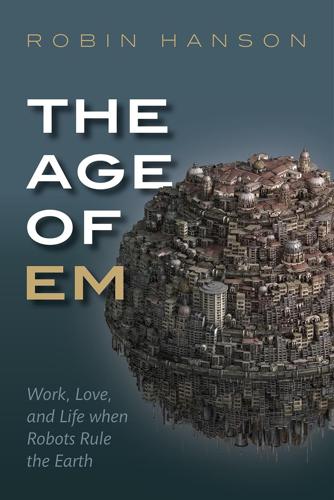
The Age of Em: Work, Love and Life When Robots Rule the Earth
by
Robin Hanson
Published 31 Mar 2016
The first coalition to create a useable em would gain profits from pricing the first em products well above marginal cost. Consortium profits may continue somewhat after the point that a second coalition succeeds in em creation, because of first mover advantages or cooperation among leading consortiums. The first em clans, firms, and cities in the new em economy might also gain first mover advantages. Having fewer such big winners would make for less diversity in the subsequent em era. Governments may back some consortiums, while other consortiums may be profit-seeking ventures. Those seeking to minimize risk because of uncertainty about which consortiums will win should try to invest in as many consortiums as are open to investors.
…
Later on, when scans become non-destructive and scanning costs fall, scans are done on far more people, including both old people with proven productivity and adaptability, and younger people with great promise to later become productive and adaptable. Eventually most humans willing to be scanned are scanned, to provide a large pool of scans to search for potentially productive workers. By then, many early scans may have gained first-mover advantages over late arrivals. First movers will have adapted more to em environments, and other ems and other systems will have adapted more to them. Selection While ems are mentally quite human, selection effects will make them differ from typical humans. For example, in addition to the selection of which humans to scan, scanned brains may be tweaked via adjusting a few dozen or more overall parameters of the emulation process.
…
Niche ems have more complicated social worlds because of less synchronized copying of friends and lovers. Em clans may also naturally split between those who remember our era, and those who do not remember the human-dominated past. The latter ems are likely to be better adapted to the em world, but the former will have locked in many first mover advantages to gain enviable social positions. Em clans might also split by size, between a few huge powerful clans and a great many smaller weaker clans. The few very large clans probably feel superior and favor each other, leading to resentment and accusations of bias from the smaller clans. A related distinction is between the firms, buildings, and cities where most capital is owned by ordinary humans, and other firms, buildings, and cities.
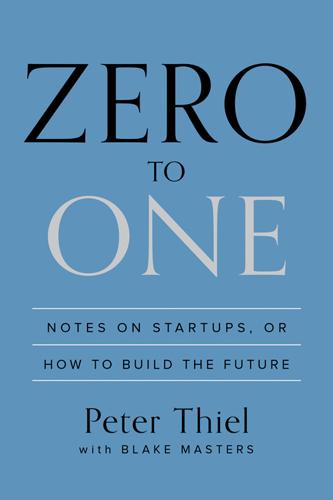
Zero to One: Notes on Startups, or How to Build the Future
by
Peter Thiel
and
Blake Masters
Published 15 Sep 2014
But since we expanded the market for payments overall, we gave Visa far more business than we took. The overall dynamic was net positive, unlike Napster’s negative-sum struggle with the U.S. recording industry. As you craft a plan to expand to adjacent markets, don’t disrupt: avoid competition as much as possible. THE LAST WILL BE FIRST You’ve probably heard about “first mover advantage”: if you’re the first entrant into a market, you can capture significant market share while competitors scramble to get started. But moving first is a tactic, not a goal. What really matters is generating cash flows in the future, so being the first mover doesn’t do you any good if someone else comes along and unseats you.
…
Energy Innovations Engels, Friedrich entitlement spending entrepreneurs, 3.1, 5.1, 6.1, 6.2, 7.1, 10.1 short-term growth focus of entrepreneurship, serial Epicurus equity compensation Eroom’s law ethics euro Europe, 2.1, 6.1 European Central Bank Evergreen Solar, 13.1, 13.2 evolution exploration extinction, bm1.1, bm1.2 Facebook, prf.1, 5.1, 6.1, 6.2, 7.1, 11.1, 14.1 Fairchild Semiconductor Fanning, Shawn Faust Federal Bureau of Investigation (FBI), 8.1, 12.1, 14.1 Fermat, Pierre de Fermat’s Last Theorem finance, indefinite financial bubbles, 2.1, 8.1 first mover advantage flatness Fleming, Alexander Forbes, 12.1, 12.2 Ford fossil fuels foundations co-founders compensation structure equity ownership, possession and control startups founders, 14.1, bm1.1 origins of traits of Founders Fund, 7.1, 7.2, 9.1, 11.1, 13.1 Fountain of Youth fracking fraud detection free marketeers free trade fundamentalists future: challenge of controlling of four possible patterns for Gaga, Lady, 14.1, 14.2 Gates, Bill, prf.1, 6.1, 6.2, 6.3, 14.1 General Motors, 9.1, 13.1 genius Gladwell, Malcolm, 6.1, 6.2, 6.3 globalization, 1.1, 1.2, 2.1, 2.2, 2.3, 8.1, 12.1, bm1.1 substitution as technology and global warming goals Golden Gate Bridge Google, 3.1, 3.2, 3.3, 4.1, 5.1, 7.1, 10.1, 12.1, 12.2 as monopoly, 3.1, 3.2 motto of Google Translate Gore, Al government, indefinite Great Depression Greenspan, Alan, 2.1, 8.1 Gross, Bill Groupon Guardian, 12.1 Hamlet Harrison, Brian, 13.1 Hegel, Georg Wilhelm Friedrich Hendrix, Jimi Hewlett, Bill Hewlett-Packard hipsterdom Hitchhiker’s Guide to the Galaxy, The Hoffman, Reid horizontal progress housing bubble, 2.1, 8.1 Howery, Ken HP Services Hughes, Howard Hurley, Chad Hyundai IBM, 3.1, 12.1 Igor incentive pay income inequality incrementalism, 8.1, 14.1 indefinite finance indefinite life indefinite optimism, 6.1, 6.2 indefinite pessimism, 6.1, 6.2 India Indonesia information technology, 1.1, 6.1, 12.1 Informix innovation, prf.1, 3.1 insider trading Instagram Intel internet, 2.1, 2.2 internet bubble, 2.1, 2.2, 2.3, 8.1, 13.1 Interstate Highway System Intuit investment iPad, 5.1, 14.1 iPhone, 3.1, 4.1, 5.1, 14.1 iPod, 6.1, 14.1 irrational exuberance Italy IT startups Ivan, Hurricane Jackson, Michael Japan Jennings, Ken Jennings, Peter Jeopardy!

Rule of the Robots: How Artificial Intelligence Will Transform Everything
by
Martin Ford
Published 13 Sep 2021
In order to seize the major strategic opportunities in the development of artificial intelligence, build the first-mover advantage in the development of artificial intelligence in China, and accelerate the construction of an innovative country and a world power of science and technology, this plan was formulated in accordance with the deployment requirements of the Party Central Committee and the State Council. B. The rapid development of artificial intelligence (AI) will profoundly change human society and life and change the world. To seize the major strategic opportunity for the development of AI, to build China’s first-mover advantage in the development of AI, to accelerate the construction of an innovative nation and global power in science and technology, in accordance with the requirements of the CCP Central Committee and the State Council, this plan has been formulated.
…
While the value created by artificial intelligence will be distributed widely across economic sectors, the reverse may well turn out to be true within a given industry. Companies that are on the frontier when it comes to leveraging AI within their business models are likely to have a substantial first-mover advantage. That could well lead to winner-take-all scenarios as businesses with especially effective big data and artificial intelligence strategies gain a significant competitive advantage. Because data is so central to the effective application of AI, the first step toward an AI strategy is nearly always a successful data strategy.

Frugal Innovation: How to Do Better With Less
by
Jaideep Prabhu Navi Radjou
Published 15 Feb 2015
Novartis’s rivals, such as Amgen, Genzyme and GSK, are also investing heavily in continuous manufacturing. Yet Trout believes that Novartis’s early engagement and strong senior management-level commitment to reinvent its entire drug development value chain to support continuous manufacturing give it a significant first-mover advantage. Novartis plans to launch a commercial-scale continuous manufacturing plant in 2017, well ahead of its rivals.2 By adopting MQB and continuous manufacturing, Volkswagen and Novartis respectively are reshaping 21st-century manufacturing. The industrial era of the 20th century was characterised by mass production, in which manufacturers focused on making more of the same at increasingly lower cost, and achieving ever-greater economies of scale.
…
IBM’s scientists and engineers in China innovate and complete their R&D projects at great speed. They design and launch good-enough solutions and then continually improve them based on further market input – using an iterative launch–test–improve cycle – thus drastically reducing time-to-market and gaining a first-mover advantage.23 Chinese innovators also excel at jiejian chuangxin (resource-saving innovation) and are finding ingenious ways to minimise costs and reuse materials and technologies. IBM’s R&D team is using these rapid, resource-saving innovation techniques to tackle a massive problem in China: air pollution.
…
(Daru) 169 data, sharing with partners 59–60 data analytics 206 Datta, Munish 183 De Geer, Jacob 40 Decathlon 126–7, 128 deceleration of energy consumption 53, 54 decentralisation 47, 50, 51–2, 53–4, 66–7 Defence Advanced Research Projects Agency (DARPA) 49 Delabroy, Olivier 206, 207 delayed differentiation 57–8 Deloitte 14, 171 demand forecasts 58 democratisation of innovation 50–1, 127, 132, 166 deregulation 53, 54 design 75, 88–9 inclusive 194–5 for longevity 121 modular 67, 90 for next-generation customers 121–2 for postponement 67 for sustainability 82–4, 92, 93, 120–1, 195–6 see also CAD; C2C; E&I; R&D design-led organisations 71 designers 88, 93, 152 Detourbet, Gérard 4–5, 199 Deutsche Telekom 194 developed economies 190, 207 consumers 2, 9, 102, 189, 206 energy sector 52–3 frugal innovation in xvii frugality in 8, 218 development costs 22, 36 development cycle 21, 23, 42, 72, 129, 200 DHL 143 differentiation 57–8, 76, 150 digital disrupters 16–17 digital enrichment 89 digital integration 65–6 digital monitoring 65–6 digital prototyping 52 digital radiators 89 digital tools 47, 50, 53, 62, 164, 170 for tracking customer needs 28–9, 29–31 digitisation 53, 65–6, 174 disruptive innovation 10–11, 40, 70, 91, 170, 199 “disruptive value solutions” 191–3 distributed energy systems 53–4 distributed manufacturing 9 distribution 9, 54, 57, 96, 161 distributors 59–60, 76, 148 DIWO (do it with others) 128 DIY (do-it-yourself) 9, 17–18, 89, 128, 130–1, 134–6 health care 109–12 see also TechShops; FabLabs Doblin 171 doing better with less 12–16, 215 doing less for less 205–6 doing more with less 1–3, 16, 177, 181, 206, 215 Dougherty, Dale 134 dreamers 144 Dreamliner (Boeing) 92 dreams 140–1 DriveNow 86 drones 61, 150 Drucker, Peter 179 drug development 22, 23, 35, 171 see also GSK; Novartis drug manufacture 44–6 Dubrule, Paul 172–3 Duke 72 DuPont 33, 63 durability 83, 124 dynamic portfolio management techniques 27, 33 Dyson 71 E E&I (engage and iterate) principle xviii, 19–21, 27–34, 41–3, 192 promoting 34–41 e-commerce 132 e-learning 164–5 e-waste 24, 79, 87–8, 121 early movers 45, 200, 215 easyCar 85 easyJet 60 Eatwith 85 eco-aware customers 22, 26, 215 eco-design principles 74 see also C2C eco-friendly behaviour 108 eco-friendly products 3, 73–7, 81–2, 93, 122, 153, 185, 216 Ecomobilité Ventures 157 economic crisis 5–6, 46, 131, 180 economic growth 76–7 economic power, shifting 139 economic problems 153, 161–2 economies of scale 46, 51, 55, 137 Ecover 82 EDC (Cambridge University Engineering Design Centre) 194–5 Edelman Good Purpose survey 101 Trust Barometer 7 EdEx 61, 112 Edison, Thomas 9, 149, 151 education 16–17, 60, 61, 112–14, 135–6, 164–5, 181–3 efficacy 181–3 efficiency 33, 60, 71, 154, 209 Ehrenfeld, John 105 Eisenhower, Dwight D. 93 electric cars 47, 86, 172 electricity consumption 196 generation 74, 104 electronic waste see e-waste electronics, self-build 51 Ellen MacArthur Foundation 76, 81 emerging markets 16, 35, 40, 94, 190, 198, 205 aspirations 119–20, 198 cars aimed at 4–5, 16, 198–9 competitors 16, 205–6, 216 consumers 197–8, 198, 199, 203 distribution models 57 IBM and 199–202 infrastructure 56, 198, 207 innovation in 4, 39–40, 188–9, 205–6 products tailored to 38, 198–9, 200–2 Siemens and 187–9 suppliers 56 testing in 192 wages in 55 in Western economies 12–13 emissions 47, 78, 108 see also carbon emissions; greenhouse gas emissions employees 14, 37, 39, 84, 127, 174–5, 203–8, 217 as assets 63–5 cutting 153 empowering 65, 69–70 engaging 14, 64–5, 178–9, 180, 203–8, 215 health care for 210–11 incentives 7, 37, 38–9, 91–2, 184, 186, 207–8 and MacGyvers 167 Marks & Spencer 187 mental models 193–203 motivation 178, 180, 186, 192, 205–8 performance 69, 185–6 recruiting 70–1 training 76, 93, 152, 170, 189 younger 14, 79–80, 124, 204 see also organisational change empowering consumers 22, 105, 106 empowering employees 65, 69–70 empowering prosumers 139–43 energy 51, 103, 109, 119, 188, 196, 203 generation 52–4, 74, 104, 197 renewable 8, 53, 74, 86, 91, 136, 142, 196 energy companies 52–4, 99, 103 energy consumption 9, 53, 54, 107, 196 homes 54, 98–100, 106–9 reducing 74, 79, 91, 108, 159, 180 energy costs 161, 190 energy efficiency 12, 54, 75, 79, 191, 193–4, 194, 206 factories 197 Marks & Spencer 180–1, 183 workplaces 80, 193–4 energy sector 52–4, 197 engage and iterate see E&I engaging competitors 158–9 engaging customers 19–21, 24–6, 27–33, 34, 35, 38–9, 42–3, 115, 128, 170 advertising 71–2 engaging employees 14, 64–5, 178–9, 180, 203–8, 215 engaging local communities 52, 206–7 engaging prosumers 139–43, 143–6 “enlightened self-disruption” 206 “enlightened self-interest” 172 entrenched thinking 14–16 entrepreneurial culture 76 entrepreneurs 150, 163–4, 166 engaging with 150, 151, 152, 163–4, 168, 173–6, 207 environmental cost 11 environmental degradation 7, 105 environmental footprint 12, 45, 90–1, 97, 203 environmental impact 7, 27, 73, 77, 90, 92, 174, 196 environmental problems, solving 82, 204 environmental protection agencies 74, 76 environmental responsibility 7, 10, 14, 124, 197 environmental standards 80, 196 environmental sustainability 73–5, 76, 85, 186 Ericsson 56 Eschenbach, Erich Ebner von 86 Esmeijer, Bob 32 Essilor 57, 146, 161 ethnographic research 29–31, 121–2, 157–8 Etsy 132 EU energy consumption 54 sustainability regulation 8, 78, 79, 216 Europe 12–13, 22, 40, 44, 120, 161, 188 ageing populations 194 energy consumption 54 frugal innovation in 215–16, 218 greener buildings 196 horizontal economy 133 incomes 5–6 regulation 8, 78, 79, 216 sharing 85, 138–9 tinkering culture 18, 133–4 European Commission 8, 103, 137 Eurostar 10, 163 evangelists 145 EveryoneOn 162 evolutionary change 177–9 execution agility 33–4 Expedia 173, 174 expert customers 146 “experts of solutions” 164 Expliseat 121 ExploLab 42 “Eye Mitras” 146 F F3 (flexible, fast and future) factories 66–7 Faber, Emmanuel 184 FabLabs 9, 134–5 Facebook 16, 29, 62, 133, 144, 146, 147, 150 factories 66–7, 134, 197 see also micro-factories “factory in a box” 134 factory-agnostic products 67 Fadell, Tony 99 failures 33–4, 42 at launch 22, 25, 141, 171 FastWorks 41, 170 FDA (Food and Drug Administration) 39, 79 FDIC (Federal Deposit Insurance Corporation) 13, 17, 161 FedEx 65, 154 Ferrero 57 FGI Research 29 FI (frugal intensity) 10–11, 189–93 FIAM Italia 88–9 Fields, Mark 70 FieldTurf 75, 76 financial habits 115–16 financial measurements 118 financial services 13, 18, 57, 63, 124–5, 135, 161–2, 201 underserved public 13, 17, 161–2 Finland 103 first-mover advantage 45, 200 FirstBuild 52, 152 fixed assets 46, 161 fixers 146 flexibility 33, 35, 65, 90, 143 of 20th-century model 23, 46, 51, 69 lattice organisation 63–4 manufacturing 57, 66, 191 of sharing 9–10, 124 supply chain 57–8 flexible logistics 57–8, 191 flexing assets xviii–xix, 44–6, 65–72, 190 employees 63–5, 69–71 manufacturing 46–54, 65 R&D 67 services 60–3, 65 supply chain 54–60, 65, 66–7, 67–8 FLOOW2 161 Flourishing: A Frank Conversation about Sustainability (Ehrenfeld and Hoffman, 2013) 105 FOAK (First of a Kind) 142 “follow me home” approach 20 Food and Drug Administration see FDA Ford, Henry 9, 70, 98, 129, 165 Ford Motor Company 50, 58, 70, 89, 165–7, 171 Forrester Research 16, 25, 143 Frampton, Jez 142 France 5–6, 40, 93, 133, 138, 172, 194 consumer behaviour 102, 103 Francis, Simon 71 Franklin, Benjamin 134, 218 freight costs 59 Fried, Limor 130 frugal competitors 16–18, 26, 216 frugal consumers 197–200 frugal economy 5–12 frugal engineering 4, 40 frugal health-care 208–13 frugal innovation xvii–xx, 4, 10–16, 215–18 six principles xvii–xx frugal intensity see FI frugal manufacturing 44–54 frugal mindset xvii–xviii, 198–203 frugal organisations 63–5, 69 see also organisational culture frugal services 60–3, 216 frugal supply chain 54–60 frugality 5, 8, 119–20, 204, 218 fuel consumption, reducing 106–7 fuel costs 121 fuel efficiency 8, 12, 24, 47, 78, 131, 197 Fujitsu 11, 29–31 future customers 193–5, 205 FutureLearn 61, 112, 113 G GAFAs (Google, Apple, Facebook and Amazon) 150, 155, 211, 216 gamification 108, 112, 113–14, 162 Gap 7 Gartner 59–60 Gates, Bill 138 GDF Suez 53–4 GDP (gross domestic product) 104 GE (General Electric) 9, 21, 40, 139, 149–53, 161, 171, 215 additive manufacturing 49 “culture of simplification” 170 learning from start-ups 40–1 micro-factory 52 GE Aviation 49 GE Distributed Power 53 GE Garages 152 GE Healthcare 40 GE Ventures 151 Gebbia, Joe 163 General Electric see GE General Motors see GM Genzyme 45 Gerdau Corporation 159 Germany 66, 85, 93, 103, 136, 156, 194 ageing workforce 13, 49, 153 impact of recession 5, 7 market 85, 189 Mars distribution in 57, 161 Gershenfeld, Neil 134 Ghosn, Carlos 4, 198–9, 217 Giannuzzi, Michel 73, 76 Gibson, James 120 giffgaff 147–8 Gillies, Richard 185 GlaxoSmithKline see GSK Global Innovation Barometer 139 global networks 39–40, 52, 152–3, 202 Global Nutrition Group (PepsiCo) 179 global recovery of waste (GROW) 87–9 global supply chains 36, 137 Global Value Innovation Centre (GVIC) (PepsiCo) 190–2 GlobeScan 102 GM (General Motors) 21, 50, 68, 155, 166 see also Opel goals 94, 178, 179–89, 217 “big, hairy audacious” 90–1, 158–9, 179, 191–2 good-enough approach 27–8, 33–4, 42, 170, 188–9, 200 Google 17, 38, 63, 130, 136, 150, 155, 172 Gore, Bill 63–4, 69 Gore, Bob 63 Gore, Vieve 63 governments 6–7, 7–8, 13, 109, 161 Graeber, Charles 201 Greece 5, 6 greenhouse gas emissions 102, 196 reducing 8, 78, 78–9, 95 see also carbon emissions gross domestic product see GDP Groth, Olaf 153 GROW (global recovery of waste) 87–9 growth 6, 13, 76–7, 79, 80, 104–5 of companies 72, 100 sustainability 72, 76–7, 79–80 GSK (GlaxoSmithKline) 35–6, 36–7, 39, 45, 215 GSK Canada 29 gThrive 118 GVIC (Global Value Innovation Centre) (PepsiCo) 190–2 Gyproc 160 H hackers 130, 141–2 Haier 16 “handprint” of companies 196 Harley-Davidson 66, 140 Hasbro 144 Hatch, Mark 134–5 health care 13, 109–12, 135, 153, 161, 198, 202–3, 208–13 health insurance 109, 208–13 heat, harvesting 89 Heathrow Airport 195 Heck, Stefan 87–8 Heineken 84 Herman Miller 84 HERs (home energy reports) 109 Hershey 57 Higgs Index 90 Hilton 10, 163 Hippel, Eric Von 130 Hoffman, Andrew 105 home energy reports (HERs) 109 homes 157–8 energy 53, 103, 109 horizontal economy 133–9 horizontal ecosystems 154–5 Hosking, Ian 195 Howard, Steve 78 hub-and-spoke models 60 HubCap 107–8 human-sized factories 63, 64 Hurtiger, Jean-Marie 1–2 HVCs (hybrid value chains) 161–2 hybrid make/move model 57–8 hybrid value chains (HVCs) 161–2 hyper-collaboration 153–76, 190–1 I I-Lab 206–7 Ibis 173 IBM 17, 39, 142, 154, 171, 171–2, 199–202 R&D in Nairobi 200–2 ideas42 109 ideators 144–5 IDEO 121 IKEA 78, 100, 108, 132, 142, 194 IME (Institute of Mentorship for Entrepreneurs) 175 Immelt, Jeff 170, 217 immersion 29–31, 31–2, 193–4 Impact Infrastructure 197 improvisation 27, 179, 182 Inc. magazine 81–2 incentives 7, 37, 38–9, 91–2, 184, 186, 207–8, 213 inclusion 7, 13 inclusive design 194–5 Inclusive Design Consortium 195 incomes 5, 6, 102, 194 India 40, 57, 102, 191, 200, 216 aspirations 119, 198 emerging market 4, 12, 38, 146, 169, 197, 205, 207 frugal innovation 4–5, 169 mobile phones 56, 198 Renault in 4–5, 40, 198–9 selling into 119, 187–8 Indiegogo 137, 138, 152 industrial model 46, 55, 80–1 industrial symbiosis 159–60 inequality 6, 13 inflation 6 infrastructure 46, 92–3, 198, 207 ingenuity xx, 2, 14, 18, 70, 76, 164, 166, 217 jugaad xvii, 199 Ingredion 158–9 InHome 157–8 innovation 14, 23, 40, 50–1, 70, 153, 200 costs 10–11, 150, 168, 171 democratisation 50–1, 127, 132, 166 disruptive 10–11, 40, 70, 91, 170, 199 process 28–34, 43 speed 10–11, 129, 150, 167–8, 173 technology-led 26 see also frugal innovation; prosumers; R&D innovation brokering 168–9, 173–6 Innovation Learning Network 203 innovative friends xx, 150–3, 176 see also hyper-collaboration InProcess 121–2, 157–8 Institute of Mentorship for Entrepreneurs (IME) 175 insurance sector 116 intellectual capital 171–2 Interbrand 142 Interface 90–1, 123 interfaces 98, 99 internal agility 169–70 internet 62, 65, 85, 103, 106, 133, 174, 206 Internet of Things 32, 106, 150, 169, 174 Intuit 19–21, 29, 145 inventors 50–1, 134, 137–9, 149, 150–1 inventory 54, 58 investment crowdfunding 137–9 in R&D 15, 22, 23, 28, 141, 149, 152, 171, 187 return on 22, 197 investors 123–4, 180, 197, 204–5 iPhones 16, 100, 107, 131, 148 Ispo 84 Italy 6, 103, 133 iteration 20–1, 31, 36, 38, 41, 52, 170, 179, 200, 213–14 iZettle 40 J Janssen Healthcare Innovation 111 Japan 8, 22, 40, 52, 102, 196, 200 ageing population 6, 194 ageing workforce 2, 13, 49, 153 austerity 5, 6 environmental standards 78–9 and frugal innovation 215–16, 218 horizontal economy 133 regulation 216 robotics 49–50 Jaruzelski, Barry 23 Jawbone 110 Jeppesen Sanderson 145 jiejian chuangxin 200, 202 Jimenez, Joseph 45 Jobs, Steve 68–9, 164 John and Catherine T.
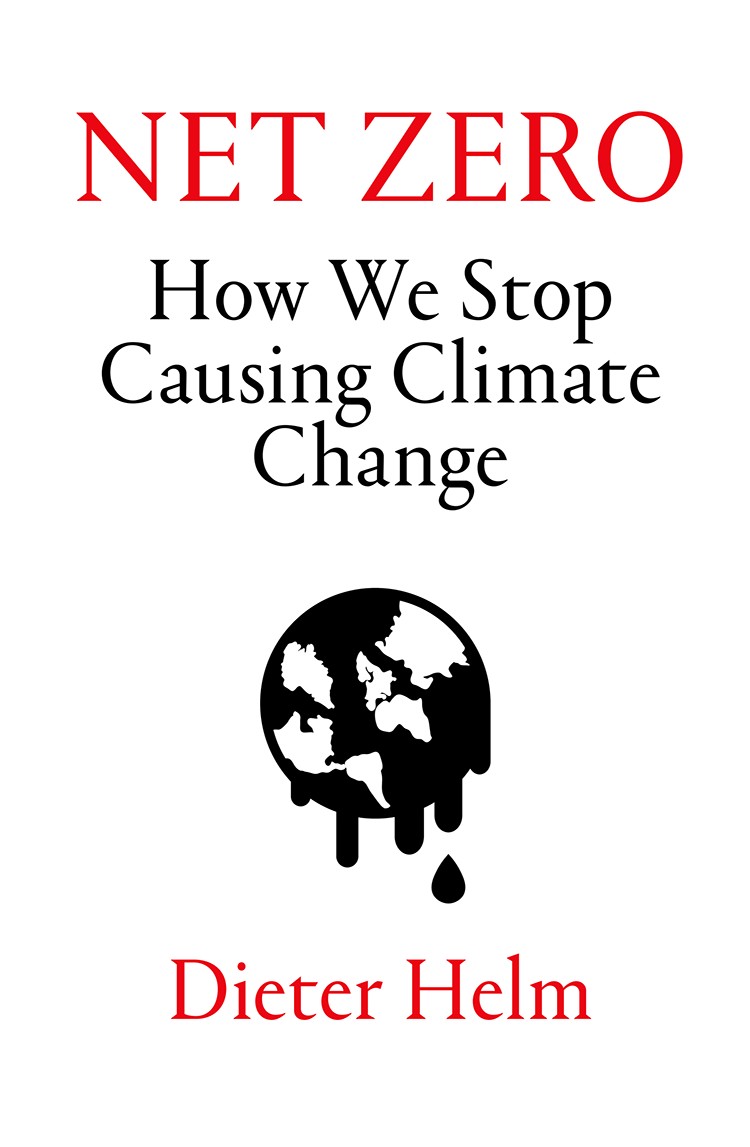
Net Zero: How We Stop Causing Climate Change
by
Dieter Helm
Published 2 Sep 2020
Between now and 2050 there will be lots of technical progress, so it should get easier and cheaper to meet the target. The profile would then be less reduction now and more later.[12] The linear approach is sometimes implicitly supported by an additional argument: that there are first-mover advantages from decarbonising on a fast track. However, as we will see in the more extreme example of Germany, there is in fact no evidence of the first-mover advantage. On the contrary, there are some distinct disadvantages, especially when added to its impact on carbon consumption. The knowledge, expertise and science are all public goods, and indeed the first-mover argument is undermined by the claim Germany now makes that going first provides for the transfer of such knowledge to other countries to assist them in decarbonising.
…
acid rain 25, 194 Africa xiv, xv, 2, 25, 30, 38, 44, 45, 47, 48, 51, 137, 229 agriculture 2, 6, 12, 13, 14, 23, 35–6, 43, 44–5, 70, 76, 86, 87–8, 95, 100, 102, 109, 116, 146–7, 149, 159, 163–80, 181, 183, 192, 197, 198, 206, 220 baseline, the 164–8 biodiversity loss and 2, 5, 100, 164, 165, 168, 169, 171, 172, 174, 180 biofuels and 197–8 carbon emissions and 2, 12, 13, 35–6, 76–7, 146–7, 163–80 carbon price and 167–70, 171, 172, 173, 180 China and 28–9, 35, 45, 180 economics of 76, 165, 166–7, 171, 174 electricity and 13, 166, 168, 174, 178, 180 fertiliser use see fertiliser lobby 14, 110, 164, 165, 169, 170, 197 methane emissions 23, 84, 177, 178, 179 net gain and 172–4 net value of UK 76, 166 new technologies/indoor farming 87–8, 174–9, 180, 213 peat bogs and 2, 179 pesticide use see pesticides petrochemicals and 166 polluter-pays principle and 76, 168–70, 172, 173 pollution 36, 86, 163, 165–6, 168–70, 172, 173, 177–8, 230 public goods, agricultural 170–4, 180 sequestering carbon and 12, 95, 163, 166, 168, 169, 170, 171, 172, 173–4, 177, 179, 180 soils and 2, 146, 163, 164, 165, 166, 168, 169, 171, 172, 175, 179 subsidies 14, 76, 102, 109, 116, 164, 165, 166, 167, 169, 170, 172, 180, 228 25 Year Plan and 179–80 Agriculture Bill (2018), UK 170 air conditioning 135–6, 224, 233 air quality xiii, 13, 25, 46, 52, 61, 70, 135, 153, 177, 180, 201, 216, 230, 232 air transport 3–4, 6, 11, 13, 22, 50, 53, 73, 87, 88, 92, 107, 125, 128, 129, 132, 133, 134, 149, 156–7, 186, 195, 201, 203–5 aluminium 7, 117 Amazon rainforest 2, 34, 35, 95, 145, 149–50, 151, 155, 229, 230 ammonia 35, 137, 191 anaerobic digesters 35, 165, 230 animal welfare 167, 177 antibiotics 93, 165, 174 Arctic 26, 46, 114, 178 artificial intelligence (AI) 32, 175, 220, 231 autonomous vehicles 13, 129, 132, 175, 189–90, 231 Balkans 137–8 Bank of England 121 batteries 6, 31, 131, 135, 141, 183, 184, 185–90, 191, 199, 204, 213, 214, 219, 220, 221, 225, 231 beef 5, 95, 116, 117, 167, 230 Berlin, Isaiah 104 big 5 polluter products 117–18, 120 bin Salman, Mohammad 27 biocrops 36 biodiversity xiv, 2, 5, 12, 13, 28, 35, 51, 76, 94, 100, 148, 149, 152, 153, 158, 159, 164, 165, 168, 169–70, 171, 172, 174, 180, 227, 233 bioenergy 31, 34–5, 36 biofuels 21, 35, 49, 50, 67, 70, 95, 135, 183, 184, 197–8, 210, 230 biomass 32, 34, 49, 50, 67, 69, 109, 146, 147, 151, 210, 217 bonds, government 220 BP 27, 149, 187, 199 Deepwater Horizon disaster, Gulf of Mexico (2010) 147 Brazil 2, 35, 38, 44–5, 47, 95, 145, 149–50, 155, 198 Brexit 42, 47, 56, 117, 165 British Gas 102, 139 British Steel x, 194 broadband networks 6, 11, 90, 92, 125, 126, 127–8, 130–1, 132–3, 135, 140–1, 199, 201, 202, 205, 211, 214, 231, 232 Brundtland Commission 45 BT 127–8, 141 Openreach 214 Burn Out (Helm) ix, xiv Bush, George W. 36, 48, 53, 103 business rates 76, 165 Canada 52, 191, 193 capitalist model 26, 42, 99, 227 carbon border tax/carbon border adjustment xii, 11, 13, 60, 80, 115–20, 194–6, 204 carbon capture and storage (CCS) xiv, 12, 75–6, 95, 109, 146, 147–8, 149, 154, 159, 203–4, 207, 209, 222, 223 Carbon Crunch, The (Helm) ix, xiv, 221 carbon diary 4–5, 8, 10, 11, 64–6, 83, 86, 116, 143, 144, 155, 156, 167, 180, 181, 185, 203, 205 carbon emissions: agriculture and see agriculture by country (2015) 30 during ice ages and warm periods for the past 800,000 years 21 economy and 81–159 electricity and see electricity global annual mean concentration of CO2 (ppm) 19 global average long-term concentration of CO2 (ppm) 20 measuring 43–6 since 1990 1–14, 17–37 transport and see individual method of transport 2020, position in 36–7 UN treaties and 38–57 unilateralism and 58–80 see also unilateralism carbon offsetting xiii–xiv, 4, 5, 12, 34, 45, 72, 74, 79, 94–6, 97, 105, 143–59, 192, 201, 203, 207, 214, 222, 223, 234 for companies 148–50 for countries 151–5 for individuals 155–7 markets 71–2, 110–13, 117, 144, 157–9, 208 travel and 156, 201–3 see also sequestration carbon permits 71–2, 79, 110–13, 117, 144, 208 carbon price/tax xii, xiii, xv, 8, 11, 12, 13, 26, 60, 61, 71, 72, 77, 79, 80, 84, 85–6, 102–3, 105, 106–24, 134, 143, 146, 147, 150, 151–4, 157, 159, 192, 197, 198, 199, 203, 227–30, 232, 234 agriculture and 167, 168, 169–70, 171, 173, 180 domain of the tax/carbon border adjustment xii, 11, 13, 60, 80, 115–20, 121, 124, 192, 194–6, 197, 204, 227 electric pollution and 216–18 ethics of 107–10 floor price 115, 117, 208 for imports 11, 13 prices or quantities/EU ETS versus carbon taxes 110–13 setting 113–15 transport and 192–9 what to do with the money 121–4 where to levy the tax 119–20 who fixes the price 120–1 carbon sinks 2, 5, 166, 169, 203 carboniferous age 34 cars 1, 3, 4, 7, 20, 22, 36, 44, 70, 73, 114, 129, 181, 182, 183, 184–5, 190, 191, 193, 196, 197, 198, 199 see also electric vehicles cartels 39, 40, 43, 45, 46, 47, 56 cattle farming 35, 36, 95, 150, 166, 167, 173, 177, 198 Central Electricity Generating Board (CEGB) 102, 139, 218 cement 6, 7, 26, 29, 34, 87, 117, 171 charging networks, electric vehicle 91, 129–30, 141–2, 184, 185–90, 199, 200, 202, 219 Chernobyl 78 China xi, xv, 1–2, 5, 8, 18, 42, 46, 47, 48, 64, 66, 74, 101, 180, 229 Belt and Road Initiative 28, 45 coal use 1–2, 8, 23–4, 24, 28, 31, 38, 117, 154, 206, 208 Communist Party 2, 27, 42, 46 demand for fossil fuels/carbon emissions 1–2, 8, 18, 20, 22, 23–4, 24, 25, 27–31, 36, 38, 51, 73, 117, 154, 206, 208 export market x–xi, 5, 9, 64, 66, 117, 155, 194 fertiliser use 35 GDP xv, 27, 29 nationalism and 42 petrochemical demand 22 renewables companies 9, 32, 73, 74, 77, 79 Tiananmen Square 42 unilateralism and 58, 59 UN treaties and 46, 47, 48, 53, 54, 55, 58, 59 US trade war 56, 118 Churchill, Winston 183 citizen assemblies 99–101 climate change: carbon emissions and see carbon emissions 1.5° target 38, 57 2° target 1, 10, 22–3, 28, 30, 38, 39, 45, 47, 54, 55, 57, 108, 122, 155, 206 see also individual area of climate change Climate Change Act (2008) 66, 74–7 Clinton, Bill 40, 48 Club of Rome 98 coal 1–2, 5, 8, 13, 20, 23–5, 28, 29, 30, 31, 32, 34, 36, 38, 50, 52, 53, 60–1, 67, 72, 77, 78–9, 101, 109, 112, 116, 117, 119, 134, 136, 145, 147, 148, 151, 154, 155, 182, 183, 194, 196, 206–9, 210, 212, 214, 216, 217, 218, 229, 230 coastal marshes 146, 159 colonialism 45 Committee on Climate Change (CCC), UK x–xi, 7, 74–5, 120, 164, 166, 169, 217, 235 ‘Net Zero: The UK’s Contribution to Stopping Global Warming’ report x–xi conference/video calls 6, 129, 156, 202, 205 Conference of the Parties (COP) xii, 10, 48, 50, 53–4, 55, 59, 205 congestion charges 198 Copenhagen Accord 48, 53–4, 59 Coronavirus see Covid-19 cost-benefit analysis (CBA) 71, 108, 110, 114, 138 cost of living 116 Covid-19 x, xi–xii, 1, 3, 6, 9, 18, 19, 22, 25, 27, 30, 37, 44, 46, 50, 57, 65, 69, 80, 89, 93, 129, 135, 148, 171, 201, 202, 204, 232 CRISPR 176 crop yields 172, 177 dams 2, 36, 52–3, 179 DDT (Dichlorodiphenyltrichloroethane) 100 deforestation 2, 5, 34, 35, 36, 38, 43, 44, 47, 55, 87, 95, 145, 146, 149–50, 155, 172–3, 179, 197–8, 229 Defra (Department for Environment, Food and Rural Affairs) 170 deindustrialisation x, 29, 46, 52, 54, 59, 72–4, 218 Deng Xiaoping 27 Denmark 69–70, 136–7 desalination 135–6, 179 diesel 4, 20–1, 70, 76, 86, 109, 119, 121, 129, 132, 164, 165, 166, 174, 175, 178, 179, 181, 182, 185, 186, 191, 192, 196–7, 208, 217, 230 ‘dieselgate’ scandal 196–7 digitalisation 1, 8, 11, 13, 33, 92, 117, 136, 174, 175, 180, 206, 211, 215, 221, 228–9, 231 DONG 69 Drax 147, 151, 154, 218 economy, net zero 10–12, 81–159 delivering a 96–103 intergenerational equity and 96–7 markets and 103–5 net environmental gain see net environmental gain political ideologies and 98–101 polluter-pays principle see polluter-pays principle public goods, provision of see public goods, provision of technological change and 98 EDF 139, 218 Ehrlich, Paul 98 electricity 1–2, 4, 6, 11, 12, 13, 23, 31, 32, 49, 53, 61, 65, 66, 68, 70, 73, 77, 78, 79, 91, 92, 101, 102, 109, 117, 125, 127, 128, 129–30, 131–2, 134, 135, 136, 137, 139, 140, 141, 149, 158, 166, 168, 174, 178, 180, 182, 183, 228, 229, 231, 232, 234, 235 coal, getting out of 206–7 electric pollution and the carbon price 216–18 electric vehicles 4, 6, 13, 20, 23, 49, 61, 91, 92, 94, 121, 125, 128, 129–30, 131–2, 134, 141, 183–92, 193, 194, 197, 200, 201, 202, 206, 219, 228 equivalent firm power auctions and system operators 210–16 future of 206–25 gas, how to get out of 207–9 infrastructure, electric 185–90, 218–20 low-carbon options post-coal and gas 209–10 net gain and our consumption 222–5 R&D and next-generation renewables 220–2 renewable see renewables Energy Market Reform (EMR) 219 equivalent firm power (EFP) 212–16, 217, 220 ethanol 35, 71, 95, 197 eucalyptus trees xiv, 152 European Commission 60, 71, 72, 112 European Union (EU) xiv, 2, 7, 8, 9, 37, 42, 44, 46, 47, 117, 137, 165, 166, 197; baseline of 1990 and 51–2 Common Agricultural Policy (CAP) 76, 165 competition regime and customs union 56 deindustrialisation and 46, 52, 54, 59, 72–4 directives for 2030 66 Emissions Trading System (EU ETS) 71–2, 73, 79, 110–13, 117, 144, 208 importing carbon emissions 59 Internal Energy Market (IEM) 68, 71 Kyoto and 9, 51, 59, 66–7 Mercosur Agreement 44, 95 net zero target for 2050 66, 115, 143, 155, 167, 180 Paris and 54 Renewable Energy Directive 68–71, 73, 109 2020 targets signed into law 66 2020–20–20 targets 67, 69, 74 unilateralism and 59, 66–71, 80 Eurostar 133 externalities 104, 170, 180, 196 Extinction Rebellion 6 farmers 14, 26, 35, 36, 43, 71, 76, 86, 95, 102, 109, 110, 146–7, 164, 165, 166, 169, 170, 174, 175, 196, 197, 198 fertiliser 4, 6, 7, 26, 29, 35, 61, 73, 86, 87, 116, 117, 119, 163, 165, 169, 174, 175, 178, 179, 191, 194, 197 fibre/broadband networks 6, 11, 90, 92, 125, 126, 127–8, 130–1, 132–3, 135, 140–1, 201, 202, 205, 211, 214, 231, 232 financial crisis (2007/8) 1, 19, 69 first-mover advantage 75 First Utility 199 flooding 13, 77, 149, 152, 153, 159, 170, 233 food miles 167 food security 170–1 food waste 178, 180, 231 Forestry Commission xiv Formula One 186, 196 fossil fuels, golden age of 20–5 see also individual fossil fuel France 46, 47, 52, 56, 73, 78, 101, 113, 130, 136, 138 free-rider problem 39–40, 43, 62–4, 106, 119 fuel duty 121, 195–6 fuel efficiency 197 fuel prices 26, 112–13, 209 fuel use declaration 195 Fukushima Daiichi nuclear disaster (2011) 52, 78 Fukuyama, Francis: The End of History and the Last Man 40–1 gardens 6, 43, 143, 156 gas, natural ix, 2, 5, 8, 20, 23, 24, 25, 26, 29, 31, 32, 36, 50, 52, 68, 69, 79, 102, 109, 117, 119, 129, 136, 137, 146, 147–8, 149, 183, 190, 193, 194, 207–9, 210, 211, 214, 216–17 G8 47 gene editing 172, 176, 231 general election (2019) 121 genetics 98, 172, 174–6, 231 geoengineering 177 geothermal power 137, 178 Germany 9, 30, 47, 52, 59, 60, 62, 66, 67, 69, 70, 71, 72, 73, 75, 77–80, 83, 91, 101, 112, 136, 137, 138, 144, 206, 208, 209 Energiewende (planned transition to a low-carbon, nuclear-free economy) 59, 69, 77–80, 112, 144, 208 Gilets Jaunes 101, 113 GMOs (genetically modified organisms) 176, 177 Great Northern Forest, Britain 151 Green and Prosperous Land (Helm) xiii, xiv, 165, 169, 234 greenbelt 173 greenhouse effect 17 green new deal 90, 102, 234 green parties/green votes 69, 77, 78 green QE (quantitative easing) 102–3 green walls 153, 231 greenwash 156 gross domestic product (GDP) xii, xv, 1, 25, 27, 29, 41, 57, 59, 73, 76, 83, 93, 98, 103, 133, 165, 207, 227, 229, 233 growth nodes 133 G7 47 G20 47 Haber-Bosch process 35, 163 Hamilton, Lewis 186 ‘hands-free’ fields 175 Harry, Prince 6 Heathrow 133, 134 hedgerow 76, 166, 167, 172 Helm Review (‘The Cost of Energy Review’) (2017) ix, 120, 141, 200, 210, 212, 215, 217, 220, 238 herbicide 163 home insulation 102 House of Lords 170 housing 101, 223–4 HS2 92, 125, 132–4, 138, 202 Hume, David 49 hydrogen 13, 49, 92, 125, 128, 135, 137, 183, 184, 190–2, 199, 200, 204, 206, 213, 228 hydro power 31, 35, 36, 50, 52–3, 70, 136, 137, 191 Iceland 137, 178 imports x–xi, xiii, 5, 8, 10, 11, 12, 13, 62, 68, 70, 117–18, 155, 167, 178, 173, 180, 196, 227 income effect 72, 111 income tax 121, 122, 232 India xiv, xv, 25, 30, 31, 38, 43, 44, 47, 48, 51, 54, 55, 57, 154, 229 individuals, net zero for 155–7 Indonesia 2, 35 indoor farming 87–8, 177–8, 180, 213 indoor pollutants 223, 232 Industrial Revolution 1, 18, 19, 25, 47, 116, 145 INEOS Grangemouth petrochemical plant xi information and communications technology (ICT) 117, 202, 231 infrastructures, low-carbon xiii, xiv, 11–12, 14, 28, 60, 62, 65, 66, 90, 91–4, 96, 105, 109, 123, 125–42, 143, 147, 151, 154, 159, 171, 184, 186, 187, 190, 199–200, 214, 218–20, 228, 230, 231–2, 234–5 centrality of infrastructure networks 128–30 electric 125–41, 218–20 making it happen 141–2 net zero national infrastructure plan 130–6 private markets and 125–8, 141–2 regional and global infrastructure plan 136–7 state intervention and 126, 127–8, 141–2 system operators and implementing the plans 138–41 inheritance tax 76, 165 insects 164, 177, 231 insulation 102, 224 Integrated Assessment Models 114 intellectual property (IP) 75 Intergovernmental Panel on Climate Change (IPCC) 17–18, 47, 55, 57, 108, 172 internal combustion engine 13, 22, 181–2, 183, 184, 200, 221, 228 Internal Energy Market (IEM) 68, 71, 138 International Energy Agency (IEA) 25, 207 International Monetary Fund (IMF) 51 internet banking 131, 213 internet-of-things 128, 175 Iran 27, 42, 113, 137 Iraq 56, 192 Ireland 43, 157 Italy 137, 182 Japan 27, 28, 30, 52, 73, 78, 101, 185 Jevons Paradox 224 Johnson, Boris 89–90 Kant, Immanuel 104 Keynes, John Maynard 89, 102, 103, 105 Kyoto Protocol (1997) xii, 2, 7, 9, 13, 17–18, 37, 38, 39, 40–1, 47–8, 49, 51, 52–3, 59, 66–7, 119 laissez-faire 104, 138, 188 land use 35, 61, 95, 172, 237 LED (light-emitting diode) lighting 87, 178, 179, 180, 213 liquefied natural gas (LNG) 136, 183 lithium-ion battery 185 lobbying 10, 14, 33, 69, 71, 109, 110, 111–12, 115, 121, 157, 169, 170, 187, 197, 209, 223, 227, 228 location-specific taxes 194 maize 35, 165, 197 Malaysia 2, 229 Malthus, Thomas 98 Mao, Chairman 27, 42 meat xi, 65, 164, 177, 180, 232 Mekong River 2, 28, 179, 229 Mercosur Agreement 44, 95 Merkel, Angela 78 methane 4, 23, 84, 177, 178, 179, 216 microplastics 22 miracle solution 49–50, 55, 209 mobile phone 5, 125, 185 National Farmers’ Union (NFU) 110, 164, 165, 169, 170, 171 National Grid 139, 141, 189, 200, 211, 214, 219 nationalisations 101–2, 126–7 nationalism 41, 43, 55, 56, 138 nationally determined contributions (NDCs) 54–5 natural capital xiii, 14, 33–6, 51, 85, 86, 88, 90, 94, 97, 154, 158, 168, 171, 173–4, 236 Nature Fund 123, 169, 234 net environmental gain principle xiii, xiv, 10, 12, 62, 84, 94–6, 105, 143–59, 169, 172–4, 192, 201–3, 222–5 agriculture and 169, 172–4 carbon offsetting and see carbon offsetting electricity and 222–5 principle of 94–6, 143–4 sequestration and see sequestration transport and 192, 201–3 Netherlands 138 Network Rail 214 net zero agriculture and see agriculture defined x–xv, 3–14 economy 10–12, 81–159 see also economy, net zero electricity and see electricity transport and see individual method of transport 2025 or 2030 target 89 2050 target x, xi, 5, 59, 66, 74, 75, 115, 120, 135, 143, 155, 167, 169, 180, 184, 216, 217, 222, 226, 230, 231, 232 unilateralism and see unilateralism NHS 65 non-excludable 91, 93, 126, 170 non-rivalry 91, 93, 126, 170 North Korea 42 North Sea oil/gas 9, 40, 75, 97, 102, 137, 139, 147, 148, 193 Norway 130, 137, 191 nuclear power 5, 9, 12, 18, 23, 52, 60, 73, 77–9, 109, 125, 128, 129, 136, 140, 178, 194, 199, 206, 207, 208, 209–10, 212, 214, 216, 218, 219, 222, 228 Obama, Barack 48, 53, 54, 59 oceans 2, 14, 22, 33, 85, 86, 88, 148, 163, 231 offsetting see carbon offsetting offshore wind power 31, 69, 75–6, 208, 212, 219, 221 Ofgem 220 oil ix, 2, 20, 22–3, 25, 26, 27, 31, 32, 33, 36, 39, 40, 50, 67, 69, 86, 97, 117, 119, 129, 136, 137, 146, 147, 148–9, 150–1, 152, 181–3, 184, 185, 187, 189, 190, 192–4, 196, 197, 199, 206, 209, 210, 216–17, 229 OPEC 39, 40, 193 Orbán, Viktor 41, 42 organic food 61, 87, 178 Ørsted 70 palm oil 2, 5, 6, 35, 36, 66, 71, 167, 173, 197–8, 230 pandemic see Covid-19 Paris Climate Change Agreement (2015) xii, 2, 10, 13, 18, 30, 37, 38, 39, 48, 49, 54–5, 56, 57, 58, 66, 80, 105, 106, 118, 119, 227 peat bogs xiv, 2, 13, 14, 33, 35, 36, 43, 109, 146, 169, 179 pesticides 4, 26, 61, 163, 165, 169, 174, 178, 231 petrochemicals xi, 7, 8, 20, 22–3, 29, 73, 80, 86, 117, 166, 182 petrol 4, 86, 119, 121, 129, 185, 186, 187, 191, 192, 199 photosynthesis 34, 197 plastics 1, 22, 28, 35, 43, 66, 86, 87, 119, 143, 166, 184, 231 polluter-pays principle xiii, xv, 84–90 agriculture and 76, 168–70, 172, 173 carbon price and see carbon price/tax generalised across all sources of pollution 86 identifying polluters that should pay 86 importance of 10–11, 13, 61, 62, 65 intergenerational balance and 96–7 net environmental gain and 94 sequestration and see sequestration, carbon sustainable economy and 96–7, 105, 106 transport and 192–5, 198–9 see also individual type of pollution population growth 93, 97, 177, 178, 179, 232 privatisation 127, 140, 218–19, 220 property developers 94 public goods, provision of xiii, 10, 11–12, 62, 75, 84, 90–4, 96, 104, 105, 109, 122, 123, 126, 128, 141, 147, 151, 153, 159, 164, 168, 173–4, 180, 192, 199–200, 202, 218, 229, 230 agricultural 170–4, 180 low-carbon infrastructures see infrastructures, low-carbon research and development (R&D) see research and development (R&D) Putin, Vladimir 27, 41, 42, 89 railways 11, 13, 13, 87, 91, 92, 94, 125, 128, 129, 130, 131, 132–3, 138, 139, 156, 182, 183, 187, 202, 212, 214, 232 rainforest 2, 5, 34, 35, 36, 38, 44, 47, 55, 87, 95, 145, 149, 155, 173, 179–80, 197, 229 rationalism 40–1 Reagan, Ronald 103 red diesel 76, 109, 164, 165, 196 regulated asset base (RAB) 127, 141, 215, 220 remote working 128, 156, 201–2, 205 renewables ix, 6, 8, 9–10, 18, 19, 21, 26, 31–5, 36, 49, 50, 55, 61, 67, 72, 77, 79, 85, 86, 109, 110, 112, 123, 125, 128, 131, 135, 138, 140, 144, 149, 178, 188, 191, 194, 197, 199, 207, 209–10, 211, 212, 213, 214, 215, 216, 217, 219, 220–2, 224, 228 Chinese domination of market 9, 32, 73, 74, 77, 79 cost-competitiveness of 9–10, 49, 51, 61, 68 failure of, 1990-now 19, 31–3, 36 modern global renewable energy consumption measured in TWh per year 32 miracle solution and 49–51 Renewable Energy Directive 68–71, 73, 109 subsidies ix, 9, 10, 50, 68–9, 71, 79, 80 see also individual renewable energy source Renewables UK 110 research and development (R&D) xiv, 12, 13, 14, 62, 65, 66, 90, 93–4, 104, 109, 123, 165, 172, 192, 200, 218, 220–2, 223, 228, 234 reshoring businesses 8, 204 rivers 2, 22, 28, 86, 128, 152, 165, 169, 179, 214, 230 roads 11, 28, 45, 91, 92, 125, 129, 131–2, 140, 165, 182, 189, 194, 198, 202, 232 robotics 32, 175, 204, 206, 231 Rosneft 26 Royal Navy 183 Russia 26, 27, 30, 40, 42, 44, 45, 46, 47, 48, 50, 52, 55, 56, 192, 193 RWE 139, 218 Ryanair 156–7 rye grass 35 salmon 169, 177 Saudi Arabia 26, 33, 40, 42, 50, 137, 192, 193 Saudi Aramco 26, 50 seashells 34 sequestration, carbon xi, xiv, 12, 61, 66, 85, 90, 95, 143–59, 228, 229, 231, 232 agriculture and 12, 163, 166, 168, 169, 170, 171, 172, 173, 176–7, 179, 180 baseline definition and 146–7 biofuels and 35, 146, 217 carbon capture and storage (CCS) xiv, 12, 75–6, 95, 109, 146, 147–8, 149, 154, 159, 203–4, 207, 209, 222, 223 companies, net zero for 148–51 countries, offsetting for 151–5 electricity and 222, 223 gas and 207 individuals, net zero for xi, xiv, 155–7 markets, offsetting 157–9 natural capital destruction and 2, 19, 33–6, 44, 45, 51 natural sequestration xi, xiii, 2, 7, 12, 14, 33–6, 37, 45, 52, 66, 85, 90, 94–6, 105, 143–59, 163, 168, 171, 173, 176–7, 179, 180, 203, 206, 207, 222, 223 net gain principle and 143–4, 146, 149–50 offsetting principle and 143–5 peat bogs and see peat bogs principle of xi, xiii, 2, 7, 12–13 soils and see soils transport and 185, 190, 203 tree planting and see trees, planting/sequestration and types of 145–8 wetlands/coastal marshes and 146, 159, 233 shale gas 8, 208 Shell 27, 149, 199 shipping 8, 13, 22, 28, 36, 49, 114, 125, 137, 181, 182–3, 191, 194–5, 203–5, 217 Siberia 2, 46 smart appliances 128, 129, 132 smart charging 11, 13, 128, 129, 130, 139, 214, 219 soils xiii, 2, 5, 7, 12, 14, 33, 35, 36, 43, 55, 76, 109, 146, 149, 152, 156, 159, 163, 164, 165, 166, 168, 169, 171, 172, 175, 179, 203, 228 solar panels/solar photovoltaics (PV) 5, 6, 9, 12, 13, 21, 31, 32, 33, 49, 53, 68, 69, 71, 74, 79, 87, 91, 135, 136, 137, 178, 179, 188, 204, 207, 208, 209, 210, 211, 213, 214, 216, 217, 221, 222, 223, 224–5 Sony 185 Soviet Union 18, 40, 52, 67–8, 89 soya 95 Spain 69, 130, 137 sport utility vehicles (SUVs) 106, 121, 192 spruce xiv, 152, 170 standard of living xv, 1, 5, 8, 10, 11, 14, 229, 233 staycations 201 steel x–xi, 6, 7, 8, 26, 28, 29, 53, 66, 73, 80, 87, 116, 117, 118, 119, 171, 184, 194–5 Stern, Nicholas: The Economics of Climate Change 41, 63 subsidies ix, 9, 10, 14, 32, 50, 51, 52, 53, 69, 71, 76, 79, 80, 89, 102, 109, 110, 113, 116, 123, 140, 154, 164, 165, 166, 167, 169, 170, 172, 180, 193, 196, 198, 209, 215, 221, 222, 228, 230 sugar cane 35, 71, 95, 197, 198 sulphur pollution 22, 25, 28, 78, 191, 194, 197, 230 sustainable economic growth xv, 10, 12, 14, 61, 83, 92, 94, 97, 98, 105, 227, 233 Taiwan 42 taxation xii, 11, 62, 71, 72, 76, 80, 87, 89, 90, 91, 92, 97, 101, 102, 103, 106–24, 126, 127, 130, 133, 147, 150, 151–2, 153–4, 157, 159, 165, 169, 170, 192–6, 197, 198, 199, 203, 232, 234 technological change 98, 127, 141, 174–5, 221 Thatcher, Margaret 17 Thompson, Emma 6 3D printing 175, 204 Thunberg, Greta 6, 205 tidal shocks 159 top-down treaty frameworks 13, 38–57, 80, 110, 119 tourism/holidays 6, 22, 36, 88, 94, 107, 114, 128, 156, 201, 204–5 transport, reinventing 181–205 aviation 195, 201, 203–5 see also air transport batteries and charging networks 185–90 biofuels 196–8 electric alternative 183–5 hydrogen and fuel cells 190–2 innovation, R&D and new infrastructures 199–200 internal combustion engine 181–2 net gain and offsets (reducing travel versus buying out your pollution) 201–3 oil 183–4 polluter pays/carbon tax 192–6 shipping 203–5 urban regulation and planning 198–9 vehicle standards 196–8 see also individual type of transport Treasury, UK 120–2 trees, planting/sequestration and xi, xiii, xiv, 2, 7, 13, 14, 33, 34, 45, 76, 85, 94–6, 146, 148, 149–51, 152–3, 155, 156, 157, 158, 159, 168, 169, 172, 179, 203, 231 trophy project syndrome 133 Trump, Donald 2, 8, 41, 42, 48, 89, 99, 103, 121 25 Year Environment Plan xiii, 153, 170, 179–80 UK 47, 69 agriculture and 164, 166, 167, 173 carbon emissions (2015) 30 carbon price and 115, 120 Climate Change Act (2008) 66, 74–7 coal, phasing out of 24–5, 60–1, 77, 208 Committee on Climate Change (CCC) x–xi, 7, 74–6, 120, 164, 166, 169, 217, 235 deindustrialisation and 72–4 80 per cent carbon reduction target by 2050 74 electricity and 206, 208, 218, 219, 224 Helm Review (‘The Cost of Energy Review’) (2017) ix, 120, 141, 200, 210, 212, 215, 217, 220, 238 infrastructure 125, 132–3, 134, 137, 139–40 net zero passed into law (2019) 66 sequestration and 145, 150, 153, 154, 155, 156 transport and 195–6, 197, 198 unilateralism and 58–9, 60–1, 65, 66, 69, 72–7, 80 unilateralism xi, 8, 10, 11, 25, 58–80, 83, 105, 106, 119, 125, 143, 144, 155, 164, 167, 197, 203, 227 in Europe 66–80 incentive problem and 58–60 morality and 62–6 no regrets exemplars and/showcase examples of how decarbonisation can be achieved 60–2 place for 80 way forward and 80, 83 United Nations xi, xii, 6, 10, 17, 37, 38, 118 carbon cartel, ambition to create a 39–40, 43, 45, 46–7, 56 climate treaty processes xi, 6, 10, 13, 17–18, 36, 37, 38–57, 59, 80, 110, 118, 119, 204–5 see also individual treaty name Framework Convention on Climate Change (UNFCCC) 17–18, 36, 38, 59 miracle solution and 50–1 origins and philosophy of 41 Security Council 46, 47, 57 United States 8, 74, 139, 206 agriculture in 175, 176, 197 carbon emissions 8, 29, 30 China and 27–8, 42, 118 coal and 2, 24, 28, 29, 208 economic imperialism 45 energy independence 50 gas and 8, 20, 23, 24, 29, 50, 208 oil production 40, 50, 193 pollution since 1990 29 unilateralism and 58, 59, 74 UN climate treaty process and 38, 40–1, 44, 45, 46, 47, 48, 53, 54, 56 universal service obligations (USOs) 92, 126, 131, 202 utilitarianism 41, 63–4, 108, 110 VAT 117, 119–20, 121, 122, 232 Vesta 69 Volkswagen 196–7 water companies 76, 214, 230 water pollution/quality xiv, 12, 22, 61, 76, 152, 153, 165, 169, 170, 171, 172, 175, 177, 178, 179, 180, 232 Wen Jiabao 53, 59 wetlands 159, 233 wildflower meadow 164, 184 wind power 5, 9, 12, 21, 31, 32, 33, 49, 53, 68, 69–70, 71, 74, 75, 76, 78, 79, 91, 135, 136, 137, 138, 139, 178, 188, 191, 207, 208, 209, 210, 211, 212, 213, 214–15, 216, 217, 219, 221, 222 wood pellets 67, 217, 230 Woodland Trust 156, 158 World Bank 51 World Trade Organization (WTO) 52, 56, 118 World War I 183 World War II (1939–45) 78, 90, 92, 101, 106, 171 Xi Jinping 27, 41, 42 ACKNOWLEDGEMENTS So much is now discussed, written and published about climate change that it is impossible to keep track of all the ideas and conversations that have influenced my understanding of the subject.
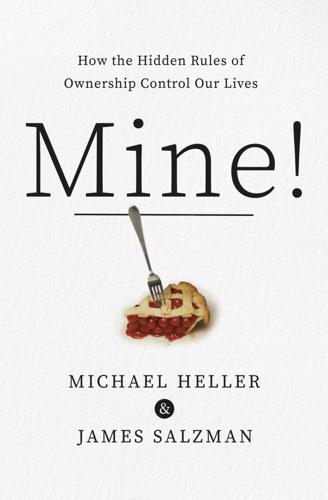
Mine!: How the Hidden Rules of Ownership Control Our Lives
by
Michael A. Heller
and
James Salzman
Published 2 Mar 2021
Reaping where others have sown is a much more integral part of everyday life than people realize. How is this possible? Lawyers and laypeople alike have a bias—an unjustified faith, really—that legal ownership matters. Often it doesn’t. Creators rely on at least four strategies to make a living off their labor, even without legal protection. The so-called first mover advantage is a powerful reward to creative labor and one that comes without many of the downsides of formal ownership. Coaches, for example, find it worthwhile to develop new tactics each season. Why? Because the first use of, say, the pistol offense helped win football games—no one saw it coming—advancing the innovator to the playoffs before competing coaches had time to adapt.
…
IBM gets so much value from Linux that the company willingly donates millions of dollars of its engineers’ time to maintain and improve the software. The better Linux performs, the more IBM can make by selling its services layered on top. So it contributes even though Linux benefits IBM’s competitors as well. Linux continues to improve, but no one owns it. Entire industries thrive in a no-ownership world through these strategies—first mover advantages, shaming, social media, and growing the pie. None of these tools is perfect. Shaming can lead to violence; social media can become mob rule. Each tool for rewarding labor has advantages and limits. But that’s true for law as well. And when creators do rely on law to counter copying, enforcement is often counterproductive.
…
We could decide to leave data free—as with fashion, jokes, and sports plays. Perhaps a no-ownership world creates more value than the rules that lawmakers would likely impose. But who benefits from this value? For 23andMe and its industry cohort, no-ownership would be fine: the companies do not need law to reward their labor. Nor do they rely on shaming and first mover advantages as in fast fashion conflicts. Instead, they can use secrecy and scale to control genetic resources without ownership. Secrecy is straightforward: the industry doesn’t publish its gene databases; it licenses access instead. Here secrecy substitutes for copyright; it can replace patents, too.

The AI Economy: Work, Wealth and Welfare in the Robot Age
by
Roger Bootle
Published 4 Sep 2019
But in the digital, networked world, as output rises, average costs fall; and marginal costs do not rise and may even fall. The interaction between these two parts of the economy will influence relative income shares, profit rates, and the behavior of the macroeconomy. A potentially negative consequence is that falling cost curves tend to favor the growth of monopoly and/or oligopoly and to reinforce “first-mover advantage.” This influence is most evident in the information technology industry itself. The internet has given birth to enormously profitable and influential corporations with startlingly small workforces. (I take up these issues in Chapter 6.) But a more favorable implication is the continuation of stable inflation at higher rates of economic activity and lower rates of unemployment.
…
After all, iconic companies like Facebook, Google, and Amazon did not exist 25 years ago. Their emergence from nowhere eroded or destroyed the profit position of many established businesses and brought great benefits to consumers. Accordingly, it would be most unwise to assume that their own market position is set in stone for all time. Because of economies of scale and first mover advantage, they may not be very vulnerable to competitors trying to do the same as them – although they cannot be sure of this. Their real vulnerability is that some new technology may come along and undermine them, just as happened to those who preceded them. Furthermore, some modern technologies, such as blockchain and 3D printing, facilitate small-scale production.
…
Just as the Industrial Revolution revolutionized the international balance of power, this new revolution could do the same. The Industrial Revolution launched the UK into greatness because it industrialized first and for a while, until Germany and the USA overtook it, it enjoyed a considerable first mover advantage. Is there a country that is clearly placed to be a leader in the Robot Age? And are there countries that we can readily identify as likely losers? It should be stressed that taking full advantage of AI comes in two forms – production and consumption. These will not necessarily go hand in hand.
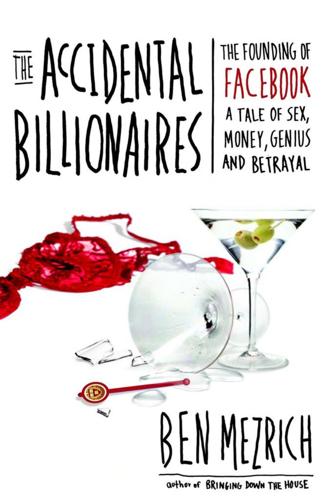
The Accidental Billionaires: The Founding of Facebook: A Tale of Sex, Money, Genius and Betrayal
by
Ben Mezrich
Published 13 Jul 2009
Hopefully gaining members in colleges across the country. Hopefully, somehow, competing with thefacebook, MySpace, Friendster, and all the other social networks that were already moving forward, spreading like viruses across the World Wide Web. Tyler knew they were starting at a huge disadvantage. He knew all about the business concept of “first mover advantage;” his father had taught business at Wharton for twelve years after founding his consulting company, and he’d explained the idea to Tyler many times. For certain industries, it wasn’t about quality of product or even corporate strategy. It was about who got there first. It was a landgrab, and ConnectU was coming late to the plains.
…
It was exploding in ways none of them could have foreseen. And meanwhile, ConnectU had pretty much stalled at the gate. Despite the fact that ConnectU was chock-full of features, had launched in a number of schools at the same time—it simply couldn’t compete with the viral nature of thefacebook. Whether it was the curse of first-mover advantage, or simply that people liked thefacebook better, ConnectU was nothing but a little blip on the social networking radar. Thefacebook was a relative monster. Godzilla, crushing everything in its path. Tyler forced a smile back on his lips, and made some small talk with the barrister, pushing the subject of thefacebook aside—but all the while, his mind was churning through thoughts that he’d been fighting for the past four weeks.
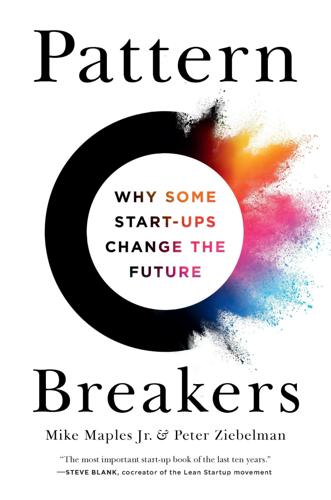
Pattern Breakers: Why Some Start-Ups Change the Future
by
Mike Maples
and
Peter Ziebelman
Published 8 Jul 2024
It allows you to narrow in on the types of capabilities that will lead to breakthroughs. This can be counterintuitive because what often happens when we experiment is an effort to validate a hypothesis. But if we seek only validation, we will only confirm what we know. We also want to seek new learning that takes advantage of our first-mover advantage into the future. GOOD, BETTER, DESPERATE Why is it vital to find people who are desperate? A powerful inflection enables you to deliver something radically different, something that confers new capabilities that seem magical. A powerful insight allows you and only you to deliver these magical capabilities in a specific way not yet discovered by others.
…
What if the costs skyrocket or regulatory constraints become a hurdle? However, the potential upside is tremendous. The airline industry hasn’t seen any groundbreaking improvements in years; the most notable changes have been limited to in-flight entertainment and fuel efficiency. With this partnership, United might change the rules of the game, secure a first-mover advantage in the realm of supersonic travel, and attract premium customers. It’s a high-risk move, but one that could pay off spectacularly, positioning United as the trailblazer in a new era of aviation. The results of this partnership are yet to be determined. Regardless, we can share the mixed emotions of excitement and trepidation that corporate leaders such as Scott Kirby feel when they decide to take a significant risk for a potentially big reward.

Bitcoin Internals: A Technical Guide to Bitcoin
by
Chris Clark
Published 16 Jun 2013
The system would still continue to operate normally in countries without a ban, and underground users would find ways to avoid being caught (by using the Tor service, for example). A more likely threat to Bitcoin’s success is its competition. Since the introduction of Bitcoin, several alternative currencies have sprung up. These alternatives claim to have advantages over Bitcoin, though none yet rival Bitcoin in popularity. Bitcoin definitely has the first-mover advantage, but if a competitor manages to become noticeably superior, there could be an exodus from Bitcoin. Commentators have criticized Bitcoin in various ways, most notably on its inability to scale to larger transaction volumes. However, Bitcoin developers are actively improving the system and these criticisms could be addressed before competitors get off the ground.

How to Hide an Empire: A History of the Greater United States
by
Daniel Immerwahr
Published 19 Feb 2019
The firms or countries whose standards prevail sprint ahead while their competitors retool or learn the new system. Economists call it a “first-mover advantage.” But that advantage subsides with time. Once everyone uses 60-degree screw threads, there’s no benefit to having been the first one to have used them (though there may be other rewards for having gotten ahead of the learning curve). The longer the race, the less meaningful a head start is. The United States’ ability to promulgate its standards gave it considerable first-mover advantages. But those who adopted U.S. standards early did well, too—call them the second movers. In nursing, the Filipinos were the second movers.
…
In the sixties, the “British Invasion” reversed the cultural flow of rock music. Starting with the Beatles, British musicians who had mastered rock and blues made their way to the United States: the Rolling Stones, Eric Clapton, the Who, Pink Floyd, Van Morrison, and Led Zeppelin. Whatever first-mover advantage artists such as Elvis Presley and Chuck Berry used to enjoy had clearly expired, as the British bands could dominate the charts just as easily. Sony started something similar with its transistor radio. And after it came still more Japanese firms. Such names as Nikon, Canon, Mitsubishi, Honda, Toyota, Subaru, Nissan, Mazda, Kawasaki, Toshiba, Sanyo, Panasonic, and Nintendo gained household familiarity in the United States.
…
Dulles, Allen Dulles, John Foster DuPont Corporation Durex Durrell, Lawrence Dust Bowl Dutch Empire; East Indies in Dylan, Bob “Dymaxion map” dysentery Earhart, Amelia Early, Steve Eastern Bloc, see Soviet Union Eaton Labs École des Beaux-Arts Economist, The Eden, Anthony Egypt Einstein, Albert Eisenhower, Dwight El Alamein, Battle of Elba electronics Elements of Agricultural Chemistry (Davis) Elks Club (Manila) Ellis, Joseph Emerson, Ralph Waldo Empire Day Enewetak Atoll England; U.S. nuclear weapons in; see also Britain; London English language; alternative lingua francas to; decolonization and native languages versus; globalization of; Native American speakers of; simplified orthographies for; in U.S. territories Enlightenment Epstein, Brian Esperanto extraordinary rendition Exxon Fagen, David Fahd, King of Saudi Arabia Fairbanks (Alaska) Federal Bureau of Investigation (FBI) Federalist Party, Puerto Rican Fenn Manufacturing company Ferguson, Niall fertilizers, nitrogen; see also guano Feynman, Richard Filipino Democratic Alliance Filipinos, see Philippines Fillmore, Millard Fireball Express first-mover advantage First World War, see World War I Fitzgerald, F. Scott Flag Day Fleming, Ian Flint (Michigan) Florida flying fortresses, see B-17 bombers Flynn, Errol Fonetik Crthqgrafi Fong, Hiram Food and Drug Administration (FDA) Forbes, Cameron Ford, Gerald Ford, Henry Ford, John Ford Motor Company Fortune 500 companies Fortune magazine Fourteen Points Fox News France; colonies of; Louisiana acquired from; population of; U.S. soldiers in; in World War I; in World War II Franklin, Ben Freinkel, Susan French Indochina French language Friedman, Andrea Friedman, Thomas L.
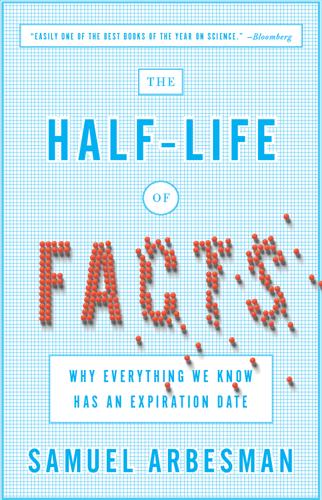
The Half-Life of Facts: Why Everything We Know Has an Expiration Date
by
Samuel Arbesman
Published 31 Aug 2012
While this is no doubt a fun bit that Kennaway inserted to see if his committee members were paying attention (my aunt placed a banana bread recipe into her master’s thesis and no one noticed), Kennaway actually cites Moriarty’s mathematical work to explain something, providing the justification for a mathematical concept using the work of a fictional character. Thus far, I haven’t seen many other examples of this, and I doubt such bizarre overlaps of fiction with reality have propagated far. But it does give one pause. Bad information can spread fast. And a first-mover advantage in information often has a pernicious effect. Whatever fact first appears in print, whether true or not, is very difficult to dislodge. Sara Lippincott, a former fact-checker for The New Yorker, has made this explicit. These errors “will live on and on,…deceiving researcher after researcher through the ages, all of whom will make new errors on the strength of the original errors, and so on into an explosion of errata.”
…
In fact, one of the main reasons that the brontosaurus rose to such prominence is due to Marsh’s discovery of a complete “brontosaurus” skeleton at Como Bluff. Today, any museum worth its voluntary admission price has a display featuring at least some of the big names of Dinosauria. Most people don’t realize that it is for a simple reason: These were the easiest dinosaurs to find—the low-hanging terrible lizard fruit, as it were. They had the first-mover advantage in fossils, and have therefore gained an outsize share of our brains’ stock of dinosaur knowledge. What we study is not always what is actually out there; it’s often what we’re interested in, or what’s easiest to discover. . . . MEASUREMENT is a double-edged sword. It can create errors where none existed before.
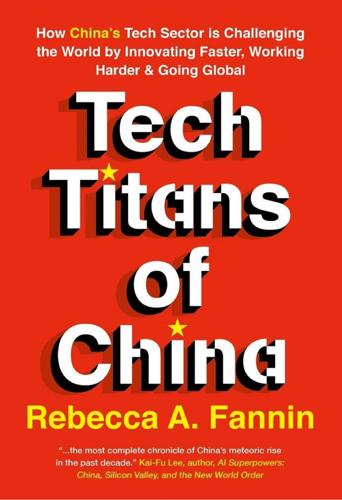
Tech Titans of China: How China's Tech Sector Is Challenging the World by Innovating Faster, Working Harder, and Going Global
by
Rebecca Fannin
Published 2 Sep 2019
—Merit Janow Dean, Columbia University’s School of International and Public Affairs China’s race to be the global leader in upcoming fifth-generation (5G) wireless mobile communications is one of the key battlegrounds. This new breakthrough will turbocharge connections and hyperconnect data from smartphones, laptops, refrigerators, dog collars, medical devices, and vehicles—and transform how homes, cities, hospitals, vehicles, and factories operate. Racing to get a first-mover advantage, China has outspent the United States on wireless infrastructure and cell sites by approximately $24 billion since 2015 and plans to invest more than $400 billion in 5G testing and development over the next 10 years.31 What’s standing in China’s way is US and foreign ally blocks of China-made core equipment in national networks over security concerns.
…
She built that business on smart ordering and dispatching, leveraging data like Uber does to route drivers to passengers and their destinations. It’s questionable that Luckin can unseat longtime leader Starbucks in China, but it gained momentum with a recent Nasdaq IPO that raised $561 million. Starbucks is leveraging its first-mover advantage in China, global resources, and newfound tech savvy to keep an edge over Luckin. But Luckin continues the pursuit. It wouldn’t be the first time that a homegrown Chinese upstart beat a major American brand in China. Breaking Through in China Localizing China operations, partnering, and embarking on new digital frontiers like Starbucks has is a formula that is working for a few other American tech standouts that have entered the Middle Kingdom: LinkedIn, Airbnb, WeWork, and Evernote.
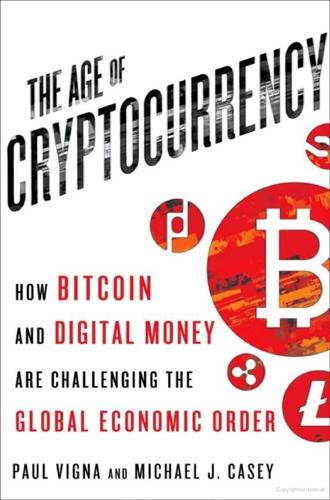
The Age of Cryptocurrency: How Bitcoin and Digital Money Are Challenging the Global Economic Order
by
Paul Vigna
and
Michael J. Casey
Published 27 Jan 2015
Their founders are touting their coins as fairer and more sustainable models. They claim to take the good aspects of bitcoin’s decentralized structure but to get rid of its negative elements, such as the hashing-power arms race, the excessive use of electricity, and the concentration of industrialized mining power. Bitcoin has a big first-mover advantage over these new players, which is why many developers think the best solution is to fix its flaws rather than come up with entirely new systems. Nevertheless, the best altcoins are bringing an edgy and potentially constructive force of competition to bear in the whole cryptocurrency arena. Of these altcoins, litecoin, invented by Charlie Lee, is to date the most successful.
…
That’s because the bitcoin value is essentially irrelevant versus the more important purpose of conveying the decentralized application’s critical metadata across the network, even though some value exchange is needed to make the communication of information happen. These providers have decided to throw their lot in with bitcoin, betting that its first-mover advantage, which has made it by far the most heavily traded, mined, and liquid cryptocurrency, with a global network of prodigious computing power, assures their users of a robust, reliable network to authenticate the integrity of their operations. Other Blockchain 2.0 projects have adopted a different philosophy.
…
The case for bitcoin’s becoming the king of currencies might seem far-fetched given the adoption stats we cited above, but all big things had to begin somewhere. Back in 2009, few expected bitcoin to get as far as it has. What’s more, as we’ve discussed, the low-cost, high-speed decentralized network on which bitcoin’s blockchain is based has a genuine benefit. Given that bitcoin is by far the most entrenched of all cryptocoins, with a clear first-mover advantage, if any new currency is to capitalize on those benefits, it might as well be bitcoin. This is a digital age, and bitcoin is digital money. In a world where people live on their phones, in a world where so much commerce is done online, simplicity and cost savings are in its favor. All that’s needed is for one of those catalysts described above, and then another, and another, and another.

The Internet Is Not the Answer
by
Andrew Keen
Published 5 Jan 2015
On November 5, 1999, the day of its IPO, Webvan was valued at almost $8 billion.33 A little over a year and a half later, on July 10, 2001, Webvan filed for bankruptcy protection and shut down. In spite of the Webvan disaster, the winner-take-all model had a particular resonance in the e-commerce sector, where the so-called Queen of the Net, the influential Morgan Stanley research analyst Mary Meeker (who is now a partner at KPCB), saw first-mover advantage as critical in dominating online marketplaces. And it was this winner-take-all thinking that led Jeff Bezos, in 1996, to accept an $8 million investment from John Doerr in exchange for 13% of Amazon, a deal that valued the year-old e-commerce startup at $60 million.34 “The cash from Kleiner Perkins hit the place like a dose of entrepreneurial steroids, making Jeff more determined than ever,” noted one early Amazon employee about the impact of the 1996 KPCB investment.35 “Get Big Fast” immediately became Bezos’s mantra.
…
Which is exactly what he did, with Amazon’s value growing to over $150 billion by June 2014, making the Everything Store by far the dominant retailer on the Internet, crushing or acquiring its competitors, monopolizing the mental shelf space of online consumers, selling everything from books, baby gear, and beauty products to shoes, software, and sporting goods. Mary Meeker was right about first-mover advantage on the Internet and its consequence of a winner-take-all economy dominated by a coterie of massively powerful global companies. What Kevin Kelly incorrectly predicted as the Internet’s “decentralized ownership and equity” structure has, in fact, turned out to be a rigidly centralized economy controlled by what Fred Wilson, the New York City–based cofounder of Union Square Ventures and one of the smartest early-stage investors in the Internet economy, calls “dominant networks that are emerging all around us,” like “Google, Twitter, YouTube, SoundCloud [and] Uber.” 36 Wilson explains that “for all of its democratizing power, the Internet, in its current form, has simply replaced the old boss with a new boss and these new bosses have market power that, in time, will be vastly larger than that of the old boss.”37 The rules of this new economy are thus those of the old industrial economy—on steroids.
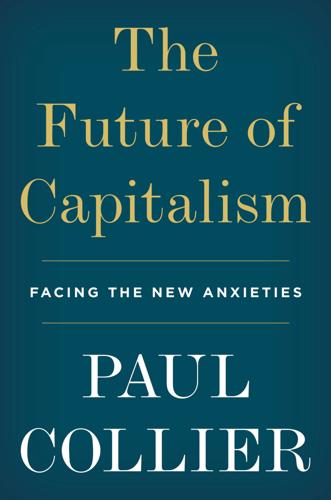
The Future of Capitalism: Facing the New Anxieties
by
Paul Collier
Published 4 Dec 2018
But if a second firm decides to set up shop in the same city, it will have an easier time recruiting the skilled workers it needs – it can poach some of the workers that the pioneer has trained. As a result, the second firm’s set-up costs will be lower than the pioneer’s, enabling it to have a higher return on capital. In other words, pioneers of clusters face what is known as a first mover disadvantage. This is distinctive: more commonly, pioneers enjoy first mover advantage, but this applies to pioneers of new markets, and new technologies. Being the first in a market entrenches the firm ahead of subsequent entrants because it builds brand loyalty – think of Hoover; being the first to a technology allows the firm to patent it – think of Apple. But if the firm is pioneering a new cluster that will sell what it produces in an established market using an established technology, the pioneer bears the costs that later firms avoid.
…
To locate a specific entry, please use your ebook reader’s search tools. 3G mobile phone network, 88 Abedi, Salman, 212, 213 abortion, 99, 102 AfD (Alternative for Germany), 5 Africa, 8, 110–11, 192, 193 capital flight, 208 HIV sufferers in, 120–21 need for modern firms, 37 and World Bank/IMF, 118† youth’s hope of escape to Europe, 121 African Americans, 13 Akerlof, George, 18, 34, 35, 50–51 Amazon, 87, 91, 146, 147 anger management programmes, 160 Apple, 148 asymmetric information, 88, 90, 185 auction theory, 146–7, 148 Bank of England, 39 Bear Stearns, 71, 75, 86 belief systems and belonging, 34, 40–41, 42, 53–6, 165, 211–15 CEO compensation committees, 77–8 Clark’s ‘family culture’, 107–8 the ethical family, 97–8, 99–105, 108, 109, 210 formation through narratives, 34, 40–41, 42, 53–6, 165, 211–15 GM-Toyota comparisons, 72–4 and ISIS, 42 Johnson & Johnson’s Credo, 39–40, 40*, 41, 72, 74*, 79 and leadership, 41–2, 43, 95 of personal fulfilment, 28, 99, 100–101, 102, 103, 108–9, 213 polarization within polities, 38, 63, 202–5 and schools, 165 Theory of Signalling, 41, 43, 53, 63, 95 and trust, 27, 29*, 48, 53–4, 55–6, 59, 63, 73–4, 79, 94–5, 210 see also belonging, narrative of; reciprocity value-based echo-chambers, 38, 61–2, 64–5, 212, 215 see also nationalism belonging, narrative of absent from Utilitarian discourse, 16, 59, 66–7, 210–11 avoided by politicians, 66–7, 68, 211, 215 as a basic drive, 27, 31, 42–3, 65, 66 and belief systems, 34, 40–41, 42, 53–6, 211–15 in Bhutan, 37† civil society networks/groups, 180–81 and ‘common knowledge’, 32–3, 34, 54, 55, 66, 212 families as natural units for, 32, 97–8, 104 heyday of the ethical state, 49, 68, 114 and home ownership, 68, 181–2, 184 and ISIS, 42, 212, 213 and language, 32, 33, 54, 57 and mutual regard/reciprocity, 25, 40–41, 49, 53–6, 67, 68, 98, 181, 182, 210–11, 212–13 place-based identity, 51–6, 65–8, 211–14, 215 and purposive action, 68, 98, 114, 211, 212, 213 and salient identity, 51–6 Bennett, Alan, The History Boys, 7* Bentham, Jeremy, 9–10, 12, 13 Berlusconi, Silvio, 14 Besley, Tim, 18–19, 35 Betts, Alex, 27 BHS, 80, 172 Bhutan, 37†, 63 Biafra, 58 Bitcoin, 37–8, 193 Blackpool, 4 Bonhoeffer, Dietrich, Letters and Papers from Prison, 108 The Bottom Billion (Collier), 27 Brazil, 58 Brexit vote (June 2016), 5, 125, 131, 196, 215 British Academy, 7 British Motor Corporation, 74 Brooks, David, The Road to Character, 108 Buiter, Willem, 186 Bush, George W., 120–21 business zones, 150 ‘Butskellism’, 49* Cadbury, 77 Cameron, David, 205 Canada, 22 capitalism competition, 21, 25, 56, 85, 86 ‘creative destruction’ concept, 21 current failings of, 4–5, 17, 25, 42, 45–6, 48, 201, 212–13 and decline of social trust, 5, 45–6, 48, 55, 59, 69 as essential for prosperity, 4–5, 18, 20, 25, 201 and families, 37 first mover advantage, 148 and greed, 10, 19, 25–7, 28, 31, 42, 58, 69, 70†, 81, 95 and Marx’s alienation, 17–18 and oppositional identities, 56, 74 vested interests, 85, 86, 135–6, 207 see also firms Catalan secession movement, 58 causality, narrative of, 33, 34 CDC Group, 122, 149* Chaucer, Geoffrey, The Canterbury Tales, 129 Chicago, University of, 166 childhood adoption, 110–11 children in ‘care’, 104, 105, 110, 111, 157 children ‘reared by wolves’, 31–2 cognitive development, 105–6, 170, 175–6 fostering, 104, 105, 111 identity acquisition, 32 impact of parental unemployment, 160–61 learning of norms, 33, 35, 107–8 non-cognitive development, 105, 163, 169–70, 171–3, 174, 175–6 ‘rights of the child’ concept, 103–4 in single-parent families, 101, 102, 104–5, 155, 160 trusted mentors, 169–70 see also family China, 118–19, 149, 203 Chira, Susan, 52–3 Chirac, Jacques, 14, 120–21 Christian Democratic parties, 5, 14 Citigroup, 186 Clark, Gregory, The Son Also Rises, 106–8 Clarke, Ken, 206 class divide assortative mating among new elite, 99–100, 154, 188–9 author’s proposed policies, 19–20, 21, 183–4, 187–8, 190, 207–8 and breadth of social networks, 169 and Brexit vote, 5, 196 and cognitive development, 105–6 divergence dynamic, 7, 18, 48, 98–108, 154–61, 170–71, 172–80, 181–90 ‘elite’ attitudes to less-well educated, 4, 5, 12, 16, 53, 59, 60–61, 63 and family life, 20, 98, 99–106, 157–62 and fracture to skill-based identities, 3–5, 51–6, 78 and home ownership, 68, 181, 182–3 need for socially mixed schools, 164–5 and non-cognitive development, 105, 163, 169–70, 171–3, 174, 175–6 and parental hothousing, 100, 101, 105–6 post-school skills development, 170–76 pre-emptive support for stressed families, 20, 155, 157–60, 161–3, 208 and reading in pre-teens, 167–9 and recent populist insurgencies, 5 retirement insecurities, 179–80 and two-parent families, 155–6, 157 unravelling of shared identity, 15, 50, 51–6, 57*, 58–61, 63, 215 see also white working class climate change, 44, 67, 119 Clinton, Hillary, 5, 9, 203–4 coalition government, UK (2010–15), 206 cognitive behavioral therapy, 160 Cold War, 113, 114, 116 end of, 5–6, 115, 203 Colombia, 120 communism, 32, 36–7, 85–6 communitarian values care, 9, 11, 12, 16, 29, 31, 42, 116 fairness, 11, 12, 14, 16, 29, 31, 34, 43, 116, 132–3 hierarchy, 11, 12, 16, 38–9, 43, 99–100 left’s abandonment of, 16, 214* liberty, 11, 12, 16, 42 loyalty, 11, 12, 16, 29, 31, 34, 42–3, 116 new vanguard’s abandonment of, 9, 11–13, 14–15, 16, 17, 49–50, 113, 116–18, 121, 214 post-war settlement, 8–9, 49, 113–16, 122 and reciprocal obligations, 8–9, 11–12, 13, 14, 19, 33, 34, 40–41, 48–9, 201, 212–15 roots in nineteenth-century co-operatives, 8, 13, 14, 201 sanctity, 11, 16, 42–3 Smith and Hume, 21–2† values and reason, 29–30, 43–4 see also belonging, narrative of; obligation, narrative of; reciprocity; social democracy Companies Act, UK, 82 comparative advantage, 20, 120, 192, 194 Confederation of British Industry (CBI), 79 conservatism, 30, 36 Conservative Party, 14, 49, 205, 206 contraception, 98–9, 102 co-operative movement, 8, 13, 14, 201 Corbyn, Jeremy, 202, 204–5 Crosland, Anthony, The Future of Socialism, 17, 18, 19 Cuban Missile Crisis (1962), 114 debutante balls, 188 Denmark, 63, 178, 214* Descartes, Rene, 31 Detroit, 128, 129, 144 Deutsche Bank, 78, 185 development banks, 149–50 Development Corporations Act (1981), 150 Dickens, Charles, Bleak House, 108 digital networks detachment of narratives from place, 38, 61–2 economies of scale, 86–7 global e-utilities, 37, 38, 86–7, 89–90, 91 social media, 27, 61, 87, 173, 207, 215 value-based echo-chambers, 38, 61–2, 64–5, 212, 215 Draghi, Mario, 153 Dundee Project, 161–2 Dutch Antilles, 193 East Asia, 147, 192 eBay, 87 economic man, 10, 19, 25, 26–7, 31, 34–5, 196, 209, 210, 215 economic rent theory, 19, 91, 133–9, 140–44, 186–8, 192, 195, 207 education and collapse of social democracy, 50, 52, 53, 54, 55, 59, 63 and empathy, 12 and European identity, 57* expansion of universities, 99–100, 127 and growth of the middle class, 100 inequality in spending per pupil, 167 mis-ranking of cognitive and non-cognitive training, 174–6 need for socially mixed schools, 164–5 post-school skills development, 170–76 pre-school, 105–6, 163–4 quality of teaching, 165–6 reading in pre-teens, 167–9 and shocks to norms of ethical family, 98, 99–105 symbols of cognitive privilege, 175 teaching methods, 166–7 vocational education, 171–6 zero-sum aspects of success, 189 electoral systems, 206 Emerging Market economies, 129, 130–31 empires, age of, 113 The Enigma of Reason (Mercier and Sperber), 29 enlightened self-interest, 33, 40*, 97–8, 101, 109, 112, 113, 114, 117, 184, 213 Enron, 80 ethnicity, 3, 20, 56, 62, 64, 65, 211 Europe Christian Democrats in, 5, 14 class divides, 3, 4, 5, 125 decline in social trust, 45 and knowledge industries, 192 metropolitan-provincial divides, 3, 4, 125 and migration, 121, 197 and shared identity, 57–8, 64, 66, 125 social democracy in, 8–9, 49, 50 European Central Bank, 153 European Commission, 57 European Investment Bank, 149 European Union (EU, formerly EEC), 66, 67, 114, 115, 116, 117 Brexit vote (June 2016), 5, 125, 131, 196, 215 Eurozone crisis, 153 public policy as predominantly national, 212 universities in, 170 evolutionary theory, 31, 33†, 35–6, 66 externalities, 145–6 Facebook, 87 Fairbairn, Carolyn, 79 fake news, 33–4 family, 19 African norms, 110–11 benefits for single parents, 160 Clark’s ‘family culture’, 107–8 entitled individual vs family obligation, 99–103, 104–6, 108–9, 210 equality within, 39, 154 erosion of mutual obligations, 101–2, 210 identity acquisition, 32 ideologies hostile to, 36–7 impact of unemployment/poverty, 4, 7, 160–61 importance of, 36, 37 and increased longevity, 110, 161 in-kind support for parenting, 161 nuclear dynastic family, 102, 110, 154 one-parent families, 101, 102, 104–5, 155, 160 parental hothousing, 100, 101, 105–6 post-1945 ethical family, 97–8, 99–105, 108, 210 pressures on young parents, 159–60, 161–3 and public policy, 21, 154–5, 157–70, 171–3, 177, 209 and reciprocity, 97–8, 101, 102 shocks to post-1945 norms, 98–105 shrinking of extended family, 101–2, 109–10, 161 social maternalism concept, 154–5, 157–8, 190 two-parent families as preferable, 155–6, 157 see also childhood; marriage Farage, Nigel, 202 fascism, 6, 13*, 47, 113 Federalist papers, 82 feminism, 13, 99 Fillon, François, 204 financial crisis, global (2008–9), 4, 34, 71, 160 no bankers sent to gaol for, 95–6 financial sector, 77–9, 80–81, 83–5 asymmetric information, 88, 185 co-ordination role, 145–6 economies of scale, 87 localized past of, 84, 146 toxic rivalries in, 189 trading in financial assets, 78–9, 84, 184–5, 186, 187 Finland, 63 firms, 19, 21, 69 CEO pay, 77–8, 79, 80–81 competition, 21, 25, 56, 85, 86 control/accountability of, 75–81, 82–5 cultures of good corporate behaviour, 94–5 demutualization in UK, 83, 84 deteriorating behaviour of, 18, 69, 78, 80–81 economies of scale, 17–18, 37, 86–7, 88–91, 126–7, 144–5, 146–7 ethical, 70–71, 172, 209–10 and ethical citizens, 93–4, 95, 96 failure/bankruptcy of, 70, 71, 72, 74, 75–6 flattening of hierarchies in, 39 Friedman’s profit nostrum, 69–70, 71, 76, 78–9, 210 global e-utilities, 37, 38, 86–7, 89–90, 91 ideologies hostile to, 37, 81 low productivity-low cost business model, 173–4 ‘maximising of shareholder value’, 69–70, 76, 79, 82–3 ‘mutuals’, 83 need for bankslaughter crime, 95–6 new network features, 86–7 policing the public interest, 93–4 public dislike of, 69, 95–6 public interest representation on boards, 92–3 regulation of, 87–90, 174 reward linked to short-term performance, 77, 78–81 sense of purpose, 39–40, 41, 70–75, 80–81, 93–4, 96 shareholder control of, 76–7, 79, 80, 82–3 societal role of, 81–2, 92–3, 96, 209–10 utility services, 86, 89, 90 worker interests on boards, 83, 84–5 Fisher, Stephen, 196* Five Star, 125 Ford, 70, 71 France, 7, 63, 67, 114 écoles maternelles in, 164 labour market in, 176, 189 pensions policy, 180 presidential election (2017), 5, 9, 204 universities in, 170 working week reduced in, 189 Frederiksen, Mette, 214* Friedman, Milton, 15, 69–70, 71, 76 The Full Monty (film), 7, 129 G20 group, 118 G7 group, 118 G8 group, 194 Ganesh, Janan, 125 Geldof, Bob, 169 General Agreement on Tariffs and Trade (GATT), 114, 115, 116–17 General Motors (GM), 72, 73–4, 75, 86, 172 geographic divide, 3, 16, 18, 19, 215 author’s proposed policies, 19, 207 and Brexit vote, 125, 196 broken cities, 4, 7, 19, 48, 125, 129–30, 147–9 business zones, 150 co-ordination problem over new clusters, 145–50, 207 decline of provincial cities, 4, 7, 19, 48, 125, 129–30, 131, 144–5 economic forces driving, 126–30 and education spending, 167 first mover disadvantage, 148–9 ideological responses, 130–32 investment promotion agencies, 150–51 and local universities, 151–2 and metropolitan disdain, 125 need for political commitment, 153 as recent and reversible, 152–3 regenerating provincial cities, 19, 142, 144–50 and spending per school pupil, 167 widening of since 1980, 125 George, Henry, 133–6, 141 Germany 2017 election, 5, 205 local banks in, 146 Nazi era, 57 and oppositional identities, 56–7 oversight of firms in, 76 post-war industrial relations policy, 94–5 and post-war settlement, 114 re-emergence of far right, 5 rights of refugees in, 14 ‘social market economy’, 49 TVET in, 171–2, 174, 175 vereine (civil society groups), 181 worker interests on boards, 84–5 global divide, 7–8, 20, 59–60, 191–8, 208 globalization, 4, 18, 20, 126–7, 128, 129, 130–31, 191–8 Goldman Sachs, 70†, 83–4, 94 Google, 87 Great Depression (1930s), 114 Green, Sir Philip, 80 Grillo, Beppe, 202 ‘Grimm and Co’, Rotherham, 168–9 Gunning, Jan Willem, 165 Haidt, Jonathan, 11–12, 14, 16, 28, 29, 132–3 Haiti, 208 Halifax Building Society, 8, 84 Hamon, Benoît, 9, 204 Harvard-MIT, 7, 152 Hershey, 77 HIV sufferers in poor countries, 120–21 Hofer, Norbert, 202 Hollande, Francois, 9, 204 Hoover, 148 housing market, 181–4 buy-to-let, 182, 183, 184 and lawyers, 187 mortgages, 84, 176, 182, 183–4 proposed stock transfer from landlords to tenants, 184 Hume, David, 14, 21, 21–2†, 29 Huxley, Aldous, Brave New World (1932), 5 Iceland, 63 Identity Economics, 50–56, 65–7 ideologies based on hatred of ‘other’ part of society, 43, 56, 213, 214 ‘end of history’ triumphalism, 6, 43–4 hostile to families, 36–7 hostile to firms, 37, 81 hostile to the state, 37–8 and housing policy, 183 and migration, 198 New Right, 14–15, 26, 81, 129 norms of care and equality, 116, 132–3 polarization of politics, 38, 63, 202–5 pragmatic eschewal of, 17, 18, 21, 22, 29–30 and principle of reason, 9, 13, 14, 15, 21, 43 Rawlsian vanguard, 13–14, 30, 49–50, 53, 67, 112, 113, 201, 202, 203, 214 return of left-right confrontation, 5, 6, 81, 202–5 and rights, 12–14, 44, 112 seduction of, 6 and twentieth century’s catastrophes, 5–6, 22 views on an ethical world, 112 see also Marxism; rights ideology; Utilitarianism IFC (International Finance Corporation), 122 Imperial Chemical Industries (ICI), 69–70, 75 India, 118–19 individualism entitled individual vs family obligation, 99–103, 104–6, 108–9, 210 fulfilment through personal achievement, 28, 99, 100–101, 102, 103, 108–9, 213 New Right embrace of, 14–15, 53, 81, 214–15 as rampant in recent decades, 19, 214–15 reciprocity contrasted with, 44–5 and withering of spatial community, 61–2 industrial revolution, 8, 126 inequality and assortative mating among new elite, 99–100, 154, 188–9 and divergence dynamic, 7, 18, 48, 98–108, 154–61, 170–71, 172–80, 181–90 and financial sector, 185 and geographic divide, 3, 7–8, 20, 125 global divide, 7–8, 20, 59–60, 191–8, 208 persistence of, 106–8 Rawls’ disadvantaged groups, 3–4, 13–14, 16, 50, 53, 121, 203–4, 214 and revolt against social democracy, 15–16 rising levels of, 3–5, 106, 125, 181, 190 and Utilitarian calculus, 132 innovation, 185–6, 208 International Monetary Fund (IMF), 114, 117 international relations achievement of post-WW2 leaders, 113–16, 122 building of shared identity, 114–16 core concepts of ethical world, 112, 113–14 erosion of ethical world, 116–18 expansion of post-war ‘clubs’, 116–18, 210 new, multipurpose club needed, 118–19, 122 and patriotism narrative, 67 situation in 1945, 112–13, 122 investment promotion agencies, 150–51 Irish Investment Authority, 151 Islamist terrorism, 42, 212, 213 Italy, 4, 58, 160 James, William, 29* Janesville (US study), 178 Japan, 72–3, 94, 101, 149, 192 John Lewis Partnership, 83, 172 Johnson, Robert Wood, 39–40, 72 Johnson & Johnson, 39–40, 41, 72, 74*, 79 Jolie, Angelina, 112 JP Morgan, 71* Juppé, Alain, 204 Kagame, Paul, 22 Kay, John, 82*, 84, 211 Keynes, John Maynard, 115 General Theory (1936), 47 kindergartens, 163 Knausgård, Karl Ove, 173 knowledge revolution, 126, 127–8 Kranton, Rachel, 35, 50–51 Krueger, Anne, 141 Krugman, Paul, 47 labour market flexicurity concept, 178 function of, 176–7 and globalization, 192, 194–6 and immigration, 194, 195, 196 investment in skills, 176–7 job security, 176, 177 and low productivity-low cost business model, 173–4 minimum wage strategies, 147, 174, 176, 180 need for reductions in working hours, 189 need for renewed purpose in work, 190 regulation of, 174, 189 and robotics revolution, 178–9 role of state, 177–8, 189 see also unemployment Labour Party, 49, 206 Marxist take-over of, 9, 204–5 language, 31, 32, 33, 39–40, 54, 57 Larkin, Philip, 99, 156 lawyers, 13–14, 45 Buiter’s three types, 186 and shell companies, 193, 194 surfeit of, 186–7 taxation of private litigation proposal, 187–8 Le Pen, Marine, 5, 63, 125, 202, 204 leadership and belief systems, 41–2, 43, 95 building of shared identity, 39–42, 49, 68, 114–16 changing role of, 39 and flattening of hierarchies, 39 and ISIS, 42 political achievements in post-war period, 113–16, 122 and pragmatist philosophy, 22 and shared purpose in firms, 39–40, 41, 71–5 strategic use of morality, 39–40, 41 transformation of power into authority, 39, 41–2, 57 League of Nations, 116 Lee Kwan Yew, 22, 147 Lehman Brothers, 71*, 76 liberalism, 30 libertarianism, 12–13, 15 New Right failures, 16, 21 Silicon Valley, 37–8 lobbying, 85, 141 local government, 182, 183 London, 3, 125, 127–8, 165–6, 193 impact of Brexit on, 131, 196 migration to, 195–6 Macron, Emmanuel, 67, 204 Manchester terror attack (2017), 212, 213 market economy, 19, 20, 21, 25, 48 and collapse of clusters, 129–30, 144–5 failure over pensions, 180 failure over skill-formation, 173–4 mutual benefit from exchange, 28 market fundamentalists, 147, 150 marriage assortative mating, 35, 99–100, 154, 188–9 cohabitation prior to, 99, 100 as ‘commitment technology’, 109, 155–6 divorce rates, 98, 99, 100–101, 102, 103 and female oppression, 156 religious associations, 109, 156 and rent-seeking, 141 ‘shotgun weddings’, 103 and unemployment, 103 Marxism, 13*, 26, 30, 43, 47, 113, 203, 214 alienation concept, 17–18 and the family, 36–7 late capitalism concept, 6 takeover of Labour Party, 9, 204–5 and ‘useful idiots’, 205* view of the state, 37 Maxwell, Robert, 80 May, Theresa, 205 Mayer, Colin, 18, 70 media celebrities, 6, 112, 204 Mélenchon, Jean-Luc, 5, 202, 204 mental health, 157, 158–9, 162 Mercier, Hugo, 29 meritocratic elites, 3–4, 5, 12–17, 20 Rawlsian vanguard, 13–14, 30, 49–50, 53, 67, 112, 113, 201, 202, 203, 214 Utilitarian vanguard, 9–10, 11–13, 15–16, 18, 52, 53, 59, 66–7, 209 see also Utilitarianism WEIRD (Western, Educated, Industrial, Rich and Developed), 3–4, 12, 14, 16, 17, 20, 116, 121, 133, 214* and white working class, 5, 16 Merkel, Angela, 14, 205 metropolitan areas, 3, 4, 7, 16, 19, 48, 125 co-ordination problem over new clusters, 145–50, 207 economies of agglomeration, 18, 19, 129, 131, 133–44, 195, 196, 207 gains from public goods, 134–5, 138–9 migration to, 195–6 political responses to dominance of, 131–2 scale and specialization in, 126–8, 130, 144–5 and taxation, 131, 132–43, 187, 207 Middle East, 192 Middleton, Kate, 188–9 migration, 121, 194–8, 203 as driven by absolute advantage, 20, 194–5, 208–9 and housing market, 182, 183 Mill, John Stuart, 9–10 minimum wage strategies, 147, 174, 176, 180 Mitchell, Andrew, 188 Mitchell, Edson, 78 modernist architecture, 12 Monarch Airlines, 75 monopolies, natural, 86–7, 88 and asymmetric information, 88, 90 auctioning of rights, 88–9 taxation of, 91–2 utility services, 86, 89, 90 ‘moral hazard’, 179 morality and ethics deriving from values not reason, 27, 28–9, 42–3 and economic man, 10, 19, 25, 26–7, 31, 34–5 and empathy, 12, 27 evolution of ethical norms, 35–6 Haidt’s fundamental values, 11–12, 14, 16, 29, 42–3, 132–3 and market economy, 21, 25, 28, 48 and modern capitalism, 25–6 and new elites, 3–4, 20–21 Adam Smith’s theories, 26–8 use for strategic purposes, 39–40, 41 and Utilitarianism, 9–10, 11, 14, 16, 55, 66–7, 209, 214 motivated reasoning, 28–9, 36, 86, 144, 150, 167 Museveni, President, 121 narratives and childhood mentors, 169–70 and consistency, 41, 67, 81, 96 conveyed by language, 31, 33, 57 detachment from place by e-networks, 38, 61–2 and heyday of social democracy, 49 and identity formation, 32 mis-ranking of cognitive and non-cognitive training, 174–6 moral norms generated from, 33, 97–8 and purposive action, 33–4, 40–41, 42, 68 and schools, 165 of shared identity, 53–6, 81 use of by leaders, 39–42, 43, 49, 80–81 see also belonging, narrative of; obligation, narrative of; purposive action National Health Service (NHS), 49, 159 national identity and citizens-of-the-world agenda, 59–61, 63, 65 contempt of the educated for, 53, 59, 60–61, 63 and distinctive common culture, 37†, 63 established in childhood, 32 esteem from, 51–3 fracture to skill-based identities, 3–5, 51–6, 78 legacy of Second World War, 15, 16 methods of rebuilding, 64, 65–8, 211–15 and new nationalists, 62–3, 67, 203, 204, 205 patriotism narrative, 21, 63, 67, 215 place-based identity, 51–6, 65–8, 211–14, 215 and polarization of society, 54–5 and secession movements, 58 unravelling of shared identity, 15, 50, 51–6, 57*, 58–61, 63, 215 and value identity, 64–5 National Review, 16 nationalism, 34 based on ethnicity or religion, 62–3 capture of national identity notion by, 62, 67, 215 and narratives of hatred, 56, 57, 58–9 and oppositional identities, 56–7, 58–9, 62–3, 68, 215 traditional form of, 62 natural rights concept, 12, 13 Nestlé, 70, 71 Netherlands, 206 networked groups as arena for exchanging obligations, 28 and ‘common knowledge’, 32–3, 34, 54, 55, 66, 212 decline of civil society networks/ groups, 180–81 and early man, 31 evolution of ethical norms, 35–6 exclusion of disruptive narratives, 34 families as, 97–8 leadership’s use of narratives, 39–42, 49 narratives detached from place, 38, 61–2 value-based echo-chambers, 38, 61–2, 64–5, 212, 215 see also family; firms Neustadt, Richard, 39* New York City, 5, 125, 128, 143–4, 193 NGOs, 71, 118, 157–8 ‘niche construction’, 35*, 36* Nigeria, 58 Noble, Diana, 149* Norman, Jesse, 21–2† North Atlantic Treaty Organization (NATO), 114, 115, 116, 117 North Korea, 85 Northern League, Italy, 58 Norway, 63, 206, 208–9 Nozick, Robert, 14–15 obligation, narrative of, 11, 12–13, 16, 19, 29, 33 and collapse of social democracy, 53–6, 210 entitled individual vs family obligation, 99–103, 104–6, 108–9, 210 in ethical world, 112, 113–22 and expansion of post-war ‘clubs’, 117–18, 210 fairness and loyalty instilled by, 34 heyday of the ethical state, 48–9, 68, 196–7 and immigration, 196–7 and leadership, 39, 40–41, 49 ‘oughts’ and ‘wants’, 27, 28, 33, 43 and secession movements, 58 and Adam Smith, 27, 28 see also reciprocity; rescue, duty of oil industry, 192 Organization for Economic Co-operation and Development (OECD), 114–15, 125 Orwell, George, Nineteen Eighty-Four (1949), 5 Oxford university, 7, 70, 100 Paris, 5, 7, 125, 128, 174, 179 patriotism, 21, 63, 67, 215 Pause (NGO), 157–8 pension funds, 76–7, 79–81, 179–80, 185 Pew Research Center, 169 Pinker, Steven, 12* Plato, The Republic, 9, 11, 12, 15, 43 Playboy magazine, 99 political power and holders of economic rent, 135–6, 144 leadership selection systems in UK, 204–5, 206 minimum age for voting, 203 need to restore the centre, 205–7 polarization within polities, 38, 63, 202–5 polities as spatial, 38, 61–2, 65, 68, 211–13 and shared identity, 8, 57–61, 65, 114–16, 211–15 transformation into authority, 41–2, 57–8 trust in government, 4, 5, 48, 59, 210, 211–12 populism, political, 6, 22, 43, 58–9, 202 and geographic divide, 130–31 headless-heart, 30, 60, 112, 119, 121, 122 media celebrities, 6, 112, 204 pragmatism as opposed to, 30 and US presidential election (2016), 5, 203–4 pragmatist philosophy, 6, 9, 19, 21, 21–2†, 46, 201 author’s proposed policies, 19–20, 21, 207–15 limitations of, 30 and Macron in France, 204 and migration, 198 and post-war settlement, 113, 116, 122 and social democracy, 18, 201–2 successful leaders, 22 and taxation, 132, 207 and teaching methods, 166–7 values and reason, 29–30, 43–4 proportional representation, 206 protectionism, 113, 114, 130–31 psychology, social, 16, 54 co-ordination problems, 32–3 esteem’s trumping of money, 174 Haidt’s fundamental values, 11–12, 14, 16, 29, 42–3, 132–3 narratives, 31, 32, 33–4, 38, 39–42, 49, 53–6 norms, 33, 35–6, 39, 42–3, 44, 97–8, 107–8 ‘oughts’ and ‘wants’, 27, 28, 33, 43 personal achievement vs family obligation, 99–103, 104–6, 108–9, 210 ‘theory of mind’, 27, 55 Public Choice Theory, 15–16 public goods, 134–5, 138–9, 186, 202, 213 public ownership, 90 Puigdemont, Carles, 202 purposive action, 18, 21, 25, 26, 34, 40*, 53–4, 68, 112, 211–13 autonomy and responsibility, 38–9 and belonging narrative, 68, 98, 114, 211, 212, 213 in Bhutan, 37† decline in ethical purpose across society, 48 and heyday of social democracy, 47, 49, 114 and narratives, 33–4, 40–41, 42, 68 in workplace, 190 Putnam, Robert, 45–6, 106 Bowling Alone, 181 ‘quality circles’, 72–3 Rajan, Raghuram, 178 Rand, Ayn, 32 rational social woman, 31, 50–51, 196 Rawls, John, 13–14 Reagan, Ronald, 15, 26 Reback, Gary, 90 reciprocity, 9, 19, 31, 212–15 and belonging, 25, 40–41, 49, 53–6, 67, 68, 98, 181, 182, 210–11, 212–13 and collapse of social democracy, 11, 14, 53–6, 58–61, 201, 210 and corporate behaviour, 95 in ethical world, 112, 113–15, 116 and expansion of post-war ‘clubs’, 117–18, 210 fairness and loyalty as supporting, 29, 31, 34 and the family, 97–8, 101, 102 and geographic divide, 125 heyday of the ethical state, 48–9, 68, 96, 196–7, 201 and ISIS, 42 Macron’s patriotism narrative, 67 nineteenth-century co-operatives, 8 rights matched to obligations, 44–5 and three types of narrative, 33, 34, 40–41 transformation of power into authority, 39, 41–2, 57–8 Refuge (Betts and Collier), 27 refugees, 14, 27, 115, 119–20, 213 regulation, 87–90 and globalization, 193–4 of labour market, 174 religion, 56–7, 62–3, 109, 156 religious fundamentalism, 6, 30, 36–7, 212, 213, 215 rent-seeking concept, 140–41, 150, 186, 187–8, 195 rescue, duty of, 40, 54, 119–21, 210, 213 as instrument for ethical imperialism, 117–18, 210 as not matched by rights, 44, 45, 117 and post-war settlement, 113, 115–16 restoring and augmenting autonomy, 121–2 and stressed young families, 163 term defined, 27, 112 value of care as underpinning, 29 retirement pensions, 179–80 rights ideology and corresponding obligations, 44–5 emergence in 1970s, 12–14 human rights lobby, 112, 118, 118* individualism as rampant in recent decades, 19, 214–15 and lawyers, 13–14, 45 Libertarian use of, 12–13, 14–15 natural rights concept, 12, 13 and New Right, 12–13, 14–15, 53 Rawls’ disadvantaged groups, 3–4, 13–14, 16, 50, 53, 112, 121, 203–4, 214 ‘rights of the child’ concept, 103–4 and Utilitarian atate, 12–14 see also individualism Romania, communist, 32, 36 Rotherham, ‘Grimm and Co’, 168–9 rule of law, 138–9, 186 Rwanda, 22 Salmond, Alex, 202 Sandel, Michael, 105 Sanders, Bernie, 9, 64, 202, 203 Sarkozy, Nicolas, 204 Schultz, Martin, 14 Schumpeter, Joseph, 21* Scotland, 58 Seligman, Martin, 108–9 sexual behaviour birth-control pill, 98–9, 102 and class divide, 99, 102, 155–6 concept of sin, 156 and HIV, 121 and stigma, 156–8 sexual orientation, 3, 45 Sheffield, 7, 8, 126, 128–9, 131, 151, 168, 192 shell companies, 193, 194 Shiller, Robert, 34 Sidgwick, Henry, 55 Signalling, Theory of, 41, 43, 53, 63, 95 Silicon Valley, 37–8, 62, 145, 152, 164 Singapore, 22, 147 Slovenia, 58 Smith, Adam, 14, 21, 21–2†, 174 and mutual benefit from exchange, 28 and pursuit of self- interest, 26–7, 40 on reason, 29 The Theory of Moral Sentiments (1759), 27, 28, 174 Wealth of Nations (1776), 26, 28, 174 Smith, Vernon, 28 social democracy ‘Butskellism’, 49* collapse of, 9, 11, 50, 51–6, 116–18, 201–2, 210 communitarian roots, 8–9, 11, 13, 14, 17, 48–9, 201 and group identities, 3–4, 13–14, 51–6 heyday of, 8–9, 15, 17, 47, 48–9, 68, 96, 196–7, 201, 210 and housing, 181–2 influence of Utilitarianism, 9, 10, 14, 16, 18, 49–50, 201, 203, 214 Libertarian challenge, 12–13, 14–15 New Right abandonment of, 14–15, 16, 26, 53 and Public Choice Theory, 15–16 replaced by social paternalism, 11–13, 49–50, 209–10 and rights ideology, 12–14 and secession movements, 58 shared identity harnessed by, 15, 196–7 unravelling of shared identity, 15, 50, 51–6, 57*, 58–61, 63, 215 and Utilitarianism, 214 social maternalism concept, 21, 154–5, 190 free pre-school education, 163–4 mentoring for children, 169–70, 208 support for stressed families, 20, 155, 157–60, 161–3, 208 social media, 27, 61, 87, 173, 207, 215 social paternalism backlash against, 11–13, 15–16 as cavalier about globalization, 20 and child-rearing/family, 105, 110, 154–5, 157, 158, 159, 160, 190, 209 replaces social democracy, 11–13, 49–50, 209–10 ‘rights of the child’ concept, 103–4 and Utilitarian vanguard, 9–10, 11–13, 15–16, 18, 66–7, 209 social services, 159 scrutiny role, 162 Solow, Robert, 141 Soros, George, 15* South Africa, 85 South Asia, 192 South Korea, 129, 130–31 South Sudan, 192 Soviet Union, 114, 115, 116, 203 Spain, 58, 160 specialization, 17–18, 36, 126–8, 130, 144–5, 192 Spence, Michael, 41, 53, 95 Sperber, Dan, 29 St Andrews University, 189 Stanford University, 145, 152 Starbucks, 193 the state, 19 ethical capacities of, 11, 20–21, 48–9 failures in 1930s, 47, 48 ideologies hostile to, 37–8 and pre-school education, 163–4 and prosperity, 37 public policy and job shocks, 177–8 public policy on the family, 21, 154–5, 157–70, 171–3, 177, 209 public-sector and co-ordination problem, 147–8 social maternalism policies, 21, 157, 190 Utilitarian takeover of public policy, 10–12, 13–14, 15–17, 18, 49–50, 113, 201 Stiglitz, Joseph, 56 Stoke-on-Trent, 129 Stonehenge, 64 Sudan, 8 Summers, Larry, 187 Sure Start programme, 164 Sutton, John, 151* Sweden, 178 Switzerland, 175, 206 Tanzania, 193 taxation and corporate globalization, 193, 194 of economic rents, 91–2, 187–8 ethics and efficiency, 132–43 on financial transactions, 187 generational differences in attitudes, 59 Henry George’s Theorem, 133–6, 141 heyday of the ethical state, 49 issues of desert, 132–3, 134–9 and the metropolis, 131, 132–43, 187, 207 and migration, 197 of natural monopolies, 91–2 ‘optimal’, 10 of private litigation in courts, 187–8 and reciprocity, 54, 55, 59 redesign of needed, 19 redistributive, 10, 11, 14, 49, 54, 55, 60, 197 of rents of agglomeration, 19, 132–44, 207 social maternalism policies, 21, 157 substantial decline in top rates, 55 tax havens, 62 Venables-Collier theory, 136–9 Teach First programme, 165–6 technical vocational education and training (TVET), 171–6 technological change, 4 robotics revolution, 178–9 and withering of spatial community, 61–2 see also digital networks telomeres, 155–6 Tepperman, Jonathan, The Fix, 22 Thatcher, Margaret, 15, 26 Thirty Years War, 56–7 Tirole, Jean, 177, 178 Toyota, 72–3, 74, 94, 172 trade unions, 173, 174, 176 Troubled Families Programme (TFP), 162 Trudeau, Pierre, 22 Trump, Donald, 5, 9, 63, 64, 86, 125, 136, 202, 204, 206, 215 Uber, 87 unemployment in 1930s, 47 and collapse of industry, 7, 103, 129, 192 impact on children, 160–61 older workers, 4, 103, 213 retraining schemes, 178 in USA, 160 young people, 4 Unilever, 70, 71 United Kingdom collapse of heavy industry, 7, 103, 129, 192 extreme politics in, 5 and falling life expectancy, 4 financial sector, 80, 83, 84–5 IMF bail-out (1976), 115 local banks in past, 146 northern England, 3, 7, 8, 84, 126, 128–9, 131, 151, 168, 192 shareholder control of firms, 76–7, 79, 80, 82–3 statistics on firms in, 37 universities in, 170, 172, 175* vocational education in, 172, 175† widening of geographic divide, 125 United Nations, 65, 112 ‘Club of 77’, 116 Security Council, 116 UNHCR, 115 United States breakdown of ethical family, 104–5 broken cities in, 129, 130 extreme politics in, 5, 63 and falling life expectancy, 4 financial sector, 83–4, 186 and global e-utilities, 89–90 growth in inequality since 1980, 125 heyday of the ethical state, 49 and knowledge industries, 192 labour market in, 176, 178 local banks in past, 146 oversight of firms in, 76 pessimism in, 5, 45–6 presidential election (2016), 5, 9, 203–4 Public Interest Companies, 93 public policy as predominantly national, 212 ‘rights of the child’ concept in, 103–4 Roosevelt’s New Deal, 47 statistics on firms in, 37 taxation in, 143–4, 144* unemployment in, 160 universities in, 170, 172, 173 weakening of NATO commitment, 117 universities in broken cities, 151–2 in EU countries, 170 expansion of, 99–100, 127 knowledge clusters at, 127, 151–2 low quality vocational courses, 172–3 in UK, 170, 172, 175* in US, 170, 172, 173 urban planning, post-war, 11–12 Utilitarianism, 19, 30, 49–50, 55, 108, 112, 121, 210–11 backlash against, 11–13, 201, 202 belonging as absent from discourse, 16, 59, 66–7, 210–11 care as key value, 12 and consumption, 10, 11, 16, 19–20, 209 equality as key value, 12, 13, 14, 15, 116, 132–3, 214 incorporated into economics, 10–11, 13–14, 16 influence on social democrats, 9, 10, 14, 16, 18, 49–50, 201, 203, 214 origins of, 9–10 paternalistic guardians, 9–10, 11–13, 66–7, 210 takeover of public policy, 10–12, 13–14, 15–17, 18, 49–50, 113, 201 and taxation, 10, 132*, 133 vanguard’s switch of identity salience, 52, 53, 59 Valls, Manuel, 204 Venables, Tony, 18, 136, 191* Venezuela, 120, 214 vested interests, 85–6, 135–6, 165, 166, 207 Volkswagen, 74–5 Walmart, 87 Warsi, Baroness Sayeeda, 65 Wedgwood, Josiah, 129 welfare state, 9, 48–9 unlinked from contributions, 14 well-being and happiness belonging and esteem, 16, 25, 27, 29, 31–3, 34, 42, 51–6, 97–8, 174 entitled individual vs family obligation, 108–9 and financial success, 26, 94 ‘ladder of life’, 25* poverty in Africa, 37 reciprocity as decisive for, 31 Westminster, Duke of, 136 white working class ‘elite’ attitudes to, 4, 5, 16 falling life expectancy, 4, 16 pessimism of, 5 William, Prince, 188–9 Williams, Bernard, 55* Wittgenstein, 62, 63 Wolf, Alison, 52–3, 155 World Bank, 115, 117, 118, 118*, 122 World Food Programme, 115 World Health Organization, 115 World Trade Organization (WTO), 116–17 Yugoslavia, 58 Zingales, Luigi, 178 Zuma, Jacob, 85 Copyright THE FUTURE OF CAPITALISM.
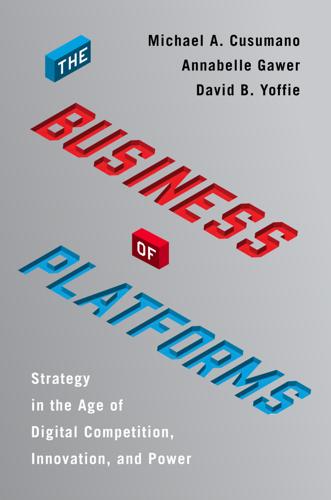
The Business of Platforms: Strategy in the Age of Digital Competition, Innovation, and Power
by
Michael A. Cusumano
,
Annabelle Gawer
and
David B. Yoffie
Published 6 May 2019
Uber has to become a low-cost Uber as well.”10 In April 2013, Uber announced it would begin offering ride-sharing services from nonprofessional drivers using their personal vehicles in cities where Sidecar and Lyft operated and began rolling out the platform under the UberX name that summer. Despite its first-mover status, Sidecar expanded much more slowly than its rivals and was eventually squeezed out of the market. In the absence of competition, Sidecar’s strategy might have worked. But the frenetic pace of growth, especially by Uber, eliminated Sidecar’s first-mover advantage. By mid-2015, Uber had expanded to 300 cities around the world and had signed up its one-millionth driver, including over 150,000 active UberX drivers in the United States, and claimed to cover 75 percent of the U.S. population.11 Lyft had expanded to 65 cities with 100,000 drivers, all in the United States, by March 2015.12 With Uber and Lyft in the market, competition for drivers and riders was fierce.
…
Applications of these technologies have led to dramatic improvements in certain forms of pattern recognition, especially for images and voice. Apple got the world excited about a voice interface when it introduced Siri in 2011. For the first time, consumers had access to a natural conversation technology that actually worked (at least some of the time). Despite its first-mover advantage, however, Apple’s strategy for Siri was classic Apple: The company designed Siri as a product that complemented the iPhone, not as an innovation or transaction platform that could generate powerful network effects. When Amazon introduced the Echo speaker device with Alexa software in late 2014, it set in motion a war for platform domination among Google, Apple, Microsoft, Alibaba, Tencent, and a host of start-ups.

Cyber War: The Next Threat to National Security and What to Do About It
by
Richard A. Clarke
and
Robert Knake
Published 15 Dec 2010
If you do not go quickly, however, you suffer two possible disadvantages: The attacking nation will probably pull up the drawbridge over the moat after its attackers charge out of the castle, by which we mean that as soon as they launch a big attack, a nation like China may disconnect from the rest of the Internet and “island” subnets; The attacking nation may be going after the Internet itself and the telephone infrastructure in the United States, which might make it harder for the U.S. to launch a cyber retaliation. Thus, there could be a real case of first mover advantage, and that leads to crisis instability, a hair trigger, no time to think. Now, remember the earlier discussion about ambiguity of intent, what one side indicates by the types of targets it goes after in the preparation-of-the-battlefield period. If a nation believes that the other side has already laced its infrastructure (including cyber and electrical networks) with destructive software packages or logic bombs, that consideration, combined with the first mover advantage, could cause a decision maker in a time of rising tensions to have a very itchy keyboard finger. 10.
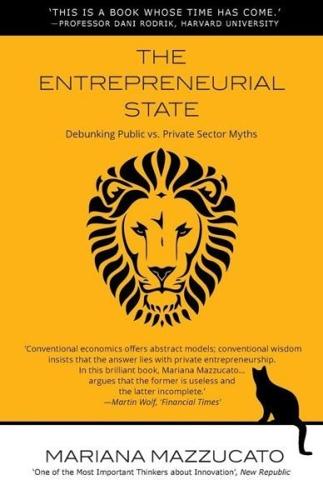
The Entrepreneurial State: Debunking Public vs. Private Sector Myths
by
Mariana Mazzucato
Published 1 Jan 2011
Rather than relying on laws of ‘diminishing returns’, which lead to a unique equilibrium, and assumptions about the ‘average’ firm, this approach focuses on dynamic increasing returns to scale (from the dynamics of learning by doing, as well as the kind of ‘path-dependent’ dynamics described by David 2004), and on different types of processes that lead to persistent differences between firms that do not disappear in the long run. The question is then: which firms survive and grow? Selection does not always lead to ‘survival of the fittest’ both due to the effect of increasing returns (allowing first-mover advantages which then ‘stick’) and also to the effects of policies which might favour certain types of firms over others. It might also be that selection dynamics in product markets and financial markets are at odds (Geroski and Mazzucato 2002b). But most importantly, in this perspective innovation is firm specific, and highly uncertain.
…
While some countries lead, others are lagging behind. As investments in innovation are cumulative and the results are ‘path dependent’ (innovation today is dependent on innovation yesterday), it is likely that the leaders emerging from this race will remain leaders for years to come. In other words, those acting first will enjoy a first-mover advantage. Figure 14. Global new investment in renewable energy (US$, billions) Source: Frankfurt School of Finance and Management (2012). Yet, failure of some governments to provide the ‘vision’ and to really ‘push’ clean technology is having an impact on the amount of investment occurring. Countries that pursue a ‘patchy’ policy towards clean technology will not stimulate enough investment to alter their ‘carbon footprints’, nor should they expect to host the clean technology leaders of the future.
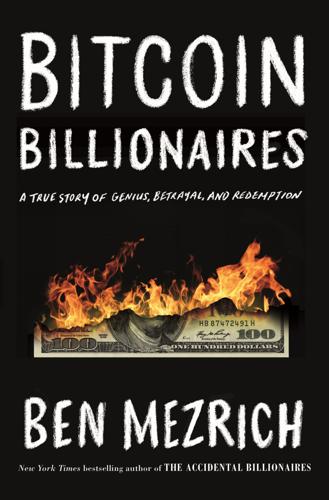
Bitcoin Billionaires: A True Story of Genius, Betrayal, and Redemption
by
Ben Mezrich
Published 20 May 2019
After being left in the lurch by Zuckerberg and surprised by the launch of Facebook on February 4, 2004, the twins and their friend Divya scrambled to find programmers to finish ConnectU, which finally went live on May 21, 2004. Not content with merely sandbagging his classmates and the enormous first-mover advantage it afforded him, Zuckerberg appeared to be determined to add insult to injury. As reported in the Business Insider, Zuckerberg recounted to D’Angelo via IM: We’ve exploited a flaw in their [the ConnectU] system and created another Cameron Winklevoss account. We copied his account like his profile and everything except I made his answers all like white supremacist.
…
The conversations were all optimistic—everyone believed that adoption of Bitcoin was a when, not an if—that Bitcoin could truly become a world currency, and that blockchain technology would soon be ubiquitous. At the same time, these engineers, technologists, and forward thinkers agreed that it was a critical time for crypto. Now that the world was watching, Bitcoin would need to hit “escape velocity” soon. Bitcoin was gold 2.0, and gold was money 1.0—but gold had a ten-thousand-year first-mover advantage. Bitcoin had superior qualities, but if adoption wasn’t accelerated, the powers that be would try to kill it. Just as there were those plotting Bitcoin’s success, like this motley crew with big ideas in a man cave on the evening before Bitcoin’s biggest public conference yet, there were those who would see it as a threat.
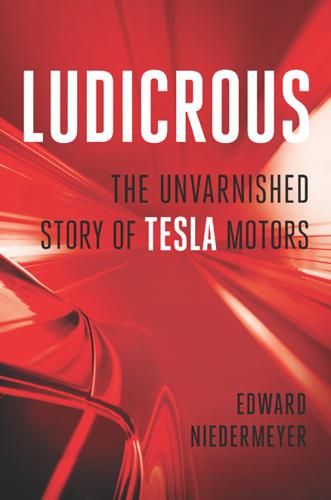
Ludicrous: The Unvarnished Story of Tesla Motors
by
Edward Niedermeyer
Published 14 Sep 2019
While Eberhard was managing the increasingly chaotic day-to-day work of pushing toward production, Musk was ratcheting up the pressure by simultaneously championing the Roadster’s “elegance creep” and demanding tighter controls on its cost and timeline. By October he was pushing Eberhard to either “sacrifice a six month first mover advantage in a market that is like the Internet circa 1992 (but slower moving) or focus every bit of energy on getting our product right.” In November, Eberhard emailed Musk to explain that there was still much more to be done. “We have a tremendous number of difficult problems to solve just to get the car into production,” he wrote.
…
Citroën would come back from bankruptcy reorganization under the ownership of its largest creditor, Michelin, and would remain a leader in unibody, front-drive vehicles for several decades. But as the market grew more competitive and other firms increasingly adopted Citroën’s key innovations, the firm’s “first mover advantage” fell apart. Today, Citroën is just one of many purveyors of front-drive unibody cars, slowly losing ground to competitors whose much later mastery of its inventions have not prevented them from eclipsing the pioneering firm. Throughout the history of the auto industry, this pattern has repeated itself again and again.

The Warhol Economy
by
Elizabeth Currid-Halkett
Published 15 Jan 2020
Scholars have found that place matters in cultural production and that these places exhibit a cumulative advantage, or rather, an initial advantage in producing a particular good often predicts future success in maintaining that advantage. Indeed, part of how this occurs is what economists call “first mover advantage”—or simply, if a particular place establishes an innovation or an advantage in a particular industry, they can often capture the whole market leading to a “lock-in,” whereby other cities and regions cannot outperform or catch up. This happened with Pittsburgh’s steel industry and Detroit’s automobile industry—and New York’s fashion industry.
…
Coe and Johns 2004 argue that there is too much emphasis on the production and not enough on the distribution and financing of cultural goods, which happens on a global but not necessarily local level. Across the board, scholars looking at the production of culture have explored how the local networks of suppliers, adjunct industries, and talented labor pools allow for a dense agglomeration that translates into producing successful place-based products with a global following. While first-mover advantage and subsequent path dependency have arguably played a role in the success of geographic leaders in particular types of cultural production (e.g., New York fashion, Hollywood films, LA’s music scene), scholars have also pointed to the critical nexus where policy and general public support have been the determining factors in cementing the competitive advantage that one region has over another (Scott 2005; Rantisi 2004)—a topic to which I will return later in discussing policy implications for the artistic and cultural economy. 3.

Magic Internet Money: A Book About Bitcoin
by
Jesse Berger
Published 14 Sep 2020
Regardless of the owner’s true identity, those holdings have remained untouched to this day. At this point it’s more likely than not that they will never be spent. Over time, those coins have become a testament to Satoshi’s humility and restraint. Had they been spent, Satoshi could have been accused of being greedy, using a privileged first-mover advantage for personal gain. Instead, by effectively sacrificing those coins, they have endowed Bitcoin with a halo effect, which conceptually hovers over the network, positively influencing perception of its integrity. As long as those coins remain untouched, they will stand as a timeless monument to the ethos of Bitcoin, conferring an aura of altruism, and adding verifiable legitimacy to its compelling claim as principled and incorruptible money.

Economists and the Powerful
by
Norbert Haring
,
Norbert H. Ring
and
Niall Douglas
Published 30 Sep 2012
Benmelech, Kandel and Veronesi (2010) have built a model that explains why it was particularly highgrowth companies in new markets which suffered from this phenomenon. A company in a new market, be it a technology company during the dotcom frenzy or an investment bank during the subprime boom, initially has many very seemingly profitable business opportunities due to having first mover advantages. At some point, the company matures and the number of highly profitable business opportunities returns to normal. Executives will normally know when that will happen before investors do. If they were to act appropriately and reduce investment, investors THE POWER OF THE CORPORATE ELITE 133 would make their inferences and managers would have to expect a strong negative response reflected in the stock prices.
…
D. 13 American Economic Association ix, 10, 17, 20, 26–7, 44 American Economic Review 8, 20, 26–7 American International Group (AIG) 70, 90–91 Anglo-Saxon economics ix Arrow, Kenneth 7, 23–4, 212; see also impossibility theorem (Arrow’s) asset bubble 104 asymmetric information: see information, asymmetric AT&T 147 authoritarianism 24, 210 average cost 148, 151 Bank of America 77, 86, 94 barriers to entry 54, 160 Basel III Accord 104–5 Bear Stearns 90, 96, 107, 111 Becker, Gary S. 186 Bemis, Edward 9–10 Bentham, Jeremy 11 Berlin, Isaiah 25 Bernays, Edward 15–17 Bill of Rights (US) 208 Bolsa Família program 41 Boskin Commission 36 Bourdieu, Pierre 25, 115, 160 Bridgestone (tire manufacturer) 163–4, 166–7 British Empire ix, 16, 100 Buchanan, James 23–4 Buffett, Warren 93, 107–9 Bullionists 2 Bureau of Labor Statistics 32–3, 35 capitalism vii–viii, ix, 2, 5–6, 10, 18–19, 21, 31, 46, 142, 153, 158, 165 central bank 43, 67, 79–88, 104–5 CEO: see chief executive officer (CEO) Chicago, University of 10, 17, 19, 26, 27, 44, 80, 84, 168, 186, 193 chief executive officer (CEO) xi, 16, 47, 61, 70, 93, 95–6, 103, 107–13, 115–27, 132, 138–9, 215, 217 Chrysler xi, 113 Citicorp (bank) 43 Citigroup (bank) xi, 61, 63, 96, 105, 112, 125 Clark, John Bates 6, 10–11, 155, 193 classical value theory 5 Cold War 2, 18, 21, 25–8, 46 collective bargaining 185 Commodity Futures Trading Commission (CTFC) 90, 92 Commons, John R. 8–10 communism xii, 2, 19, 21, 25, 139 comparative advantage 4 Condorcet, Marquis de 23 conflict 165 consumption viii, 11, 13, 32, 78, 158, 192, 203, 211 control fraud 94–5 convergence vii 242 ECONOMISTS AND THE POWERFUL cooperation 73–5, 165, 167, 170, 198 cooperative 102 Cornell University 10 corporate elite x, xii, 115, 117, 140 corporate governance 92, 119, 127, 135, 136 corporate government 135 corporate management 109 corporation tax 139 corruption 220 credit x, xi, 29, 48–50, 59–60, 62, 65, 71, 73, 75, 77–84, 90–91, 95–8, 100, 104, 110, 149, 183 credit default swap 91, 93 CTFC: see Commodity Futures Trading Commission (CTFC) Darwinism 167 Debreu, Gerard 7 demand curve 146 democracy 18, 207, 211–13, 220 depreciation 33, 147 derivatives 67, 90–93, 96–7 Deutsche Bank 105, 121 disability adjusted life expectancy vii discrimination 130, 186–7 earnings management 129–30 economic growth xi, 80 economic policy xi, 46, 66, 76, 152 economic utility 4–5, 13 economics, mainstream viii, x–xi, xiii, 1, 29, 47, 136, 145, 164, 170, 208, 211, 214 economics, neoclassical ix, xii, 6, 8, 10–11, 13, 21–2, 25, 30, 38, 42, 45, 141, 143–4, 153–5, 157–60, 163–4, 168, 170–71, 173, 180–82, 188, 191–2, 210, 213 economies of scale 3, 54, 152, 161 economies of scope 54 Edgeworth, Francis Y. 10 efficiency vii, x, xi, xii, 13, 19, 25, 39, 43, 48, 62, 73, 101, 108, 136–7, 143, 144, 146–7, 149, 156, 160, 170, 176, 179, 183, 190, 193, 197, 202–4, 216, 219 efficient markets x Ely, Richard T. 9–10 employment protection 188, 200–203, 205 Enron 52, 92, 98, 110, 128, 132, 217 entrenchment 126, 135 equality of opportunity vii–ix, xii, 37, 39–41, 45, 53, 114, 124, 172 equality of outcome vii equilibrium x, 6–7, 37, 47, 146, 159, 161, 181–2, 197, 208 euro ix, 67, 82, 102 European Central Bank 103, 189, 215 European Commission/Union 67, 152 executive compensation 120–21, 138 exploitation 6, 156, 209, 212 exports 2, 34, 180–81 fairness ix, 13, 37, 39–40, 160, 164–6, 169–70, 177, 220 Fannie Mae (US government subsidizer of mortgages) 217 fear, uncertainty, doubt (FUD) 145 Federal Reserve (US) 43–4, 69–70, 85, 87–92, 143, 215 feedback loop 40, 216, 220 fiat money 75, 81 filibuster (US antilegislative maneuver) 218 financial industry xi, 44, 46–8, 51, 54–6, 64, 70, 89, 91–2, 121, 129, 217 financial markets xi, 47, 92, 108, 110, 128 financial rating agencies: see rating agencies financial sector xi, 43–4, 47–8, 53–4, 60, 64, 69, 79, 81, 83, 88–9, 100–101, 103, 105 Financial Stability Board 103 First (Workingmen’s) International 5 first mover advantage 132 Fisher, Irving 10, 13, 60, 75, 81, 83–4, 214 Fitch (ratings agency) 97 fixed costs 143 INDEX Fortune (magazine) 128 Fortune 500 (index) 49, 139 forwards (financial instrument) 67 founding fathers (of the United States) 207, 218 Freddie Mac (US government subsidizer of mortgages) 217 free market 6–7, 24, 46, 84, 147, 188, 193, 209 free riding 24, 37, 164 free trade 3–4, 16, 46, 209 freedom viii, 10, 18, 21, 25, 80, 94, 188, 191, 218 Freud, Sigmund 15 Friedman, Milton 44, 57, 81 front running (trading strategy) 65–6 FUD: see fear, uncertainty, doubt (FUD) fund managers 56–8, 63–4, 68, 134 futures (financial instrument) 67 Galbraith, John Kenneth 11, 74 GDP: see gross domestic product (GDP) General Motors xi, 16, 184–5 global financial crisis ix, 90; see also Great Financial Crisis God 24 gold 2, 72–7, 79–80, 86–7, 89 golden parachutes 112 Goldman Sachs 47, 49, 54, 56, 63, 66, 69, 88, 93, 105, 121, 215 goodwill 131 Great Depression 11, 70, 80, 138–9, 181, 204 Great Financial Crisis 79, 100, 111, 136; see also global financial crisis gross domestic product (GDP) vii–ix, xi, 28–31, 143 growth 27–8, 31, 33, 35, 39, 71, 90, 102, 108, 128, 132, 135, 151, 195, 203–4 Hadley, Arthur 10 happiness 202 Harvard Business Review 17–18 Harvard University 17–18, 26, 109, 208 243 hedge fund 29, 43, 46, 53, 58, 64–8, 92, 96, 101, 107 hedonic method 33–6 Hicks, John 13–14, 21 Homo economicus 164–6, 173 hostile takeovers 126 human capital 128 imports 2, 12, 34, 35 impossibility theorem (Arrow’s) 23–4, 212–13 incentives 39–40, 42–5, 52, 91, 93, 109, 114–15, 129, 132, 140, 172–4, 177, 182, 214 income guarantee 41 incompleteness viii, 12, 49, 145, 169, 184 incumbency 121, 134, 149 index tracking fund 55, 58 indifference 141, 168 industrial goods 2–3, 142 industrial production 2, 179 Industrial Revolution 5, 143, 181 inequality vii, 40, 138, 140 inflation 32–3, 36, 50, 78, 81, 104, 109, 120 information advantage 48, 131 information, asymmetric x, 191 information costs 144 information goods 143 information, imperfect x, xii, 142, 145, 149, 220 information technology 34, 218 innovation 34, 43, 147, 150–52, 160, 208 insider information 53–4, 62–3, 131 insider knowledge 131 insider trading 63–4, 131 institutionalism 8, 21 insurance xi, 39, 69, 82, 89–91,152, 189, 198, 204, 210 interest rate, real 50, 159 International Monetary Fund 27, 31, 48, 69, 74 International Workingmen’s Association 5 244 ECONOMISTS AND THE POWERFUL investment 32–3, 37, 41, 51, 56–7, 68, 78, 96–100, 103–4, 128–30, 133, 135, 140, 157, 184, 217 advice 51, 54, 56, 129 banking 29, 43, 47, 51, 52, 54, 55, 60–62, 64, 70–71, 89–90, 93, 94, 96, 97, 101, 107, 111–12, 125, 132 personal viii irrationality vii, 1, 13, 16, 38, 40, 151, 205, 211–12 Ivy League 27 Jevons, William Stanley 5, 16 job security viii, 108, 199–200, 202–4 J.P.

The Truth Machine: The Blockchain and the Future of Everything
by
Paul Vigna
and
Michael J. Casey
Published 27 Feb 2018
But, inevitably, the added transaction costs translated into barriers to entry that helped the largest incumbents ward off competitors, limiting innovation and denying billions of financially excluded people the opportunity to fully exploit the Internet’s many possibilities for advancement. It’s how we’ve ended up with Internet monopolies. Those with first-mover advantages have not only enjoyed the benefits of network effects; they’ve been indirectly protected by the hefty transaction costs that competitors face in trying to grow to the same scale. In a very tangible way, then, the high cost of trust management has fed the economic conditions that allow the likes of Amazon, Netflix, Google, and Facebook to keep squashing competitors.
…
Such is the threat and opportunity that open-source development offers: anyone can copy and then improve upon your idea. The good news is that boundless energy and innovation will go into figuring out how to iterate upon the ideas that currently exist and will build a potentially better system. That innovation might find its way back into Bitcoin, helping to cement its first-mover advantage. Or it might diffuse the value creation power across a wider array of platforms until something more popular comes along. In the next chapter we will ask such questions as we survey the frenetic pace of invention in the blockchain space. Three THE PLUMBING AND THE POLITICS Building a decentralized economic system for a network of independent, anonymous computer owners in which everyone will work in the interests of the group poses a daunting technical challenge.

Roads and Bridges
by
Nadia Eghbal
As much as I know security is incredibly important, I view these interactions with an increasing sense of dread because they generate work for me and the returns are low.[121] Services On a larger scale, one of the best-known and oft-cited examples of an open source business model is Red Hat, the aforementioned enterprise company, which offers support, training and other services to enterprises that use Linux. Red Hat was founded in 1993 and is a publicly traded company with reported revenues of $2B per year. Although Red Hat has been wildly successful from a financial standpoint, many are quick to point out that it is an anomaly unlikely to be repeated again. Red Hat benefited from first mover advantage for the technology it supports. Matt Asay, a journalist who focuses on open source, noted that Red Hat uses a unique set of patents and licensing to protect its enterprise market. Asay, once a major proponent of open source businesses, now believes that some proprietary licensing is necessary to build a serious business. [122] Matthew Aslet of the 451 Group, a research group, similarly found that most successful “open source” enterprises actually use some form of commercial licensing. [123] Docker, the previously mentioned open source project that helps applications run efficiently, is a more recent example of a company attempting this model.
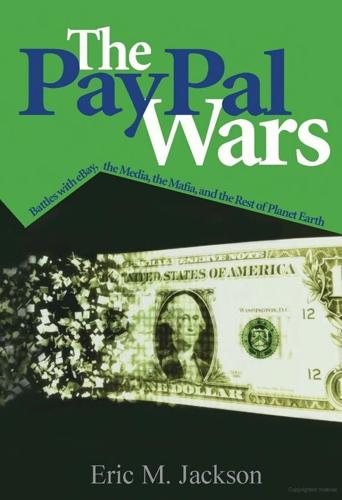
The Paypal Wars: Battles With Ebay, the Media, the Mafia, and the Rest of Planet Earth
by
Eric M. Jackson
Published 15 Jan 2004
Several factors contributed to Billpoint’s inability to gain significant ground in spite of our infrastructure woes. The lack of any fees in addition to our $5 referral bonuses gave sellers a strong financial motivation to choose PayPal despite Billpoint’s free Visa offer. PayPal also had a first-mover advantage in its favor, meaning that many of the more sophisticated sellers looking to use one of the new online payments services had already discovered PayPal before Billpoint launched. And, finally, it stood to reason that we were beginning to see the creation of a nascent network since both buyers and sellers who signed up for PayPal during one transaction insisted on continuing to use it for future payments.
…
When Whitman assumed control, she implemented a practice of hiring MBAs and former consultants and the company began to change.15 Written accounts of its early days, corroborated by conversations I had with many of my eBay counterparts, lent credence to this hypothesis. Whether or not it’s correct, Omidyar’s brilliant online service—the beneficiary of first-mover advantage—snowballed and continued to pick up speed, oblivious to any bureaucratic transformation being implemented by the company’s management. Enjoying a monopolist’s clout meant that eBay no longer had to rely on innovation to generate growth—foreign acquisitions expanded the company’s worldwide reach while the domestic part of the business was placed on autopilot.

Rise of the Robots: Technology and the Threat of a Jobless Future
by
Martin Ford
Published 4 May 2015
Behind the scenes, however, there can be little doubt that interest in AI of all types within the military, security agencies, and major corporations will only grow. One of the obvious implications of a potential intelligence explosion is that there would be an overwhelming first-mover advantage. In other words, whoever gets there first will be effectively uncatchable. This is one of the primary reasons to fear the prospect of a coming AI arms race. The magnitude of that first-mover advantage also makes it very likely that any emergent AI would quickly be pushed toward self-improvement—if not by the system itself, then by its human creators. In this sense, the intelligence explosion might well be a self-fulfilling prophesy.
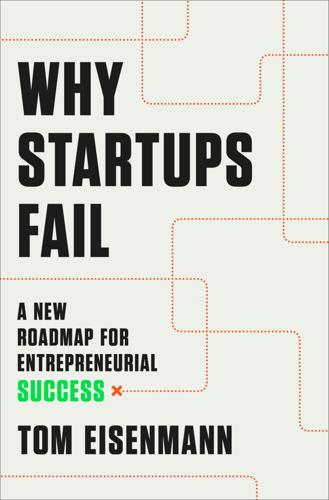
Why Startups Fail: A New Roadmap for Entrepreneurial Success
by
Tom Eisenmann
Published 29 Mar 2021
Everyone can afford to bid aggressively, because once a first-time customer is on board—locked in by high switching costs—the winning bidder can charge them a hefty price. For this reason, first-mover advantages can be especially strong in new markets where customers face high switching costs. The first mover in a new product category has a chance to acquire first-time buyers before any rivals enter the market. But this advantage disappears once the second entrant arrives; then, the race is on. Since Jibo was the pioneer in the social robotics category—a category with high switching costs—had Jibo survived, it would have enjoyed first-mover advantages, at least for a while. Scale Economies. Scale economies reduce a startup’s unit costs as its transaction volumes increase.
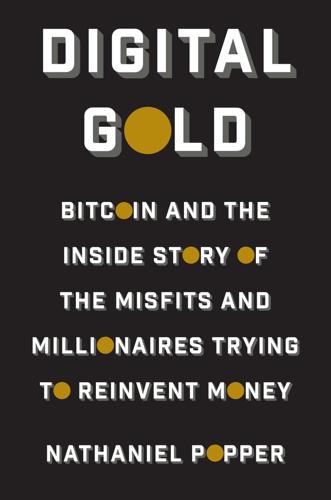
Digital Gold: Bitcoin and the Inside Story of the Misfits and Millionaires Trying to Reinvent Money
by
Nathaniel Popper
Published 18 May 2015
When Coinbase’s $5 million investment was announced, Cameron warned Charlie that Coinbase could steal BitInstant’s thunder. “Just deliver the deliverables and stop fucking around,” Cameron told him. Charlie meekly submitted. “OK, I will push the team and myself harder.” IN TOKYO, MARK Karpeles was also learning that Mt. Gox’s first-mover advantage was not impregnable. On May 2, Mark was sued in a Seattle court by CoinLab, the company run by Peter Vessenes that had been scheduled to assume responsibility for Mt. Gox’s business in the United States earlier in the year. CoinLab accused Mt. Gox of breaching its contract by not handing over the customers.
…
This was unlikely to sit well with the Occupy Wall Street crowd, who objected to the undue power of the wealthiest 1 percent of the population. The Bitcoiners had their ready responses to all these critiques and voiced them loudly. Bitcoin’s volatility would go away as it matured, the believers said, and Bitcoin had a first mover advantage against other cryptocurrencies that was showing no signs of abating. Meanwhile, inflation might not be a problem in the United States yet, but it was a problem in other countries. Whatever the merits of the criticisms, they did not seem to be dulling the growing curiosity about Bitcoin within major financial institutions.

Super Thinking: The Big Book of Mental Models
by
Gabriel Weinberg
and
Lauren McCann
Published 17 Jun 2019
Your “product” is therefore how you specifically are using your secret to cause a behavioral change in your customers, e.g., creating a marketplace of rentable rooms over the internet. Even if you are the first to market with the idea, you will still lose out to the competition if your product cannot create the necessary behavioral change. The first person or organization to try to capitalize on a secret can indeed have a first-mover advantage, crafting a competitive advantage derived from being the first to move into a market with a product. However, they can also experience a first-mover disadvantage if they make a lot of mistakes. Fast-followers can copy the first mover, learn from their mistakes, and then quickly surpass them, leaving the first mover ultimately disadvantaged even though they were first.
…
Anders, 260, 261 error bars, 155, 156 escalation of commitment, 91 escape hatch, 244 Ethernet, 118 Etsy, 119 European Union, 59 evolution, 99–100, 133 execution, 292 exercise, 85, 87, 88, 102, 111, 113, 130 exit: barriers to, 305 strategy for, 242–43 expectations, 267–68 experimenter bias (observer-expectancy bias), 136, 139 experiments, 135–36, 161–63, 173 A/B testing, 136 alpha in, 161, 182 beta in, 162, 182 blinded, 136 endpoints in, 137 power of, 162 randomized controlled, 136 replication of, 168–72 sample size in, 143, 160, 162, 163, 165–68, 172, 182 thought, 199–201 see also polls and surveys; research expected value, 186–89 expertise, 109, 115, 269 deliberate practice and, 260–62, 264, 266 externalities, 41–42, 47 negative, 41–43, 47 extroverts, 249–50 Facebook, 18, 36, 94, 119, 219, 233, 247, 305, 308 failure, 296 cascading, 120, 192 focus on, 268–69 government, 47, 48 market, 47–49 political, 47 fairness, 224 fair share versus fair play, 224–25 fake news, 233 fallacies: base rate, 157, 158, 170 black-and-white, 126–28, 168, 272 conjunction, 9–10 gambler’s, 144, 145 inverse, 156–57 Texas sharpshooter, 136 false negative, 160–63, 165–67 false positive, 160–62, 164–66, 168–70, 172 false sense of security, 44 false urgency, 74 fast (low-concentration) thinking, 30, 70–71 fat-tailed distributions, 191 favors, 215 fax machine, 106, 107, 119 FBI, 97 fear, uncertainty, and doubt (FUD), 225 fear of missing out (FOMO), 219 feedback, 262–64, 266, 294, 316 feedback loops, 192, 294 Ferriss, Tim, 220 Feynman, Richard, 32–33, 315–16 filter bubble, 17–18 financial advisers, 44, 45 financial crisis of 2007/2008, 79, 120, 192, 271, 288 fines and sanctions, 232 First, do no harm, 59 first impressions, 14, 146 first-mover advantage or disadvantage, 292 first principles, arguing from, 4–7, 31, 207 FiveThirtyEight, 172 5 Whys, 32, 33 fixed mindset, 266–67, 272 flow, 192 flu vaccine, 133–35 flypaper theory, 234 flywheel, 108–10, 112, 283 Food and Drug Administration, U.S., 283 football, 226, 243 foot-in-the-door technique, 216 Forbes, 220 forcing function, 113, 244 forecasts, see predictions and forecasts Fortune 100 companies, 122 Foundation, 5 401(k) programs, 87–88 foxes versus hedgehogs, 254–55 frame of reference, 11, 18, 90, 250 framing, 11–13, 30, 221, 222, 224, 226 Franklin, Benjamin, 92 fraud, 228 Freakonomics (Levitt and Dubner), 44–45 free rider problem, 39–40, 43, 49 frequentist statistics, 158–60 Frisch, Otto, 114–15, 120 frog, boiling, 55, 56, 58, 60 FUD (fear, uncertainty, and doubt), 225 fundamental attribution error, 20–21, 23 future, 289 discounting of, 85–87 predicting, see predictions and forecasts uncertainty in, 2, 132, 173, 180, 182, 185 Gallup, Inc., 16 Galton, Francis, 203 gambler’s fallacy, 144, 145 games, iterated, 214 game theory, 212–14, 230, 234, 238, 244 prisoner’s dilemma, 212–14, 226, 234–35, 244 garbage, 40–41 garbage in, garbage out, 185 Gates, Bill, 69, 128, 141 gateway drug theory, 236 Gelman, Andrew, 173 generalists, 252–53 generals always fight the last war, 240 genes, 156–57, 191, 249–50 George III, King, 221 Germany, 70, 145, 229, 237–39 germ theory, 26, 289 get on the same page, 225 get them up to speed, 279 getting more bang for your buck, 79 Getting Things Done (Allen), 76 Gibson, William, 289 Gilbert, Daniel, 27 Ginóbili, Manu, 247 give-and-take, 128 Gladwell, Malcolm, 261 GlaxoSmithKline, 63, 81, 257 globalization, 310 global optimum, 195–96 goals, 69, 87–89, 122, 242, 244 Gödel, Escher, Bach (Hofstadter), 89 Goldblum, Jeff, 121 golem effect, 267 Gondwanian bridges, 25 good cop, bad cop, 232 good enough, 90 Goodhart, Charles, 49 Goodhart’s law, 49, 51, 52, 54 Good Judgment Project, 206 Good to Great (Collins), 109, 254 Google, 18, 53, 104, 231, 305 Gordon, Peter, x Gosplan, 49 government, federal: budget of, 75–76 failure in, 47, 48 regulatory action by, 183–84, 231–32 graffiti, 40 Graham, Paul, 71, 277 grass-is-greener mentality, 176–77, 258 graphs, 146–48 bell curves in, 150–52, 153, 163–66, 191 error bars in, 155, 156 histograms, 147–48, 150 gravity, center of, 112 gray thinking, 28 group membership, 127 groupthink, 201–3 Grove, Andy, 308 growth mindset, 266–67 Guardian, x guerrilla marketing, 240 guerrilla warfare, 239, 241–42 gun control, 235, 237 Gurley, Bill, 286 gut feeling, 30 hackers, 97 Hail Mary pass, 243–44 hammer, Maslow’s, xi, 177, 255, 297, 317 Hanlon’s razor, 20 harassment, 53 Harvard Business Review, 297 Hatchimals, 281, 284 hazard, 43–45, 47 head in the sand, 55 Health and Human Services, U.S.
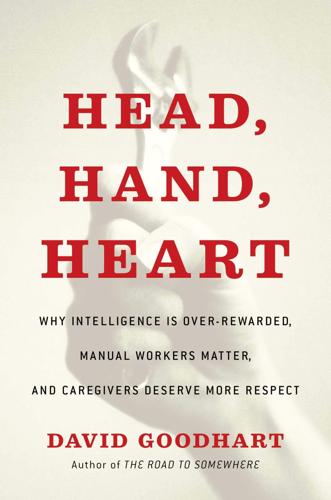
Head, Hand, Heart: Why Intelligence Is Over-Rewarded, Manual Workers Matter, and Caregivers Deserve More Respect
by
David Goodhart
Published 7 Sep 2020
In some fields such as law, medicine, technology, and some corners of business, “winner-takes-all” markets have provided exceptional rewards to exceptional people—people like Mark Zuckerberg, Jeff Bezos, Elon Musk—who have both high cognitive skills and practical knowledge of something that gives them a big first-mover advantage in new digital markets. Below them is a wider group of highly educated—and highly credentialized—people from top universities who have the intelligence and personality attributes to propel them into the top layer of jobs. Another level down is what one might call the rank and file of the cognitive class, the mass elite.
…
Market forces are starting to adjust some of the inflated returns to Head of recent decades as the graduate premium shrinks and the shortage of both skilled and unskilled manual workers pushes up Hand wages, at least in some sectors. At the very top there remains an inequality issue thanks to the “war for talent,” the gaming of executive pay incentive systems, winner-takes-all markets, and the way that first-mover advantage, especially in digital markets, can confer enormous rewards on people without having to go through the sweat of decades building a business. Many commentators believe that the default setting for modern liberal societies is ever higher levels of inequality and the emergence of a class of the meritocratic superrich, who may even, with the help of the latest science, evolve into some new strand of humanity.
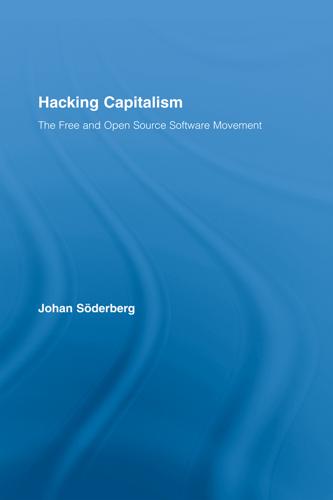
Hacking Capitalism
by
Söderberg, Johan; Söderberg, Johan;
They sat down to create a Qt clone under the project name ‘Harmony’. The technological inferiority of GNOME at the outset did not prove an infeasible hindrance to the success of the non-proprietary fork. Strong community norms abiding to the ideals of free software proved sufficient to compensate for Troll Tech’s first-mover advantage. Eventually, as GNOME and Harmony gathered steam, Troll Tech was forced to renounce its hold over Qt. As will be argued extensively in later chapters, this suggests a high threshold within labouring communities against the crystallisation of private property relations. The second important observation to make is the strategic decision by Red Hat.
…
Or, to put it differently, the exchange value of a commodity increases if the commodity form is abolished. For sure, this paradox is not a short-cut for the self-destruction of market relations and private property. The network externality touched upon by Oz Shy and Stan Liebowitz translates into a greater first-mover advantage and a vicious cycle of ‘winner-takes-all’, fuelling the tendency towards monopolies yet further. Nonetheless, the economy of networks causes a restriction upon capital. When the option of selling directly to clients is ruled out, two opportunities remain: Either advertising or tax subsidies.
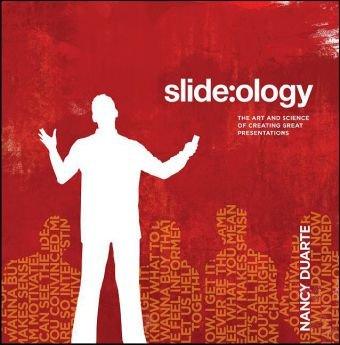
Slide:ology: the art and science of creating great presentations
by
Nancy Duarte
Published 15 Nov 2008
Just because your slides look great does not mean they convey useful meaning. Interacting with Slides 233 How Many Slides? Use the 10/20/30 Rule. As a venture capitalist, Guy Kawasaki has to listen to hundreds of entrepreneurs pitch their companies. Most of the pitches are crap: sixty slides about a “patent pending,” “first mover advantage,” and “all we have to do is get one percent of the people in China to buy our product.” So he came up with the 10/20/30 rule for PowerPoint. It’s quite simple: a PowerPoint presentation should have 10 slides, last no more than 20 minutes, and contain no font smaller than 30 points. He believes that this rule applies to presentations when the audience needs to reach consensus.
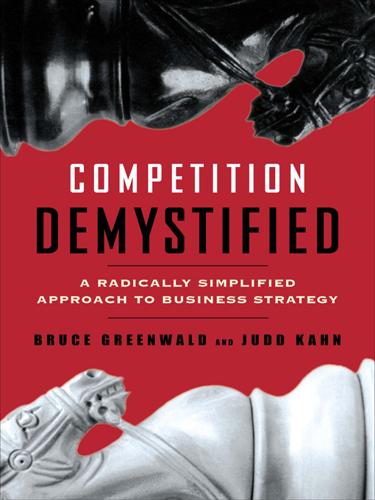
Competition Demystified
by
Bruce C. Greenwald
Published 31 Aug 2016
The handwriting recognition software was not up to the task and became the butt of comic strip jokes. Palm put the PDA business on its feet with its easy-to-use machines in the late 1990s, and when Microsoft produced a scaled-down version of Windows that could be crammed into handhelds, a number of manufacturers came to market with pocket PCs. Neither first-mover advantage nor ease of integration with a Macintosh had been able to lift the Newton. Apple has been more successful with its portable digital music player, the iPod, praised for its ease of use and elegant design. Apple introduced the iPod in October 2001. Over 1 million units were sold within the first two years, and Apple continued to improve the product, making it more compact and increasing its capacity to hold music.
…
On the other hand, vintage effects—the fact that plants built later are more efficient than earlier ones—count against the first mover. In a large, rapidly growing market like CDs, cumulative volume growth and learning are rapid for both first movers and later entrants. A law of diminishing returns to learning shrinks any first-mover advantage, so that the adverse vintage effects come to predominate. At that point, it was certain that the successful compact disc business would attract competitors. Philips’s profitability suffered. It might actually have been better off if CDs had been restricted to a niche market in which it would have had the field to itself for perhaps five to seven years.

Gambling Man
by
Lionel Barber
Published 3 Oct 2024
‘To Son, crazy is a slightly warped outlook that sparks innovation. Of course, there’s the other kind of crazy – as in Napoleon assuming the Russian winter wouldn’t be so cold. Give Son’s dealmaking record a scan, and he starts to look more like he’s marching into Moscow in mid-September.’17 Masa, however, was betting on first-mover advantage. ‘In this industry, the first mover, the pioneer, very often gets a big success,’ he said, rattling off his list of American favourites, AOL, Cisco, Dell, Intel and Microsoft, ‘These companies did not necessarily have big capital to begin with, but they had the vision and the passion.’ By the end of March 2002, SoftBank’s interest-bearing debt had fallen over the previous two quarters from $4bn to just below $3bn, but net income had dropped from $292m (March 2001) to a $669m loss (March 2002).
…
(SIMI), 236–7; SoftBank Investment (SBI), 166–7 software technology: CD-ROMs, 86; distribution business, 3–4, 51–6, 61, 65–7, 73–4, 334; evolution of, 51; Gates’ alliance with Japanese companies, 65, 66–7; Gates and Nishi standardization plan, 65, 66–7; Improbable (British company), 286*; and Kotick, 72, 73; ‘localization’ of in Japan, 74; Masa’s speech translator venture, 37, 39–45, 48, 114, 171*; Microsoft’s BASIC programming language, 66; mouse innovation, 73; MSX system, 66–7; services business, 89–90; Starcom Networks in China, 145; and telemarketing business, 86–7; turbocharges PC revolution, 49; US as centre of innovation from mid-1980s, 74–7; Windows system, 76 solar power, 218, 219–21 Son, Masa’aki (brother of Masa), 51, 67, 82, 85 Son, Masami (née Ono, wife of Masa), 31, 32–3, 36, 38, 39, 49–50, 62; changes family name to Son, 79; wedding day (September 1978), 41–2 Son, Masanori (brother of Masa), 82 Son, Masayoshi (Masa): ‘10-day war’ with Nishi, 66–7; ‘30-Year Vision’ (2010), 202, 203–4, 208–12; 72 as lucky number, 93; ability to charm elders of big business, 35, 41, 53–4, 64, 71, 90; Asahi–Obunsha deal, 115–16, 117–18; baby daughter born, 50; barefoot habits, 56; battle with NTT, 156–7, 158–9, 160–63, 168, 187, 188, 189, 191, 192–3; bets on Nasdaq derivatives (2020), 311, 312–13; and Big Man theory of history, 321; birth of (8 August 1957), 16–17; born with two names, 16–17, 18, 28–9, 78–9, 82; borrows from domestic bond market, 98–9, 100, 107, 158, 166; and bursting of dot.com bubble, 148–51, 156, 284; business persona, 87, 88–9, 91–2, 99–100; buys house in Kansas, 228–9, 324; capacity for compassion, 211–12, 214, 221; chance encounter with Hong Lu, 38–9; chance encounter with Sasaki (1977), 34, 35, 36; childhood of, 17–21, 23–4, 185–6, 211; chronic hepatitis diagnosis, 57, 61–2, 63, 67–9, 201; and Cisco Japan, 89–90, 103, 162; and computer technology at Berkeley, 36–8; con artists attracted to, 81; and culture of Silicon Valley, 101–2; Deadwood venture with Kevin Costner, 129–30; deal with Joshin Denki, 53–4, 55; demands Japanese naturalization as child, 23–4; Digitalker debacle, 44–5, 171*; disappears from public view (November 2022), 326, 327, 330; disdain for ‘salaryman culture’, 124; as disruptor/insurgent in dot-com bubble Japan, 137–8; as dokegata (clown or trickster), 161; and Dolotta, 74–8, 91, 103; as drawn to historical analogies, 2–3, 68, 134, 162–3, 202*, 207–8, 297, 303, 333; early money-making ventures in USA, 33, 36–7, 39–47, 171*; education in California, 30–34, 35, 36–9, 40–47; electronic speech translator venture, 37, 39–45, 48, 114, 171*; enters set-top business, 119; ‘epiphany’ (fall of 1976), 33, 331; and ethical boundaries, 5, 279; experiences of discrimination, 18, 23, 24, 28; family background of, 6, 9–12, 13–14, 15–17; family showdown over Mitsunori’s debts, 85–6; family’s wealth in his childhood years, 23, 84; father’s encouragement during childhood of, 19–20, 185–6; on first mover advantage, 166; first visit to China (1995), 144–5; first visit to USA (1973), 27–8; Den Fujita’s influence on, 24–6, 33; and Fukushima nuclear disaster, 213–22, 223, 298; funding of Japanese scholars overseas, 102*; and Bill Gates, 66, 72, 73, 77, 266–7; Gates on, 66; giant private complex in Chiba, 324; and Lex Greensill, 293–4, 319–20; growth potential as article of faith for, 51, 54, 108, 111, 131, 132, 134, 143, 173, 176, 253–4, 334; happiness through technology vision, 146–7, 209–10, 237; holding in NCB, 138–9, 158; impact of global financial crisis (2008), 194–7, 201; importing of US ideas into Japan, 83–4, 107, 124–6; and increased regulatory power, 323–4; insatiable ego/vanity of, 173, 214, 221, 272, 275, 278, 282–3, 295; insists on studying in USA, 28–30; investments during dot-com bubble, 133–6, 138–41, 143–4, 148, 284, 328; invests in UTStarcom in China, 145–6, 158; joint venture with Nasdaq (1999), 2, 138, 148; Korean identity, 6, 18, 23–4, 28–31, 32, 35, 42–3, 44, 49–50, 78–9, 211–12, 334; and Kotick, 72, 73; Dr Kumada treats, 68–9; lack of social graces/people skills, 35, 56, 147, 217, 224–5, 274; and leverage, 98, 127–8, 185, 191, 196, 240, 274, 300; limitless attitude to risk, 5, 54–5, 57, 133–4, 140–41, 159–61, 210–11, 273, 309–13, 331; love of the dramatic gesture, 87, 99, 100, 104, 119; Lu on, 146; luxury home in central Tokyo, 204–7; and “Man’s pride” (trust), 170–71, 195–6; mansion in Roppongi, 117, 204; marketing business (Unison World), 50–51; meeting with Buffett (25 June 2017), 273–4; meeting with Mohammed bin Salman (September 2016), 264–5; meetings in Downing Street (July 2016), 251–2; meetings with Trump, 267–9, 270, 294; meets Masami at Holy Names College, 31, 36; as minor celebrity in China, 142–3; moves to Tokyo (early-1980s), 52; and Rupert Murdoch, 114–16, 117–19, 120, 121; napkin trick, 87, 88, 234, 270, 325; naturalizes himself as Japanese citizen, 78–9; NCC Box developed by, 69; new chip-making venture, 329–30, 334–5; Omori on, 71; Omori removed by, 70–71; ‘P-30’ portfolio of top tech companies, 307; persistence/single minded focus, 37, 39, 41, 45, 46; personal borrowing/spending, 86, 93, 130, 181–2, 194–6, 204–8, 299, 324–5; personal myth of, 6, 51–2, 114, 205–6; personal security/privacy, 206, 246, 263, 324; press attacks on over dot.com bubble, 149–50; private companies owned by, 86, 93, 122, 125, 127, 128, 130, 131; Project Fortitude with Neumann, 277–8, 279–80; promotes solar power, 218, 219–21; public equities trading strategy (SB Northstar), 303, 307–14, 315–16, 320, 325, 329; and regulators in USA, 226–7, 229–31, 232, 240, 275–6; reinvention after dot-com crash, 4–5, 156, 201; relationship with Jobs, 189–91, 192–3, 223; reputation as reliable middle man, 83; return visits to Berkeley, 55–6; returns to Japan (March 1980), 47, 48; reveals Korean identity to school friends, 32; as richest man on the planet (February 2000), 3–4; second marriage ceremony in Kyushu (1980), 49; secrecy over travel arrangements, 76–7, 263; secret mansion in central Tokyo, 6, 204–7, 238–9, 315; self-belief, 20, 35, 40–41, 135, 146, 201, 272; sense of obligation to parents/grandparents, 18, 85; SoftBank launch tale, 51–2, 78; and SoftBank whistleblowers, 122–4, 126–7, 131; struggles with geopolitics, 314, 320–22, 324; sues Japanese government over mobile licence (2004), 178–9; as susceptible to fellow dreamers, 272–3, 276–8; talks with Elon Musk, 274–5; and Tamagawa development project, 81–2, 86; taste for financial engineering, 98, 123, 312–14; and tax avoidance, 62–3, 308; as a techno-optimist, 4, 133, 156, 208–12, 331–3; tin-roofed office in Fukuoka, 50–51; trip to Japan with Mozer (1979), 43–4; trip to South Korea with Lee, 29, 211; understanding of ‘black box’ in Japan, 73–4; use of opaque corporate structures, 123, 125–6, 127–9, 130, 295, 296; Velfarre disco event (February 2000), 1–3; video games venture (Unison World), 46–7, 50, 62–3; visits Sasaki in Nara (1978), 40; wedding day (September 1978), 41–2; wish to step down as SoftBank CEO (March 2011), 218–19; Woodside property in Silicon Valley, 233, 245, 286, 324; at World Economic Forum (Davos), 2, 147, 148, 167, 294 see also SoftBank; Vision Fund Son, Mitsunori (father of Masa), 9–10, 11, 12, 67; birth of son Masa, 16–17; brief return to Korea (1946-7), 13–14; character of, 19; encouragement of Masa as a child, 19–20, 185–6; entrepreneurship of, 18–19, 20, 21–4, 54–5; family showdown over debts of, 85–6; hawks illegal liquor, 15–16; ill health, 30, 38, 327; large wooden home outside Tosu (‘The Palace’), 19–20, 22*, 44, 81, 85–6; Lions business, 22–3; loan sharking business, 21, 23; Masa visits with Mozer (June 1979), 44; opposes Japanese naturalization, 23–4; and pachinko industry, 21–4, 54–5, 85; personal indebtedness levels, 22–3, 81–2, 84–6; and pigs, 16–17, 18–19, 185–6; and Son’s chronic hepatitis, 68; squanders money on real estate, 81–2, 84–6; supports Masa in California, 38; Tamagawa venture, 81–2, 86; visits Nara with Masa (1978), 40; visits to California, 39 Son, Taizo (brother of Masa), 106, 202–3 Son, Tamako (mother of Masa), 16–17, 19, 28, 30–31, 44 Son Jong-gyeong (grandfather of Masa), 9, 10–11, 23; brief return to Korea (1946-7), 13–14; character of, 10, 11, 14, 15, 16 Sony, 43, 101, 118–20, 237; Walkman, 48 Sord (electronics company), 66 South Korea, 29, 178, 211 Soviet Union, 17 Space Invaders, 45–6 Sprint, 172, 243, 263, 274, 296, 299–300; Claure at, 228–31, 287, 323–4; Masa buys, 224–7, 228–31, 232, 242, 275; Masa’s T-Mobile merger plan, 225–7, 232, 235, 240, 267, 268; merger with T-Mobile (2020), 298, 317–18, 323–4, 334; sale of, 319 Stanford University, 27, 70, 103 Star TV, 112, 114–16, 118–21 Starcom Networks, 145 Stephenson, Randall, 192 Stripe, 103 Sullivan & Cromwell, 305–6 Sun, David, 108–9, 110–11 Sun Microsystems, 77 Sun Tzu, 169 Sundaram, Ram, 229 Svanberg, Carl-Henric, 188 Symbotic, 328 Taisei Corporation, 205 Taito, 45–6, 46* Taiwan, 17, 38–9, 119 Tamagawa, 81–2, 86 Taobao, 174, 176–7; launch of (May 2003), 169–71 Taoist thought, 146 Tata Group, 181 telecoms, 113, 119; ADSL (asymmetric digital subscriber line), 159, 172, 205; Airtel, 223–4; and ARM Holdings, 242, 244–55, 308; broadband, 145, 156–63, 164–7, 171–4, 178, 265–6; broadband revolution in Japan, 156–63, 164–7, 171–4, 178; in China, 145–6; and Cisco Systems, 89–90, 162; Claure’s handset resale concept, 227–8; deregulation in Japan, 69, 156, 179, 191; digital TV revolution, 113–16, 117–19, 120–21; Ethernet services to business, 174; fibre optic broadband networks, 159; foreign investors in Japan, 172–4; high-speed 5G technology, 231; internet telephone calls, 165; IP-VPN leased-line networks, 174; Japanese infrastructure, 158, 159–61, 166, 178–80, 188, 193; Japan’s TV market, 112, 113–16, 117–19, 120, 121; Masa’s acquisitions strategy (2011-14), 224–7, 232; Masa’s iPhone distribution deal, 190–91, 193; Masa’s marketing/retailing innovations, 187–8, 224; Masa’s ‘Yahoo!

The End of Work: Why Your Passion Can Become Your Job
by
John Tamny
Published 6 May 2018
I said that’s the most expensive phone in the world and it doesn’t appeal to business customers because it doesn’t have a keyboard, which makes it not a very good e-mail machine.”7 A couple of months later, the computer industry pundit John Dvorak said, “Apple should pull the plug on the iPhone” since there was “no likelihood that Apple can be successful in a business this competitive.” Dvorak concluded that first-mover advantage had closed the market for new entrants: “This is not an emerging business. In fact it’s gone so far that it’s in the process of consolidation with probably two players dominating everything, Nokia Corp. and Motorola Inc.”8 BlackBerry’s own CEO, Jim Balsillie, was just as complacent back in 2007: “The recent launch of Apple’s iPhone does not pose a threat to Research In Motion Ltd.’s consumer-geared BlackBerry Pearl and simply marks the entry of yet another competitor into the smartphone market.”9 As the history of smartphones shows, no one knows the future.
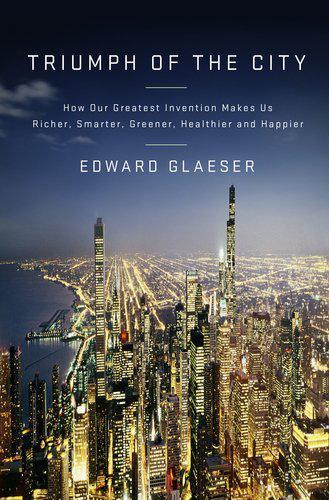
Triumph of the City: How Our Greatest Invention Makes Us Richer, Smarter, Greener, Healthier, and Happier
by
Edward L. Glaeser
Published 1 Jan 2011
The city exported basic commodities south to the cash colonies, where land and slaves were too valuable to waste on producing food and wood. Those colonies exported sugar and tobacco to the Old World. Manufactured goods were exported to Boston, which could buy them with the money made from selling food and wood to the Caribbean. Boston’s first-mover advantage in this triangle trade didn’t last forever. New York had a better river and was closer to the South; Philadelphia was surrounded by richer farmland. Boston faltered again, and then reinvented itself again in the early nineteenth century. The same improvements in ship technology that established New York as the hub of transatlantic travel made it possible for Bostonian mariners to create a global trade network.
…
t=113646. 232 allocated £400 . . . for a college: Morison, Three Centuries of Harvard; and Quincy, History of Harvard. 232 Another £375 and four hundred books: Morison, Three Centuries of Harvard, 9. 232 “most literate society then existing”: McCullough, Reformation, 520. 233 In 1647, a famine . . . fortune during the Colonial era: Rutman, “Governor Winthrop’s Garden Crop.” 233 The city exported . . . food and wood to the Caribbean: Ibid., 131-32. 233 Boston’s first-mover advantage . . . as China and South Africa: Ibid. 234 an understanding of Manchester’s power looms: “Lowell, Francis Cabot,” Encyclopædia Britannica. 234 religious mosaic founded new colleges: Tufts: “The Founding of Tufts University,” www.tufts.edu/home/get_to_know_tufts/history; Boston College: “History: From the South End to Chestnut Hill,” www.bc.edu/about/history.html, Feb. 5, 2010; Boston University: “Timeline,” www.bu.edu/timeline; and Wellesley: “College History,” web.wellesley.edu/web/AboutWellesley/CollegeHistory. 234 Vannevar Bush: “Raytheon: A History of Global Technology Leadership,” www.raytheon.com/ourcompany/history. 234 Raytheon’s current headquarters: The Raytheon Web site has a Google map confirming location on the reservoir near Route 128; address: Raytheon Company, 870 Winter Street, Waltham, MA 02451-1449. 234 engineers from MIT and Harvard created companies: Dorfman, “High Technology Economy.” 234 Wang had 30,000 employees and DEC had over 120,000: Wang: “An American Tragedy,” Economist, Aug. 22, 1992, 56-58.

Open Standards and the Digital Age: History, Ideology, and Networks (Cambridge Studies in the Emergence of Global Enterprise)
by
Andrew L. Russell
Published 27 Apr 2014
The proposal in INWG 61 shared many technical features with INWG 39 (Cerf and Kahn’s TCP draft) but described a different way to handle packet fragmentation and reassembly that, Zimmermann and Elie argued, would “greatly simplify implementation” across different types of packet-switched networks.60 For the remainder of 1974, the Arpanet and Cyclades design teams settled into two opposing camps, neither of which could establish decisive technical superiority or first-mover advantages. Both teams had strong leadership, but the Arpanet community used its advantages in size and funding to move its drafts and proposals closer to operational protocols. At the INWG meeting in August, Pouzin reported that the protocol described in INWG 61 was being tested in Cyclades and in links with other European networks.
…
The OSI reference model was not as lean as the Cyclades datagram design, but it was doing a better job of bringing more stakeholders into a widespread agreement. And as digital convergence continued with the force of a runaway train, there was scarcely time to pause and plan for the future: competitive pressures and consumer demand for network services continued to grow, and the allure of first-mover advantages were too attractive to resist.57 Despite the increasing duration of the project and seemingly endless levels of bureaucracy and diplomacy needed to create consensus international standards, the leaders and advocates of OSI still had cause for optimism. By 1984, ISO and CCITT formally merged their separate committees working on OSI standards.
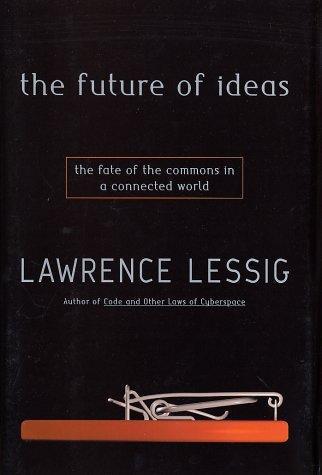
The Future of Ideas: The Fate of the Commons in a Connected World
by
Lawrence Lessig
Published 14 Jul 2001
The term of this protection is not to be overly long: patents are monopolies; monopolies raise prices. The term should be long enough to give enough incentive, without being so long as to raise prices unnecessarily. But a patent isn't the only device that might protect the innovator against inefficient copying. Being first to market in a network economy creates a first-mover advantage without imposing the costs of a patent. And other incentives are often sufficient to induce innovation without a patent. Jeff Bezos, for example, said of the 1-Click patent that Amazon.com would have developed the 1-Click technology whether or not there was a patent system.97 The reason is obvious: The system helps sell more books, and the profit from those additional sales of books is enough of an incentive for the invention of new technology.
…
Thus, while such a benefit is possible, that it is possible in the current regime has not, in my view, been shown. 103 Telephone interview with Bob Young, November 14, 2000. See also Kahin, 3-4 (“At the level of individual patents, patents may benefit small firms more than large firms because small-firm options for appropriating returns from innovation are fewer. For example, small firms may be less able to exploit first-mover advantages. At the portfolio level, large firms with large portfolios benefit disproportionately from network effects and economies of scale and scope. This includes their ability to manage transaction costs, which is the subject of the third perspective that I will explore at greater length.”); Kahin, 4 (“Small firms [with some exceptions] are generally disadvantaged because they lack in-house patent counsel and their business focus can be easily distracted by litigation or even claims of infringement.”). 104 “In the short run, individual patents work to [the benefit of small firms], while in the long run and in the aggregate, patents favor large firms.
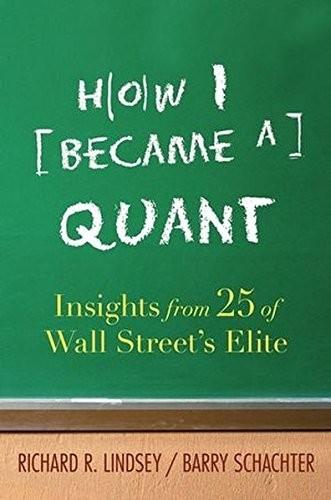
How I Became a Quant: Insights From 25 of Wall Street's Elite
by
Richard R. Lindsey
and
Barry Schachter
Published 30 Jun 2007
What were the factors that allowed me to establish myself in a position for which my prior credentials seem, in retrospect, quite meager? One factor was clearly that it was early enough in the development of the field that there were few people available who did have strong credentials. So I enjoyed a first-mover advantage by staking my claim early. I could also draw on the reputation for delivering results I had established with key traders and managers. But I also believe I enjoyed an advantage in having to struggle to come up the curve mathematically. It put me in a good position to figure out how to educate others who were finding the new concepts difficult.
…
See Normal copula usage, 240 Corporate funds, investment, 25 Correlations, estimates (usage), 100 Corrigan, Gerry, 99 Cost of capital, defining, 103–104 Courant Institute of Mathematical Sciences (New York University), 243 Cowles Foundation for Economic Research, 288 Cox, Ingersoll, Ross (CIR) model, 37 CRC Press, 86 Credibility breach, effect, 193 Credit cycles (auto-correlated time series properties), equity market description, 101 Credit pricing, 215–216 Credit risk era (late 1990s), 101–102 portfolio management, 220–223 questions, 98 CreditRisk+ (actuarial-based model), 101 Cross-asset class hybrids, 173 CRSP NASDAQ, 219 CSFP, 101 Dalman, Mehmet, 175 D’Ambrosio, Charles, 273 Data, noise (presence), 146 Data miners, 208 Davidson, Andrew, 177–185 Dazols, Andy, 286 Debt coverage, interest rates (surrogacy), 101 Decay, sources, 323 Default probability, 218 Defense Advanced Research Projects Agency (DARPA), 15 Delta-gamma approach, 100 Denby, Bruce, 117 Derivatives financial time bombs, description, 99 specialists, quants (equivalence), 322–323 Derman, Emanuel, 123–124, 293, 336 Derman/Kani binomial tree work, American options extension, 124 Diller, Stanley, 38 Dimensional Fund Advisors, 217 Discrete tenor models, 169 “Disentangling Equity Return Regularities: New Insights and Investment Opportunities,” 272 Distant Early Warning (DEW) system, 10–11 Divecha, Arjun, 308 Diversified Credit Investments, 211 Doubling up behavior, 194 Douglas, Mark, 321 Doust, Paul, 232 Dupire, Bruno, 167 Econometrics, problems, 188–189 Economic analysis, mathematics (pervasiveness), 145 Economic models, development, 147–148 Economic Profit framework, 103 Economic Value Added framework, 103 Economies of scale, 157 Efficient trading, usage, 257–258 Electronic trading, 75 Elton, Ned, 252 End-of-period price, 192 Enge, Harald, 12 Engerman, Mark, 312 “Engineering Portfolios: A Unified Approach,” 274 “Enhanced Active Equity Strategies: Relaxing the Long-Only Constraint in the Pursuit of Active Return,” 277 Equity Management: Quantitative Analysis for Stock Selection, 280 Equity markets, correlation, 101 Equity scaling, incorporation, 194 Error-determined portfolio, misallocation, 259–260 Estep, Tony, 253–254 Estimation error, MVO (usage), 260 Euler-Lagrange equation, 129 Eurodollar market, changes, 297–298 Eurodollar Standing Committee, 297 European Finance Association, 160 European Monetary System (EMS), 191, 193 realignments, forecasting, 300 Exchange-traded funds (ETFs), 278 Explorers, examination, 111–113 Extra large magnetic fluctuations (ELMs), 165 Extreme Value Theory (EVT), 239 Exxon, pension fund management, 179–180 Fama, Eugene, 198, 253, 266 FAQs in Option Pricing Theory (Carr), 242 Far-from-the-money options, 233 Fat tails, usage, 233 Federal Reserve Bank of New York, 297–298 FX counterparties, information, 299–300 FX desk, responsibility, 298–299 Fermat’s Last Theorem, 112–113 Finance career, 50–53 learning, 30–34 Monte Carlo methods, writing, 170 Financial Analyst Journal, 254–255, 272, 276–278 Financial distress, cost, 212 Financial engineering, 221 Financial markets, 240 electronification, 133 quantum mechanical principles, application, 62 risk model development, 34–35 P1: OTE/PGN P2: OTE JWPR007-Lindsey January 1, 1904 6:33 Index Financial risk factors, sensitivities (tracking), 239 Financial statements, analysis, 289–290 Financial textual sources, 26 Finnerty, John, 333–334 First Capital Holdings, bankruptcy, 214 First-mover advantage, 246 First Quadrant, 24–25 Fischer Black Memorial Foundation, 283 Fitch, Bruce, 71–72 Flat volatility surface, usage, 232 Flesaker, Bjorn, 151–162 Flesaker-Hughston model, 161 Floors, access, 75 Forecasting, problems, 25 Foreign exchange markets, movement (forecasting), 188 Four-Fifteen (VaR calculator), 300–301 Fraenkel, Peter, 132 “Free Lunch in Currency Hedging: Implications for Investment Policy and Performance Standards, The” (Perold/Schulman), 81 French, Kenneth, 198 Full-scale optimization, 256–257 “Fundamental Law of Active Management” (Grinold), 43 Fundamental Law of Active Management (Grinold/Kahn), 148 Future performance (signals), computer-intensive statistical techniques (usage), 69 Futures and Options Contracting: Theory and Practice (Marshall), 332 Galois Theory, study, 318–319 Garbage Can Model, 151–152 Garbage collection, 20 GARCH, 239 Gatheral, Jim, 132 Gauss, Karl Friedrich, 126 Geeks, importance, 207–210 Gerardin, Yann, 326–327 Ginzburg, Victor, 122 Glass Bead Game, The (Hesse), 108–111 Glasserman, Paul, 171 Global financial integration, 224–225 Gnu’s Not Unix (GNU), 18 Goetzmann, Will, 293 Goldman Sachs Asset Management (GSAM), 44–45 asset management division, 199 Quantitative Equity Group, 200 Quantitative Research Group, 200 initiation, 208 Goodman, Jonathan, 132 Gordon, Myron, 228–229 Gordon Capital, 229–231 fame, 230 risk management, absence, 232 Government of Canada bonds, 230 Graham and Dodd Award, 256, 272 Greenblatt, Rick, 18 Grinold, Richard, 33, 35, 308 BARRA model replacement, 36 Gross, Benedict, 126–127 Gruber, Marty, 252 Gundy, Wood, 231–232 Hardware firms, numbers (decline), 19 Harvard Business Review, 292 Heath, David, 140 Heath-Jarrow-Morton (HJM) work, 97–98 Hedging, 238, 247 Heisenberg’s uncertainty, 194 Herbst, Anthony, 334 Hermes Pensions Management Ltd., 143 Hesse, Herman, 108 High-risk funds, arithmetic average performance, 72 Hilbert, David (biography), 108 Historical simulation (Histsim), auditing, 235 Hoffman, Mark, 79 Horizon risk, 256 Hughston, Lane, 161 Hull, John, 121, 336 Implementation code, due diligence, 169 “Implementation Shortfall: Paper vs.

The Future Is Asian
by
Parag Khanna
Published 5 Feb 2019
Despite spending $50 billion between 2000 and 2016 on infrastructure and humanitarian projects across the region, China has purchased almost no meaningful loyalty. The phrase “China-led Asia” is thus no more acceptable to most Asians than the notion of a “US-led West” is to Europeans. China has a first-mover advantage in such places where other Asian and Western investors have hesitated to go. But no states are more keenly aware of the potential disadvantages of Chinese neomercantilism than postcolonial nations such as Pakistan and post-Soviet republics such as Uzbekistan and Kazakhstan. They don’t need shrill warnings in Western media to remind them of their immediate history.
…
Mongolia does, after all, have only 3 million people against 50 million horses, cows, camels, goats, and especially sheep, whose wool generates everything from fine cashmere sweaters to cozy, eco-friendly insulation for nomadic gers (tents). Asians aren’t moving to Mongolia, but Mongolia should be part of sustainable Asian homes. China has first-mover advantage in many of its neighboring countries, having invested in them when no one else would. But this does not pave a linear path to dominance. Instead, China’s robust entry into these markets elevates their profile in attracting other investors who can help them grow and pay down their debts to China, even substituting for Chinese loans and capital on less onerous terms.

The Flat White Economy
by
Douglas McWilliams
Published 15 Feb 2015
Where there are network effects, investment typically doesn’t take place until there is a critical mass of potential users. Network effects tend to cause investment to be held back in a similar fashion to supereconomies of scale, although in the case of the latter, the tendency to delay investment is moderated by the possibility of gaining first-mover advantage. It is the combination of supereconomies of scale and network effects that meant that the economic exploitation of the digital technologies took place on a different, tardier timetable than that which had been predicted by those who only understood the technological issues.3 Online retail and marketing Internet usage in most Western economies really took off during the first decade of the 21st century.
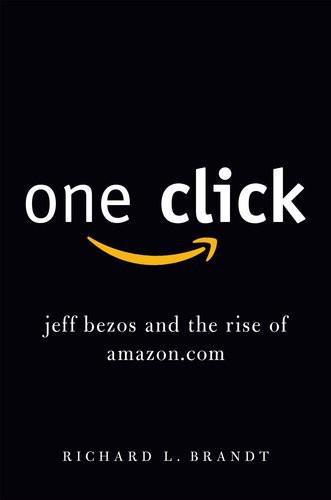
One Click: Jeff Bezos and the Rise of Amazon.com
by
Richard L. Brandt
Published 27 Oct 2011
This could be an experiment that ends up about as successful as Amazon’s earlier attempt to compete with eBay with its own auction service. Unless Amazon can come up with some distinct advantage over Netflix, such as lower prices or better streaming technology, there is no compelling reason to change services. This time, Netflix has the first-mover advantage. Bezos faced the same obstacle in 2004, when he rolled out Amazon’s own search service, called A9. His home-built search algorithms were initially just designed to find products on Amazon’s site, while he got a license to use Google’s search engine to find items elsewhere on the Internet.
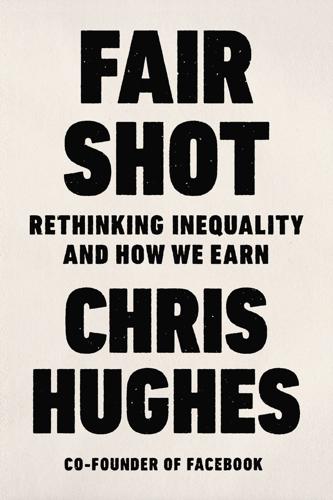
Fair Shot: Rethinking Inequality and How We Earn
by
Chris Hughes
Published 20 Feb 2018
One voice on early message boards was just as loud as any other, and someone with a good idea and a small bit of tech savvy, like us in our college dorm room, could throw up a website and access millions of people willing to try out anything new. But the openness also allowed early entrants to enjoy first-mover advantages that latecomers could not recapture. Just like in any land rush, whether in nineteenth-century America or the economy in post-Soviet Russia, after a brief period of seemingly egalitarian chaos, a few major players consolidated power. Four companies now control the vast majority of our interactions on the web.

The Rational Optimist: How Prosperity Evolves
by
Matt Ridley
Published 17 May 2010
Though customs officers searched foreigners’ possessions for plans of machinery, New Englanders like Francis Cabot Lowell sauntered innocently about the mills of Lancashire and Scotland ostensibly for his health while frantically memorising the details of Cartwright power looms, which he promptly copied on his return to Massachusetts. The dye industry relied mostly on secrecy till the 1860s when analytical chemistry reached the point where rivals could find out how dyes were made; it then turned to patents. Or, second, you can capture the first-mover advantage, as Sam Walton, the founder of Wal-Mart, did throughout his career. Even as his retailing rivals were catching up, he was forging ahead with new cost-cutting tactics. Intel’s dominance of the microchip industry, and 3M’s of the diversified technology industry, were based not on protecting their inventions so much as on improving them faster than everyone else.
…
p. 268 ‘laying the foundations for their global dominance at the expense of precisely the big companies dirigistes admired’. Postrel, V. 1998. The Future and Its Enemies. Free Press. p. 269 ‘A large study by the OECD’. Quoted in Kealey, T. 2007. Sex, Science and Profits. William Heinemann. p. 270 ‘a recent survey of forty-six major inventions’. Agarwal, R. and Gort, M. 2001. First mover advantage and the speed of competitive entry: 1887–1986. Journal of Law and Economics 44:161–78. p. 270 ‘sired by the bicycle out of the horse carriage’. Rolt, L.T.C. 1967. The Mechanicals. Heinemann. p. 271 ‘cross-fertilisation ... does ... happen between species of bacteria, 80 per cent of whose genes have been borrowed from other species’.
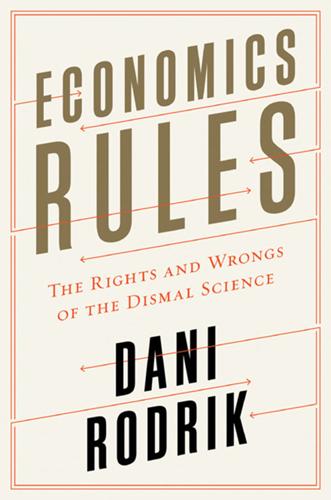
Economics Rules: The Rights and Wrongs of the Dismal Science
by
Dani Rodrik
Published 12 Oct 2015
In addition to monopolies and duopolies, we have “monopolistic competition” (a large number of firms, each with market power in a different brand), Bertrand versus Cournot competition (different assumptions about how prices are set), static versus dynamic models (which affect the degree of collusion that can be sustained by firms), simultaneous versus sequential moves (which determine whether there might be first-mover advantages), and so on. Depending on what we assume along these and many other dimensions, we have learned from decades of modeling that imperfect competition can produce a bewildering array of possibilities. More important, thanks to the transparency of the assumptions, we have also learned what each one of these outcomes is predicated on.

The Thank You Economy
by
Gary Vaynerchuk
Published 1 Jan 2010
It’s bound to get harder to get earned media—now that plans like Facebook campaigns are gaining in popularity, the mainstream press won’t always fall all over itself to write about them—but while it lasts, it will be powerful, powerful stuff. Of course, the best of the best will always grab the press’s heartstrings, especially as technology continues to move forward to allow outstanding mobile and augmented reality campaigns. Brands should also do everything they can to gain first-mover advantage. Marketers have to keep their finger on the pulse of the culture and keep an eye on the incoming trains. Smart marketers shouldn’t ever get too comfortable in their seats. Brands and businesses that can see the potential of emerging platforms will always have an edge over their competition.
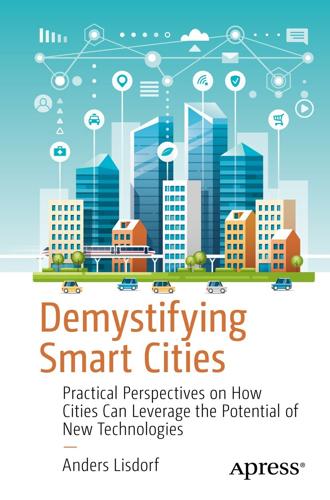
Demystifying Smart Cities
by
Anders Lisdorf
According to Rogers, five distinct adopter categories could be distinguished:Innovators – Will adopt almost anything as long as it has potential. This group uses the bleeding edge technologies that are experimental and unproven. It also has a high-risk tolerance. Early adopters – Are more selective than the innovators but put high emphasis in being first. They often look for a first-mover advantage in terms of adopting technology. Early majority – This group is open to innovation but likes to see it demonstrated by others first. This is one of the largest groups. Late majority – Adopt innovation after half of the market has already adopted it. They are skeptical and are also often driven by very low-risk tolerance in terms of technology.

Attention Factory: The Story of TikTok and China's ByteDance
by
Matthew Brennan
Published 9 Oct 2020
ByteDance, on the other hand, had verified its hypothesis—TikTok did indeed hold the potential for widespread adoption across the globe, and the app was making rapid progress. China had a universe of internet services parallel to that of the West, targeting mainly users within China. TikTok was the first China-made consumer internet product that had built a genuinely far-reaching global footprint. The main reason for this was its strong first-mover advantage. As ByteDance had discovered in early markets such as Japan, TikTok was essentially competing with itself. The experience that the app provided was simply different from other social media and social networks. Behind TikTok’s rise was a broader global trend. From e-commerce to payments and mobile gaming, China was now leading the world in many consumer internet services.

Superintelligence: Paths, Dangers, Strategies
by
Nick Bostrom
Published 3 Jun 2014
Existential catastrophe as the default outcome of an intelligence explosion? An existential risk is one that threatens to cause the extinction of Earth-originating intelligent life or to otherwise permanently and drastically destroy its potential for future desirable development. Proceeding from the idea of first-mover advantage, the orthogonality thesis, and the instrumental convergence thesis, we can now begin to see the outlines of an argument for fearing that a plausible default outcome of the creation of machine superintelligence is existential catastrophe. First, we discussed how the initial superintelligence might obtain a decisive strategic advantage.
…
While humans (and human-run institutions) are occasionally able to precommit—with imperfect degrees of credibility and specificity—some types of machine intelligence might be able to make arbitrary unbreakable precommitments and to allow negotiating partners to confirm that such a precommitment has been made.42 The availability of powerful precommitment techniques could profoundly alter the nature of negotiations, potentially giving an immense edge to an agent that has a first-mover advantage. If a particular agent’s participation is necessary for the realization of some prospective gains from cooperation, and if that agent is able to make the first move, it would be in a position to dictate the division of the spoils by precommitting not to accept any deal that gives it less than, say, 99% of the surplus value.
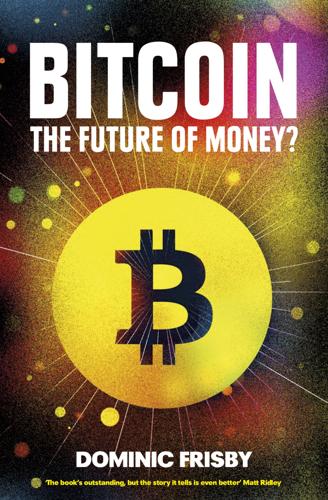
Bitcoin: The Future of Money?
by
Dominic Frisby
Published 1 Nov 2014
The M-Pesa has more limited use and less potential functionality than Bitcoin. It is not a money without borders. But given the stage of development that much of rural Asia and Africa is at, I’m inclined to agree that the M-Pesa has greater potential in these parts of the world over the next few years. It also has significant first-mover advantage. But the prospects of the M-Pesa emphasize the point that people the world over need better systems of sending money and that these better systems are coming. There are some 640,000 villages in India. Seventy-two per cent of India’s 1.2 billion people live in them. The other 28% live in towns or cities.194 Over half of India’s population don’t have bank accounts195 – and the rural population is considerably more than 50% ‘unbanked’.

Electronic and Algorithmic Trading Technology: The Complete Guide
by
Kendall Kim
Published 31 May 2007
Pre-trade Buy-Side Uses of Pre-Trade TCR Understand Cost 36% Determine Strategy 24% 13% Evaluate Bids Idea of Benchmark 11% Decision Process 11% PM Knowledge 2% Best Execution 2% Response 42% Exhibit 10.4 Source: TABB Group. 108 Electronic and Algorithmic Trading Technology analytics is an important part of dialogue between traders and portfolio managers. One of the leading providers of TCR is ITG (see Exhibit 10.5). ITG was quick to integrate its pre-trade analytics and distribute the product efficiently to the investment community with first mover advantage. The inherent weaknesses of pre-trade analytics are accessibility and accuracy, along with the questionable willingness of investment firms to utilize it. 10.4 The Future of Transaction Cost Research According to the TABB Group, TCR research products will continue to evolve based on four basic trends: 1. 2. 3. 4.
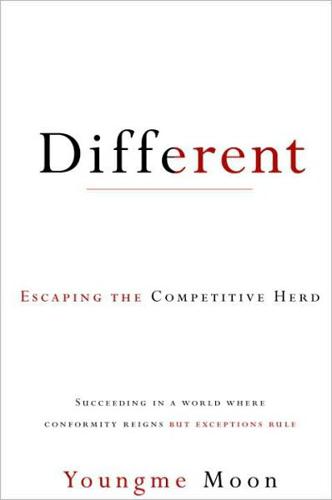
Different: Escaping the Competitive Herd
by
Youngme Moon
Published 5 Apr 2010
The best that a firm can hope for is a strategy that offers sustainable advantage over the long term—not over al of eternity, but over the long term. What a breakaway positioning strategy offers is the opportunity to achieve a kind of differentiation that is sustainable over the long term. The Swatch is the bestsel ing brand in the history of its industry; it enjoyed the benefits of first-mover advantage for decades before competitors were able to chip away at its market share. Kimberly-Clark was able to dominate the Pul Up segment for more than fifteen years after the product’s introduction. The Simpsons is the longest-running sitcom of al time. As for Cirque du Soleil, it has no competitors; it remains sui generis.
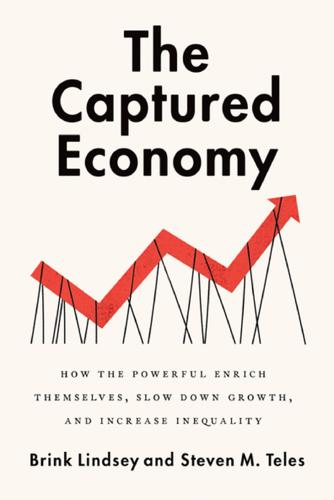
The Captured Economy: How the Powerful Enrich Themselves, Slow Down Growth, and Increase Inequality
by
Brink Lindsey
Published 12 Oct 2017
Open competition would allow new entrants that did not have to incur all the heavy fixed costs of the first mover and that could therefore sell profitably at a much lower price. These new entrants would drive down prices and take market share away from the first mover (although significant first-mover advantages still remain). Strong intellectual property protection—copyright for entertainment, patents for drugs, and a combination for software—eliminates or at least reduces this threat of copycat competition. Accordingly, the effect of patents and copyright is to allow industry leaders to take fuller advantage of the potential scale economies that the nature of their industries permits.

This Is Not Normal: The Collapse of Liberal Britain
by
William Davies
Published 28 Sep 2020
Hedge funds were generous backers of both the Leave and Remain campaigns in 2016, but both sides extracted handsome rewards from the financial turmoil that immediately followed the result. Questions were raised about the relationships between polling companies and hedge funds on the day of the referendum, with fears that pollsters were passing on sensitive information to private clients, to give them first-mover advantage. Bloomberg reported last June that when Farage made his peculiar concession of defeat on the night of the referendum result, he may already have been in possession of polling data from Survation – privately commissioned by multiple clients including hedge funds – which predicted that Leave would win.
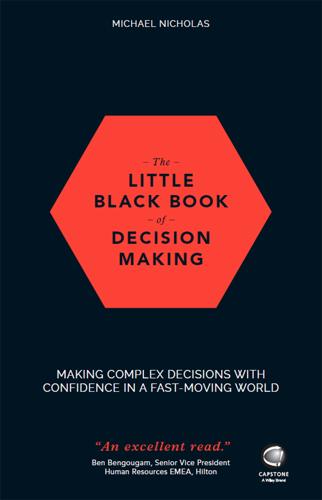
The Little Black Book of Decision Making
by
Michael Nicholas
Published 21 Jun 2017
John Antioco, CEO, Blockbuster In the late 1990s, when I was working as a strategist at Deloitte, a common challenge was to help clients to find ways in which they might be able to gain a strategic competitive advantage – ideally, to find an innovation with the potential to re-shape their industry. Back then, Blockbuster was one of the finest recent examples of a company that had achieved just that, having introduced a new business model that rapidly superseded the previous one and gaining a huge first-mover advantage in the process. Blockbuster's creator was a computer programmer named David Cook. Motivated by need – his software business was suffering from a downturn in the oil and gas industry – he noticed that the video rental business was mostly run as a side-show within the core business of corner shops, newsagents and convenience stores, and that store owners at the time had no idea which films were in or out of stock.
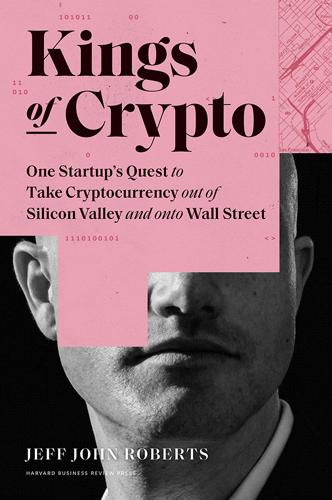
Kings of Crypto: One Startup's Quest to Take Cryptocurrency Out of Silicon Valley and Onto Wall Street
by
Jeff John Roberts
Published 15 Dec 2020
Borrowing from the Coinbase playbook, the twins marketed Gemini as a buttoned-up Wall Street business that stayed on the right side of regulators. The new exchange quickly found traction and, like Kraken, offered Ethereum well before Coinbase. Brian’s insight about an open secret—that ordinary people needed an easy way to buy bitcoin—had paved the way for Coinbase’s massive early success. It let the company exploit a first-mover advantage to become the go-to service for retail customers to buy bitcoin. Now, as the cryptocurrency world barreled into a new era of Ethereum and institutional investors, Coinbase found itself in an unfamiliar position: late and needing to catch up. 8 Wall Street Comes Calling Bitcoin first blossomed in Silicon Valley, and it’s easy to see why.
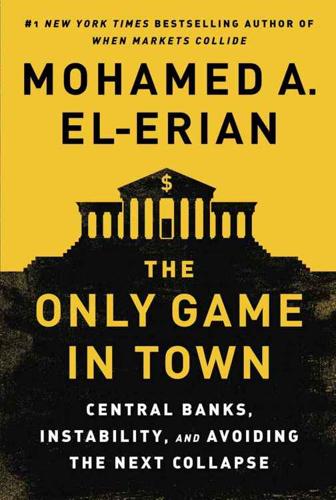
The Only Game in Town: Central Banks, Instability, and Avoiding the Next Collapse
by
Mohamed A. El-Erian
Published 26 Jan 2016
It was very detailed—from specifying who would go to Lehman to deliver the notices of failure so that we could quickly reconstitute certain positions elsewhere, to very careful cash and collateral management. In putting this action plan in operation very early on that Monday morning, we were able to harvest many first-mover advantages to the significant benefits of our clients. We had a better mindset and were in a much better cognitive position to move forward rather than play desperate catch-up defense. In football terms, it was the equivalent of starting the second quarter just a field goal behind rather than four touchdowns back.

Blindside: How to Anticipate Forcing Events and Wild Cards in Global Politics
by
Francis Fukuyama
Published 27 Aug 2007
The more powerful an organization or country is, the more important early recognition and anticipatory action become. The stakes get that much higher, and the probability of getting surprised becomes even more likely. Such preparedness results in the ability to seize opportunities, such as gaining first-mover advantage when surprise happens, and to deal more effectively with threats, such as minimizing risks with contingency plans or even preventing certain events from happening. In our daily work, we are constantly engaged with major companies and organizations, talking with leading-edge thinkers, traveling the world, and using the important tools mentioned here to scan the landscape for “what’s next.”
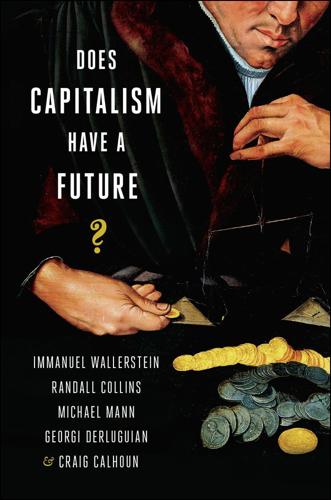
Does Capitalism Have a Future?
by
Immanuel Wallerstein
,
Randall Collins
,
Michael Mann
,
Georgi Derluguian
,
Craig Calhoun
,
Stephen Hoye
and
Audible Studios
Published 15 Nov 2013
And once they wash out of the speculative market, do they ever get back in, barring gainful employment on their own? Financial markets are intrinsically inegalitarian, concentrating wealth in the small number of big players at the top of the pyramid. It is precisely the advantage of better networking, insider viewpoint, first-mover advantages, and ability to ride out fluctuations better than small players that gives big players in higher meta-markets their capacity to make profits from the medium and small players in lower-order markets. Pyramided levels of monies illustrate Viviana Zelizer’s [1994] theory that money is not homogeneous but plural, diverse sets of specific currencies circulating within their own social networks.
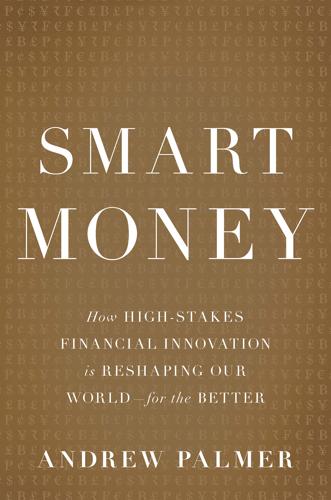
Smart Money: How High-Stakes Financial Innovation Is Reshaping Our WorldÑFor the Better
by
Andrew Palmer
Published 13 Apr 2015
Tenney Frank, “The Financial Crisis of 33 AD,” American Journal of Philology 56, no. 4 (1935). 3. Oscar Gelderblom and Joost Jonker, “Completing a Financial Revolution: The Finance of the Dutch East India Trade and the Rise of the Amsterdam Capital Market, 1595–1612,” Journal of Economic History (2004). 4. Peter Tufano, “Financial Innovation and First-Mover Advantages,” Journal of Financial Economics (1989); Peter Tufano, “Financial Innovation,” Handbook of the Economics of Finance (2003). 5. “The Dojima Rice Market and the Origins of Futures Trading” (Harvard Business School Case Study, November 2010). 6. Minos Zombanakis, “The Life and Good Times of Libor,” Financial World (June 2012). 7.

Silk Road
by
Eileen Ormsby
Published 1 Nov 2014
They got a decent number of sign ups, or so they claimed, but that didn’t convert to sales, as is demonstrated by the fact that most listings have no reviews. Astor also had some insights into why, despite doing everything right and having a robust business model, Atlantis had been unable to make any impact on Silk Road’s market. Silk Road, in business terms, had ‘first-mover advantage’; the advantage of the initial significant player in a market segment: The reason the media blitz didn’t work and they lost in the competition against SR is not because of any security issues, since most people don’t know anything about those issues and that was not a part of their decision making process.
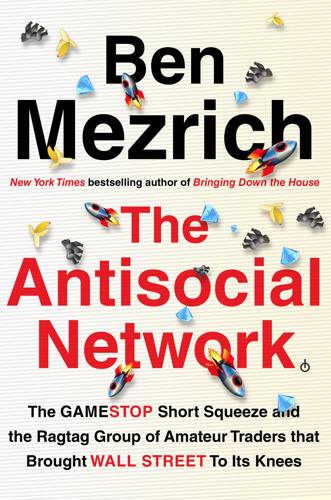
The Antisocial Network: The GameStop Short Squeeze and the Ragtag Group of Amateur Traders That Brought Wall Street to Its Knees
by
Ben Mezrich
Published 6 Sep 2021
This wasn’t some fly-by-night operation; GameStop was one of the foundational companies in the video game space, a segment of the retail industry that had ballooned to more than $150 billion in 2019 alone—and showed no signs of slowing, as more and more people spent more and more time online. GameStop had failed to take advantage of its built-in customer base and first-mover advantage in gaming to shift beyond its brick-and-mortar weaknesses—but that didn’t mean it couldn’t pivot. They’d mismanaged the shift online like many other businesses before them—Blockbuster, Borders, BlackBerry—and that was just the B’s—but that didn’t mean there wasn’t still time. Keith also couldn’t discount the emotional factor that drew him to GME: like a lot of people from his generation, he fucking loved GameStop.

Uncanny Valley: A Memoir
by
Anna Wiener
Published 14 Jan 2020
He told us, with some reluctance, that he was in his early forties. Age discrimination was crazy in this industry, he said. Local cosmetic surgeons were making a mint. The influencer brought a scooter into the office and rolled around barking into a wireless headset about growth hacking: value prop, first-mover advantage, proactive technology, parallelization. Leading-edge solutions. Holy grail. It was garbage language to my ears, but customers loved him. I couldn’t believe that it worked. One afternoon, he rolled up to my desk. “I love dating Jewish women,” he said. “You’re so sensual.” How did he know I was Jewish, I wondered, but of course he knew I was Jewish: large aquiline nose, gigantic cartoon eyeballs, eyelashes long enough to smash against the lenses of my glasses.

Prediction Machines: The Simple Economics of Artificial Intelligence
by
Ajay Agrawal
,
Joshua Gans
and
Avi Goldfarb
Published 16 Apr 2018
More customers mean more data, more data means better AI predictions, better predictions mean more customers, and the virtuous cycle continues. Under the right conditions, once a company’s AI leads in performance, its competitors may never catch up. In our Amazon predictive-shipping thought experiment in chapter 2, Amazon’s scale and first-mover advantage could conceivably generate such a lead in prediction accuracy that competitors would find it impossible to catch up. This is not the first time that a new technology raises the possibility of breeding large companies. AT&T controlled telecommunications in the United States for more than fifty years.

Fully Automated Luxury Communism
by
Aaron Bastani
Published 10 Jun 2019
When you consider the labour costs as well as Amazon’s singular advantage in high automation warehousing – here too they are a world leader with their ‘KIVA’ robot – it quickly becomes clear the company could come to dominate areas of offline retail just as they presently do online. That is, except in China, where in late 2017 the local retailer JD.com announced the opening of hundreds of ‘unmanned stores’ ahead of anyone else. Regardless whether it is Amazon or a rival who gains first-mover advantage, the trends are clear. The future of retail, as with logistics and warehousing, is automated. Yes, some jobs will remain, but when you consider that salesperson and cashier are the two leading jobs in the United States – and indeed most other countries – the prospect is a frightening one. Some might say customers want an emotional connection when they shop, and in certain contexts that may well be true, but most of the time the primary consideration will be the best product at the most affordable price.

Brilliant, Crazy, Cocky: How the Top 1% of Entrepreneurs Profit From Global Chaos
by
Sarah Lacy
Published 6 Jan 2011
MetaCafe was YouTube before YouTube existed, only it didn’t move fast enough, didn’t spread quickly enough, and didn’t have those cozy connections that helped score YouTube a $1.6 bil ion purchase from Google. Now based in Palo Alto, MetaCafe is stil a going concern, but it would be lucky to get an exit one-tenth of the size of that YouTube deal. MetaCafe was striking evidence for Israelis that the so-cal ed first mover advantage that was so heralded in the early land-grab days of the Web just wasn’t that important anymore. Has the MetaCafe curse discouraged Israeli entrepreneurs from trying something new? Something has. Al too often the Web ideas coming out of Tel Aviv are just rip-offs of Val ey companies without much localization and only incremental improvements.

Half In, Half Out: Prime Ministers on Europe
by
Andrew Adonis
Published 20 Jun 2018
It is perhaps an underappreciated irony that two of today’s most establishment Eurosceptics were, when in office, strong advocates of key European mechanisms, which, in very British fashion, they instrumentalised for entirely domestic ends. Nigel Lawson was determined to join the ERM, without ever intending to join EMU, to anchor UK policy and curb inflation. This happened, but the fall-out of exit in 1992 was a key component in the subsequent sceptic turn in Conservative politics. King welcomed free movement and exploiting first mover advantage – as no other major EU member state opened its labour market without the transitional periods – in order to tap a near inexhaustible supply of labour to address UK needs. The economic benefits of the unprecedentedly large-scale free movement which took place between 2004 and 2007 were seen as axiomatic for employers, the economy as a whole and the public finances.
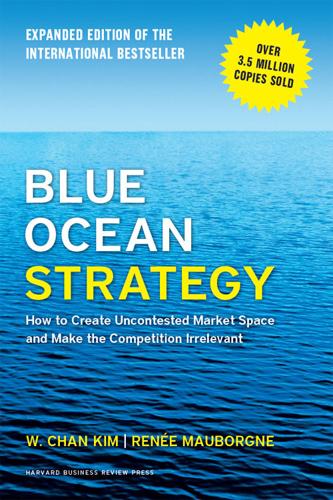
Blue Ocean Strategy, Expanded Edition: How to Create Uncontested Market Space and Make the Competition Irrelevant
by
W. Chan Kim
and
Renée A. Mauborgne
Published 20 Jan 2014
Have you developed compelling people propositions for each of these to ensure they are motivated and behind the execution of your new idea? Putting It All Together The examples of Napster and Apple’s iTunes in the digital music industry allow us to put this all together: two strategic moves, both seeking to create and capture uncontested market space with digital music. Napster had the clear first-mover advantage, pulled in over 80 million registered users, and was generally loved for its value proposition, but its strategy ultimately failed. It had no sustainability. In contrast, iTunes achieved sustainable success and both dominated and grew the blue ocean of digital music. Fundamentally, what separates the outcomes of these two strategic moves is alignment.

API Marketplace Engineering: Design, Build, and Run a Platform for External Developers
by
Rennay Dorasamy
Published 2 Dec 2021
This could include a 2- to 3-minute video, showing at a high-level, preferably in a non-technical context, how the Marketplace provides services and capabilities upon which new products can be built. Be sure to extol the benefits of adoption. This can be done through motivation, “by using our platform today, you have a first-mover advantage to power your business and leapfrog the competition,” or through fear – “in Europe, governments have issued regulations that require all banks to abide by the Payment Services Directive by the end of 2018. Our government is investigating similar regulation.” Educate An empowered third party will understand the purpose of the platform and can leverage the business capability for commercial use.
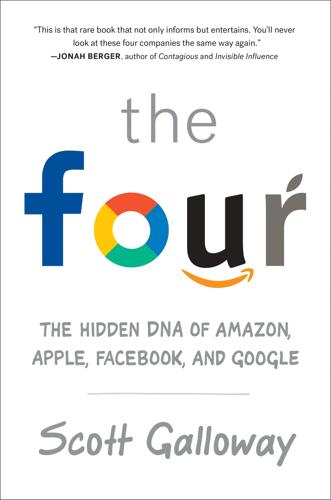
The Four: How Amazon, Apple, Facebook, and Google Divided and Conquered the World
by
Scott Galloway
Published 2 Oct 2017
The second is profiting from assets built by someone else in a manner unavailable to the originator. The first means that the future horsemen don’t have to depend upon their native ingenuity to come up with innovative ideas—and throwing lawyers at those who try the same thing to them means they won’t be victims, too. The second is a reminder that the so-called first-mover advantage is usually not an advantage. Industry pioneers often end up with arrows in their backs—while the horsemen, arriving later (Facebook after Myspace, Apple after the first PC builders, Google after the early search engines, Amazon after the first online retailers), get to feed off the carcasses of their predecessors by learning from their mistakes, buying their assets, and taking their customers.
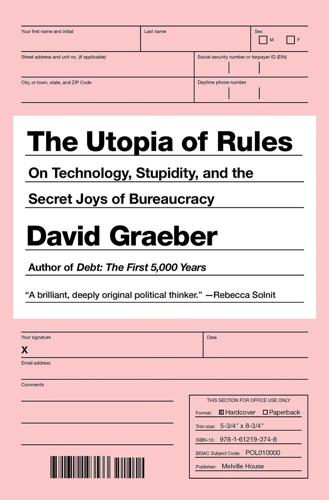
Bureaucracy
by
David Graeber
Published 3 Feb 2015
Either it failed, or it succeeded. If it failed, then no manager who wants to keep his or her job will approve spending money trying to revive it. If it succeeded, then it’s patented and entry to the market is presumed to be unattainable, since the first people who thought of it will have “first-mover advantage” and will have created “barriers to entry.” The number of seemingly promising ideas that have been crushed in this way must number in the millions.109 I could go on, but I assume the reader is getting the idea. A timid, bureaucratic spirit has come to suffuse every aspect of intellectual life.
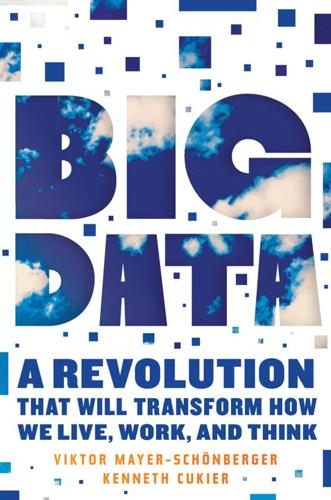
Big Data: A Revolution That Will Transform How We Live, Work, and Think
by
Viktor Mayer-Schonberger
and
Kenneth Cukier
Published 5 Mar 2013
It found a way to improve the part with modified software, received a patent on the technique, then sold the patent to the supplier—and earned a pretty penny in the process. The new data intermediaries Who holds the most value in the big-data value chain? Today the answer would appear to be those who have the mindset, the innovative ideas. As we saw from the dotcom era, those with a first-mover advantage can really prosper. But this advantage may not hold for very long. As the era of big data moves forward, others will adopt the mindset and the advantage of the early pioneers will diminish, relatively speaking. Perhaps, then, the crux of the value is really in the skills? After all, a gold mine isn’t worth anything if you can’t extract the gold.

Blitzscaling: The Lightning-Fast Path to Building Massively Valuable Companies
by
Reid Hoffman
and
Chris Yeh
Published 14 Apr 2018
At that time, eBay was basically successful and operational in the US, Germany, and Japan. By jumping into a market where even other Latin American entrepreneurs feared to tread, MercadoLibre was able to gain a head start on the competition and achieve first-scaler advantage. It’s important not to confuse critical mass with first-mover advantage. Being first to launch in a market might earn you congratulations on being a product visionary, but if you aren’t also the first to scale, you’ll end up as a footnote in a Wikipedia article about your competitor who did. Furthermore, sometimes there is no first-scaler advantage to be won.

The New Rules of War: Victory in the Age of Durable Disorder
by
Sean McFate
Published 22 Jan 2019
The United States must play catch-up, debunking China’s aggressive narrative before credibly advancing its own. In a similar vein, when tensions mount over the disputed Senkaku Islands, CCTV will quickly launch a strong offensive blaming “right-wing nationalists” in Japan for any incident or escalation.10 CCTV gives China the first-mover advantage in the media wars, and truth is always the first casualty. As for China’s legal warfare, or “lawfare,” its goal is to bend—or rewrite—the rules of the international order in China’s favor. This is not the rule of law, but rather its subversion. International law is the glue that binds the society of states, and it constitutes the “rules of the road” for world affairs.
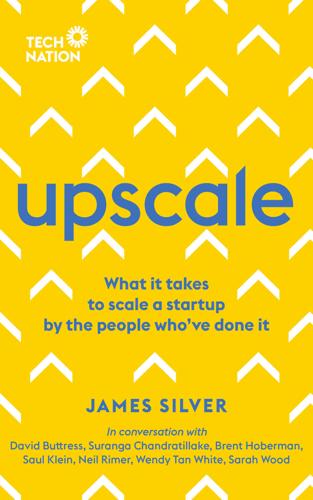
Upscale: What It Takes to Scale a Startup. By the People Who've Done It.
by
James Silver
Published 15 Nov 2018
Ultimately, when you’re doing comms, you shouldn’t be looking for instant gratification. Yes, a news event might generate one-time explosive coverage, but the real value is slow-burn and incremental. The ideal is to build your credibility, brand and presence bit by bit, over time. However, if you figure out a differentiating angle for your startup, first-mover advantage is critical The narrative in the tech space moves fast in communications terms. If you’re an early-stage startup in a genuinely new or emerging category, don’t hang about. Get your story out there. Not too long ago, we were pitching a trailblazer in the insurtech/insurance disruption startup space - a category which few journalists we spoke to had heard of at the time.
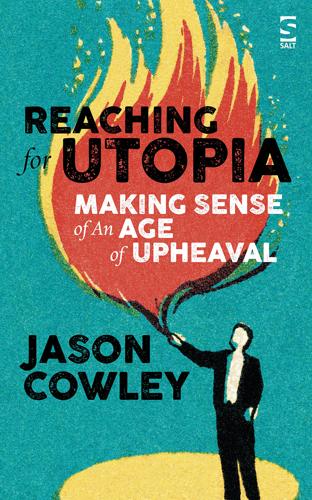
Reaching for Utopia: Making Sense of an Age of Upheaval
by
Jason Cowley
Published 15 Nov 2018
(Under the later leadership of John Redmond, the IPP eventually formed a coalition with Herbert Asquith’s Liberals in 1910, a government that passed the Parliament Act of 1911 that belatedly curtailed the House of Lords’ power of veto, by which the aristocracy had resisted progressive reforms and defended its class and landed interests.) There had been discussion among Conservatives about whether Cameron should be prepared to negotiate with the SNP. The editor of the ConservativeHome website, Paul Goodman, suggested that Cameron could utilise ‘his First Mover Advantage as the serving prime minister . . . by coming to an arrangement with as many of the minor parties as he can, under which they agree not to bring down his minority government. This, in turn, would mean striving to come to one with Alex Salmond.’ But this is a non-starter. Salmond tells me that the SNP would not negotiate with the Tories, nor would it seek any compromise with them: instead, the SNP would act to bring down a Cameron minority government by voting against a Queen’s Speech.
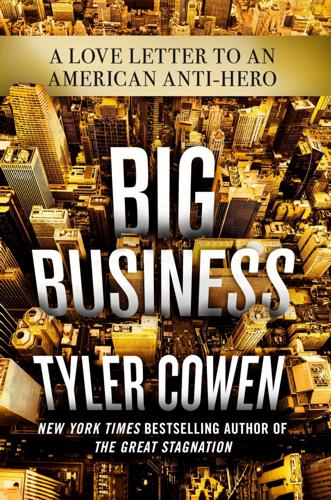
Big Business: A Love Letter to an American Anti-Hero
by
Tyler Cowen
Published 8 Apr 2019
They become more bureaucratic, they fail to foresee new and important products, market conditions turn against them, foreign competitors enter the market, disruptive technologies can “change everything,” or their costs rise as they lose their dynamism. Most of all, the long-run story of capitalism is one of market churn. Not long ago it was feared that Nokia would dominate cell phone markets for a long time to come, and now the company is not even a major player. Myspace too was considered by many to have a dominant “first mover” advantage. In other words, the costs of monopoly dissipate more quickly than a lot of people realize. Incipient competition is powerful even when it is not always immediately visible. Later in this chapter I’ll consider some of the cases where monopoly has gone up, but let’s start with the good news.

Live Work Work Work Die: A Journey Into the Savage Heart of Silicon Valley
by
Corey Pein
Published 23 Apr 2018
Apparently, Diamandis had scoured his own soul and found a passion for the extractive industries. Where others looked to the stars and felt wonder, Diamandis saw spoils ripe for plunder. “The Earth is a crumb in a supermarket filled with resources,” he said. His asteroid mining venture, Planetary Resources, was an effort to gain first-mover advantage on exploiting the mineral wealth of places beyond earth. “In the same way that we Europeans looked toward the New World to colonize for resources, we as humanity can look toward space as the ultimate supply of resources,” he said. The same ahistorical and romantic view of conquest pervaded the Summit, frequently punctuated by charts going up.

Restarting the Future: How to Fix the Intangible Economy
by
Jonathan Haskel
and
Stian Westlake
Published 4 Apr 2022
Second, they create what legal scholar Michael Heller20 called gridlock, in which old ideas act as a block to the extent that innovation depends on mixing different ideas together, either by creating nasty surprises like the Gaye estate’s claims against “Blurred Lines” or by simply creating a soup of permissions that are too arduous to negotiate. This soup would likely defeat a latter-day Public Enemy trying to record songs made of dozens of samples. Opponents of IP also contend that the benefits of patents are overstated. Boldrin and Levine argue that if patents did not exist, then first-mover advantage could provide a sufficient reward for firms that invest in innovation. For example, they observe that it took a year for Apple’s competitors to create a product similar to the iPhone, during which time Apple enjoyed exclusive control over the market for the new generation of smartphones. They also note that one of the original motivations for patents—specifically, that it made an innovation “patent” in the sense of public, so that others could learn from it—is no longer effective, because most patents are written so as not to provide true disclosure regarding how the underlying technology works.

Vassal State
by
Angus Hanton
Published 25 Mar 2024
Together the ‘host’ and ‘guest’ send 17 per cent (a sixth) of the income back to California, and that comes out of UK rentals of about £1 billion a year.31 Each of these platforms takes whatever slice they can get: Eventbrite clips 7 per cent off ticket receipts; Deliveroo gobbles up 30 per cent of what is paid for a meal; and the really big platforms like the Apple App Store or Google Play demand 30 per cent of revenue from app sales.32 These businesses gained first-mover advantages and have often become highly lucrative monopolies. The prospect of such profitability leads US venture capitalists to pour money in to help establish platforms in new sectors. A whole cohort of West Coast investors has helped evolve a highly effective funding system from seed capital to public listing (initial public offering, or IPO) while also supporting and mentoring the founders.

The Origins of Political Order: From Prehuman Times to the French Revolution
by
Francis Fukuyama
Published 11 Apr 2011
These are the state itself, represented by the king; the upper nobility; the gentry; and what I call the Third Estate. This fourfold division oversimplifies things tremendously but is nonetheless helpful in understanding outcomes. The state emerged in Europe when certain noble houses achieved a first-mover advantage in becoming more powerful than the others—the Capetians in France, the Árpáds in Hungary, the Rurik dynasty in Russia, the Norman royal house after the conquest. Their rise was due to some complex combination of favorable geography, good leadership, organizational competence, and the ability to command legitimacy.
…
As in the case of the Ottoman sipahis, members of the middle service class were rewarded by settling these cavalrymen on new lands as direct dependents of the Crown. (The closest equivalent of this practice in Western Europe was the Spanish Crown’s granting of huge encomiendas in the New World to the conquistadores as a reward for service, a practice that led to a similarly hierarchical political system.) The Duchy of Muscovy obtained significant first-mover advantages by its early successes against the Tatars, which gave it considerable legitimacy over the other appanage princes. Second, very little time elapsed between the lifting of the Mongol yoke and the state-building project undertaken by Moscow. In Western Europe, feudalism had had eight hundred years to sink roots, producing a proud blood nobility entrenched in the impregnable castles that dotted the landscape.

More Joel on Software
by
Joel Spolsky
Published 25 Jun 2008
We were all wrong. Wrong, wrong, wrong. eBay made a big bet on the cultural anthropology of human beings and won. The great thing about eBay is that it was a huge success precisely because it seemed like a terrible idea at the time, and so nobody else tried it, until eBay locked in the network effects and first-mover advantage. In addition to absolute success and failures in social software, there are also social software side effects. The way social software behaves determines a huge amount about the type of community that develops. Usenet clients have this big-R command, which is used to reply to a message while quoting the original message with those elegant >’s in the left It’s Not Just Usability 107 column.
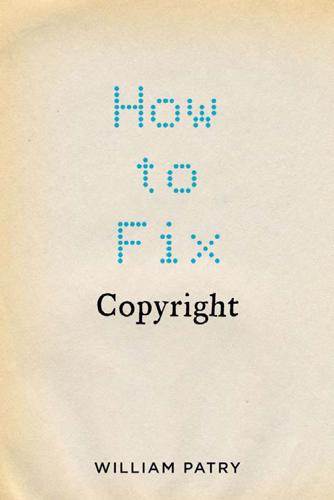
How to Fix Copyright
by
William Patry
Published 3 Jan 2012
It is difficult to see how copyright law can play much of a role at all in furthering a knowledge-based economy regardless of how it is defined: Copyright law excludes much material that forms the basis for those industries commonly (if imprecisely) thought as being part of the knowledge-based economy. For example, protection is denied for facts, ideas, systems, procedures, methods of operation, and many compilations of data. First-mover advantages, trade-secret law, and contracts are far more effective than copyright for protecting knowledge-based products, to the extent any protection is necessary: many prominent companies in the knowledge-based industries operate on public domain or open source software. As discussed below,54 U.S. database producers outperform EU database producers even though there are no database rights in the United States, but there are such rights in the EU.

Capitalism Without Capital: The Rise of the Intangible Economy
by
Jonathan Haskel
and
Stian Westlake
Published 7 Nov 2017
Even faced with the example of other countries whose governments invest and whose economies seem to be thriving, no one has been convinced that more public investment would help the Kingdom, partly because most voters still see investment in research as a narrow, technocratic concern and partly because the regular corruption scandals that plague the government give no one the confidence that public investment would be allocated sensibly or impartially. Box 10.1. An Opportunity for Small Nations: or, What Should Ruritania Do? Most economic changes bring opportunities to those countries quick enough to respond to them. The shift to intangibles is no exception. There may well be a first-mover advantage to countries able to adapt quickly to the needs of an intangible economy. The policies required are most easily implemented in small, open economies with sufficient political cohesion and administrative competence to agree on goals quickly and execute them effectively—we have called our exemplar of this sort of country Ruritania.

How Music Got Free: The End of an Industry, the Turn of the Century, and the Patient Zero of Piracy
by
Stephen Witt
Published 15 Jun 2015
Of all the threats to his success, this was the one Brandenburg feared most. He had seen Microsoft use its operating system dominance to drive competitors like Netscape and WordPerfect off the desktop, and he felt that they could do it again to him. Grill was less worried. He believed Microsoft was too late. Fraunhofer’s first-mover advantage was insurmountable, and after Napster, there were hundreds of millions of mp3 files in existence—probably even billions. He knew this war had been won a long time ago, not at some engineering roundtable or inside some corporate meeting room, but on an escalator in a mall in Los Angeles. Harald Popp, too, felt that the mp3, whatever its technical deficiencies, would not soon be displaced.

I, Warbot: The Dawn of Artificially Intelligent Conflict
by
Kenneth Payne
Published 16 Jun 2021
More capable AI systems today will permit more realistic modelling of tactical environments, hence DARPA is currently experimenting with swarm tactics in a virtual environment, a sign of things to come.46 In the UK, meanwhile, the RAF recently stood up an experimental swarming drone squadron and began working on simulated environments in which to test conceptual ideas.47 Now the race is on to develop the best mix of weapons and the best concepts. If there really is a first mover advantage, then perhaps speed is the overarching factor in decision-making. Or perhaps it’s accuracy. Does it matter if you are 2 percent more accurate in your decisions than the enemy system, if that system is 2 percent faster than you? Working out the balance between these attributes will be a matter of experimentation in wargames and simulations for years to come.

The Zenith Angle
by
Bruce Sterling
Published 27 Apr 2004
Federal procurement systems were notoriously sluggish. When he and Jeb had gone over the stats for the Grendel system, they had discovered that it would take eight times longer to pay for Grendel than it would to simply build it themselves. They could wait for a procurement check to be cut, but by that time, they would have lost the critical first-mover advantage that had led them to plan a Grendel in the first place. So Van had paid for Grendel’s hardware himself. Van still knew that this was the sensible choice. He knew that the baby CCIAB would quickly die if they didn’t prove their serious chops as go-to technical people. Jeb had promised that the feds would be good for Van’s money sooner or later.
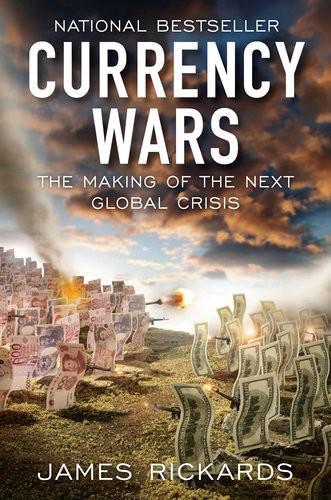
Currency Wars: The Making of the Next Gobal Crisis
by
James Rickards
Published 10 Nov 2011
“Jim, we expect U.S. pushback on our deal with Japan, and frankly we’re tired of the U.S. using its dominant position in the dollar-based trading system to call the shots. There’s a better way. None of our currencies is ready to replace the dollar—we all know that. But gold has always been money good. It’s just a matter of time before the world gets to some kind of gold standard. There’s a huge first-mover advantage here. The first country that moves to gold will have the only currency anyone wants. Here’s our proposal.” Steve handed me a reworked copy of the mock press release I had given him at the Darien bistro the week before. It was all there: the new gold-based currency, a London bank of issue, the ability to expand the new money supply by depositing gold, the English and Swiss rule of law, clearance and settlement facilities and a true market price.
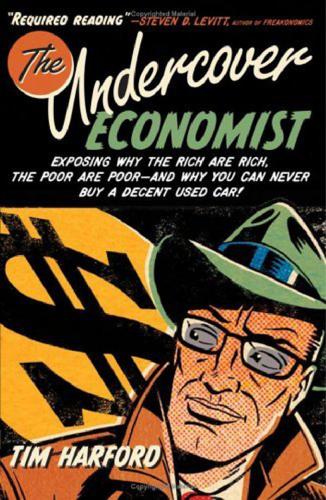
The Undercover Economist: Exposing Why the Rich Are Rich, the Poor Are Poor, and Why You Can Never Buy a Decent Used Car
by
Tim Harford
Published 15 Mar 2006
Paul David’s argument that new technology takes time to have a real economic impact is most famously expounded in “The Dynamo and the Computer: An Historical Perspective on the Modern Productivity Paradox,” The American Economic Review Papers and Proceedings, May 1990, 355–61. The results of my lost bet with John Kay are in the Financial Times, October 29, 1999, or at http:// www.johnkay.com/articles/search.php?action=view&doc_id=127&date=&title=&topic=. Although I am generally dismissive of the idea that Internet companies enjoy a first-mover advantage, I think there is at least one important exception. Online auction sites, which match buyers and sellers of every imaginable product, do have such an edge. The sellers want to go where the buyers are, and the buyers want to go where the sellers are. The first site to do a decent job of bringing them together will prove very hard to dislodge, even if a competitor has a superior technology.
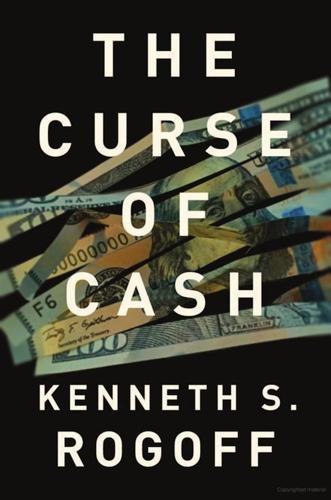
The Curse of Cash
by
Kenneth S Rogoff
Published 29 Aug 2016
Some people worry that this cap will eventually imply deflation, if world growth continues but the supply of bitcoins is fixed. They should be much more worried about inflation than about deflation. How is that? Because Bitcoin does not have a monopoly on the underlying technology, imitators can appear, and indeed they already have. Over time, Bitcoin 1.0’s first-mover advantage may fade, especially if Bitcoin 2.0 or Bitcoin 3.0 offers a superior mechanism (e.g., much lower maintenance costs and more surefire anonymity). If so, the problem will be inflation, not deflation. Can the government really copy the new technologies to create a superior clearing mechanism for its own electronic currency?
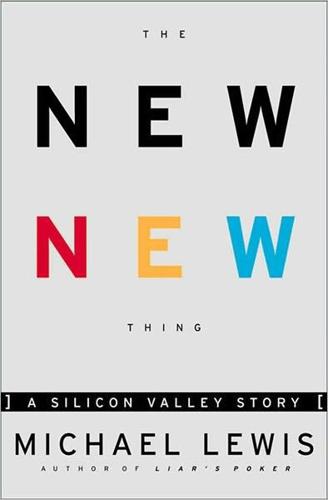
The New New Thing: A Silicon Valley Story
by
Michael Lewis
Published 29 Sep 1999
The conversation turned to finances. The bankers asked several perfunctory questions: How much money did Mike Long think the company required? ($40 million) How fast could it grow? (How fast did they want it to grow?) How much was at stake? (The future of the single biggest market.) "The benefits of first-mover advantage in this space are so huge," said Long. "That's why we have this land-grab strategy." The bankers agreed mightily with this statement. One of them said, "That's true in every Internet space. Amazon.com is doing $87 million a quarter. Barnes and Noble is only doing $9 million. And Barnes and Noble has been as good as it gets in responding to the Internet threat."

The Moon: A History for the Future
by
Oliver Morton
Published 1 May 2019
But the idea that the American system might be too soft and too consumerist to bring forth and marshal the world-changing technologies of tomorrow had genuine currency. The answer that the experts provided when asked what America could do to prove this wrong was to double down: choose a space project so challenging that a whole new level of technology would be needed, thus rendering the Soviets’ first-mover advantage moot. A Moon landing was just such a project. As von Braun, the man in charge of super boosters, self-servingly but accurately pointed out to Johnson, it would require rockets ten times more capable than the current state of the art. Yet, with the F-1 in development, it could be delivered, he and others assured the White House, by 1968 or so—which is to say, before the end of Kennedy’s second term in office.
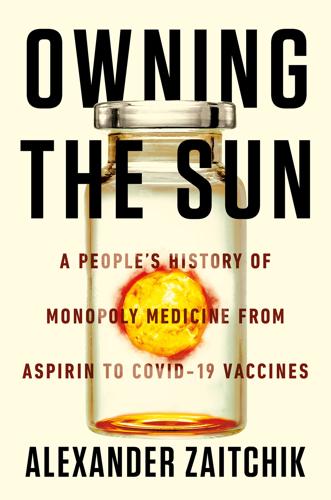
Owning the Sun
by
Alexander Zaitchik
Published 7 Jan 2022
The unofficial emblem of Cold War suburban anxiety, it was the country’s bestselling drug between 1968 and 1982. Downers had competition in the billion-dollar anxiety management market: amphetamines. SKF patented the first pharmaceutical speed in the U.S. market, amphetamine sulfate, in 1937, and had retained first-mover advantage after the war. In 1947 the company rolled out Benzedrine and Dexedrine. In 1956, the Swiss firm Ciba struck gold in the United States by patenting methylphenidate, an amphetamine derivative trademarked as Ritalin and positionally marketed as “a happy medium in psychomotor stimulation.” The company won its place in a crowded speed market with a positional marketing campaign touting “a happy medium in psychomotor stimulation.”

The Industries of the Future
by
Alec Ross
Published 2 Feb 2016
You are free to go. Many people, rightly or wrongly, will want a second opinion. I know I would. Sustained credibility is the tough sell that hospitals would have to make to patients and family members everywhere until the practice of overseas scan filtering could be normalized. There are not only first-mover advantages. There are distinct first-mover disadvantages. However, American society has accepted similar changes in the past. Think about the rise of nurse practitioners doing medical tasks, like giving vaccines, that in the past were performed only by physicians. The adoption of new technology finally occurs when ease of use, economic savings, and trust all come together to work toward change.

Priceless: The Myth of Fair Value (And How to Take Advantage of It)
by
William Poundstone
Published 1 Jan 2010
A chart of profit to non-initiators looked much the same. The better the initial offer was for the other guy, the more the other guy ended up with. This underscored how the initiator determined the fates of both parties. In real estate, the seller sets an asking price. There’s not much a buyer can do about that. In many other situations, the first-mover advantage is up for grabs. This is often true of salary negotiations. Most employees negotiating a salary rightly feel at a disadvantage. A big company interviews thousands of applicants a year. It makes hundreds of salary offers and sees how many of them are accepted. This gives the employer a good feel for current market conditions.

Some Remarks
by
Neal Stephenson
Published 6 Aug 2012
Either it failed, or it succeeded. If it failed, then no manager who wants to keep his or her job will approve spending money trying to revive it. If it succeeded, then it’s patented and entry to the market is presumed to be unattainable, since the first people who thought of it will have “first-mover advantage” and will have created “barriers to entry.” The number of seemingly promising ideas that have been crushed in this way must number in the millions. What if that person in the corner hadn’t been able to do a Google search? It might have required weeks of library research to uncover evidence that the idea wasn’t entirely new—and after a long and toilsome slog through many books, tracking down many references, some relevant, some not.
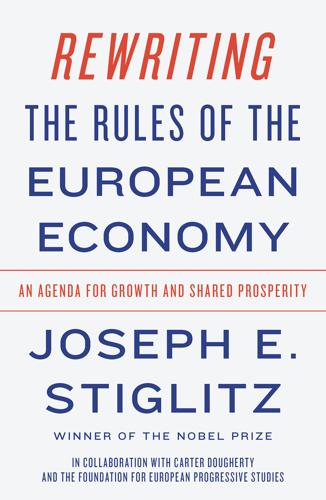
Rewriting the Rules of the European Economy: An Agenda for Growth and Shared Prosperity
by
Joseph E. Stiglitz
Published 28 Jan 2020
Even the ability to absorb new advances from elsewhere is reduced. It means that deployment of innovations in industry will lag. Europe may suffer especially if efficient production methods come online only after competitors elsewhere have already adopted them. In our globally competitive economy, there is often a large first-mover advantage. This is evident particularly in the case of the American technology giants. The squeeze on public investment in Europe has been especially grave, with serious long-run implications. For example, fraying infrastructure undermines productivity. Because of the complementarities between public and private investment that we noted earlier—with public investments increasing the returns to private investments—underinvestment by the public sector induces underinvestment by private enterprises.
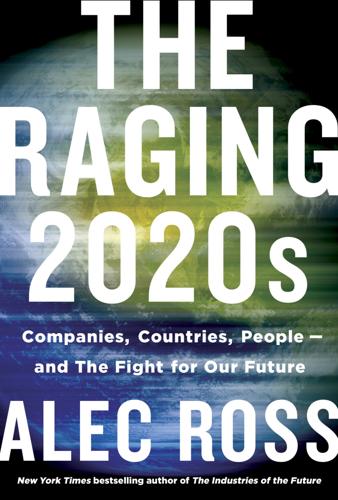
The Raging 2020s: Companies, Countries, People - and the Fight for Our Future
by
Alec Ross
Published 13 Sep 2021
If the geopolitical landscape during the second half of the 20th century was defined by the Cold War between the United States and the Soviet Union, the first half of the 21st century is being defined by the Code War between the United States and China. This rivalry is unlikely to grow as tense or as binary as the Cold War, but it will still draw nations and companies to one side or the other. Chinese and American technology companies will compete against each other for talent, market share, and first-mover advantages in new branches of artificial intelligence and other emerging technologies. The Chinese and American governments will each strive to outdo the other in setting global standards for digital technology and adopting the latest innovations into their defense and intelligence agencies. Each country will form its own sphere of influence through international alliances, business partnerships, intelligence sharing, and academic collaboration.
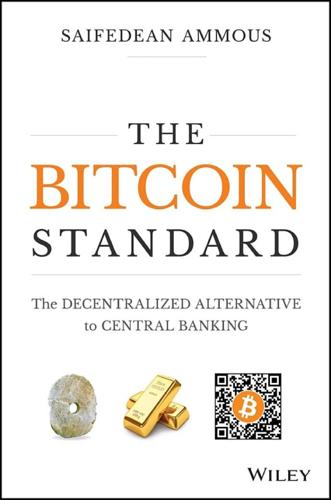
The Bitcoin Standard: The Decentralized Alternative to Central Banking
by
Saifedean Ammous
Published 23 Mar 2018
With the increased volatility and the availability of a reliable and relatively stable hard‐money international monetary standard, the incentive for using Bitcoin drops significantly. In a world in which governments' restrictions and inflationary tendencies are disciplined by the gold standard, it might just be the case that gold's first‐mover advantage and relative purchasing power stability would constitute an insurmountable hurdle for Bitcoin to overcome, by depriving Bitcoin of the fast growth in users and thus preventing it from reaching a large enough size with any semblance of stability in price. In practice, however, the possibility of a global return to sound money and liberal government is extremely unlikely as these concepts are largely alien to the vast majority of politicians and voters worldwide, who have been reared for generations to understand government control of money and morality as necessary for the functioning of any society.

Talk to Me: How Voice Computing Will Transform the Way We Live, Work, and Think
by
James Vlahos
Published 1 Mar 2019
In a test by the market research firm Loup Ventures, the Assistant correctly answered 86 percent of the questions it was asked while Alexa got only 61 percent right. If Alexa isn’t yet brilliant at answering questions, she does have Amazon’s unsurpassed expertise at product search. Alexa also has a “first-mover” advantage, having released a smart home device two years before Google and four years before Apple and captured around 75 percent of the U.S. market for such devices. And finally, Amazon and Microsoft reached an arrangement to allow Cortana (and thus Bing) to be available via Alexa. It’s a win-win: Amazon beefs up Alexa while Microsoft puts its powerful search technology in front of more customers.
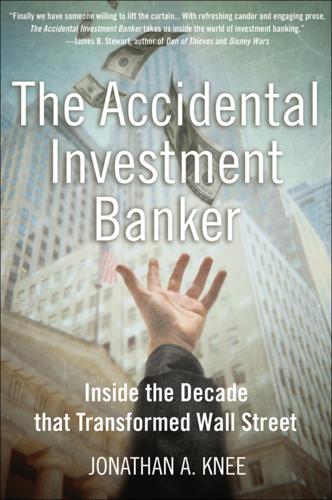
The Accidental Investment Banker: Inside the Decade That Transformed Wall Street
by
Jonathan A. Knee
Published 31 Jul 2006
As a kind of unofficial spokesperson for the entire sector, Meeker became Morgan Stanley’s not-so-secret weapon in the market-share wars for technology banking business. Other investment banks belatedly tried with varying degrees of success to establish their own ready-for-prime-time celebrity Internet analysts, but Mary had an insurmountable first mover advantage during a boom that would only last a few short years. Ironically, these jealous competitors probably never suspected the extent to which at Morgan Stanley many not so secretly wished they could give her away. The problem was that having Mary Meeker at Morgan Stanley created client expectations that simply could not be fulfilled.
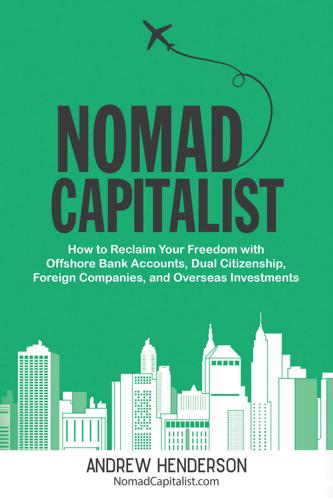
Nomad Capitalist: How to Reclaim Your Freedom With Offshore Bank Accounts, Dual Citizenship, Foreign Companies, and Overseas Investments
by
Andrew Henderson
Published 8 Apr 2018
If you are choosing to live in a frontier market in order to take advantage of low-hanging-fruit business opportunities, then it is only normal that you may have to forego daily kale juice. After all, countries like Cambodia and Paraguay have so many opportunities precisely because they do not have stuff that is common in many other countries. The benefit of living there is that you can be the first guy to sell green juice and have first mover advantage. For those of us who prefer 24-hour convenience stores, Uber, and great shopping, the reality is that all of the things you enjoy at home will likely be available wherever you choose to move. When in my home in Malaysia, I make small adaptations to my lifestyle, such as eating more tropical fruit in place of fresh berries that are rather expensive there.
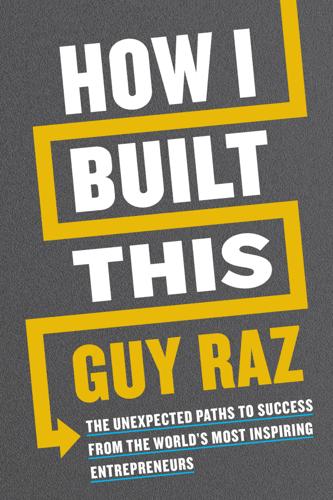
How I Built This: The Unexpected Paths to Success From the World's Most Inspiring Entrepreneurs
by
Guy Raz
Published 14 Sep 2020
The exact amount of time you spend in the first phase of development isn’t as important as making sure you don’t get stuck there for too long. Every idea, no matter how great, has a shelf life. If you don’t get it off that shelf and out into the world in time, no amount of feedback you get during the second phase of the iterative process can overcome a lack of interest or mitigate first-mover advantage if someone beats you to the punch. Moving to phase two can be tough for people who don’t handle criticism well, or who are dogged by that familiar yet unattainable form of perfectionism that has trapped the next great American novel on the desks or hard drives of countless aspiring writers since forever.
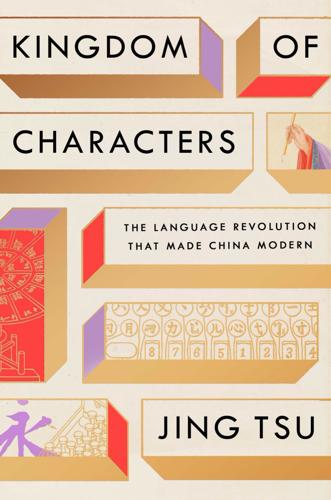
Kingdom of Characters: The Language Revolution That Made China Modern
by
Jing Tsu
Published 18 Jan 2022
In 1881, influential ministers at court like Li Hongzhang—who recognized that westernization was unstoppable—saw that the country needed to start taking back control and finally established its own telegraph bureau. A line connecting Tianjin to Shanghai was built with a lot of public fanfare. But by then, the technology bore the irreversible stamp of Europe’s first-mover advantage. The Danes had designed a telegraphic code system to use for the Chinese script. It was the first ever, and it moved the advantage further into the Europeans’ court. China had a lot of catching up to do. * * * • • • Cracking the Chinese code for telegraphy was the culmination of a long process of Westerners grappling with the Chinese language.

The Measure of Progress: Counting What Really Matters
by
Diane Coyle
Published 15 Apr 2025
Much of the cost is in developing software and reaching critical scale in the first place. 128 Chapter Five Many traditional business activities involve economies of scale too, but the difference between fixed and marginal cost is extreme in the case of information businesses; the cost of production of the marginal Boeing aircraft is far higher than that of producing a marginal Google search or Facebook “like.” For many digital s ervices, marginal cost is effectively zero, so a zero price would represent efficient pricing. Information Rules drew some key lessons that still form the basis of successful platform strategies: try to gain first-mover advantage, scale up as fast as possible to attain the network benefits that cement your lead, price discriminate as much as possible by personalisation, and learn all you can about your customers from their behaviour in order to sell advertising. (The book also, presciently, warns that the dynamics of digital businesses will lead to market concentration and attract the interest of antitrust enforcers.

Platform Revolution: How Networked Markets Are Transforming the Economy--And How to Make Them Work for You
by
Sangeet Paul Choudary
,
Marshall W. van Alstyne
and
Geoffrey G. Parker
Published 27 Mar 2016
When Facebook uses data about member activity to observe Zynga doing something unexpected or to spot Instagram diverting traffic in novel ways, that is strategic data analysis. Some notable platform strategy battles have been won by companies that took advantage of data supremacy to outcompete their rivals. By most measures, Monster should have won the battle for supremacy among job placement platforms. As one of the earliest entrants into the market, it had a first mover advantage, and it quickly generated strong network effects in the two-sided market of employers and employees seeking one another. However, there were built-in limitations to the data Monster gathered. Because Monster targeted only active job seekers, it captured no information concerning users’ broader social networks.
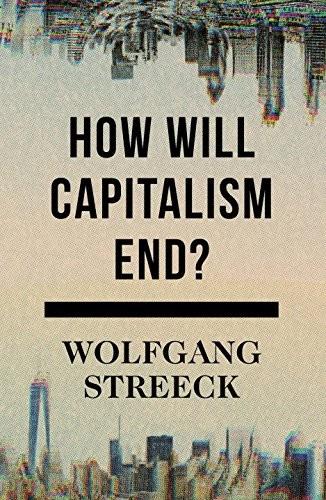
How Will Capitalism End?
by
Wolfgang Streeck
Published 8 Nov 2016
Since self-interested businesses know their trade better than anybody else, and often also command substantial economic resources and political power, they typically move faster than the public agencies charged with regulating them, in particular where trading crosses the boundaries of existing jurisdictions, like national states. This is why regulatory policies in contemporary capitalism fundamentally remain confined to following the lead of the market and trying to catch up with highly agile, creative and unpredictable actors endowed with superior knowledge and resources that enjoy a permanent first mover advantage and are usually one or more steps ahead.19 Concerning social protection, relative prices in a capitalist economy tend to move faster than people are able and willing to adapt their lives to them. Social relations, expectations and status orders are typically inert in comparison to free markets, leading people as citizens to demand political intervention to stabilize their social existence against market pressures for permanent adjustment.
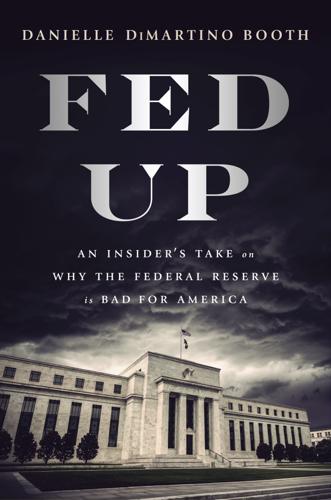
Fed Up: An Insider's Take on Why the Federal Reserve Is Bad for America
by
Danielle Dimartino Booth
Published 14 Feb 2017
In 2012, they accounted for nearly a third of all sales in Miami, and about one in five sales in Phoenix and Las Vegas. Absentee purchasers making all-cash offers for houses sight unseen indicated another kind of housing bubble in the works. Low-hanging fruit was being plucked by investors with a first-mover advantage. The real estate markets in Southern California and the Bay Area were some of the hottest markets, buoyed by the ability to monetize equity in technology companies. After depleting the inventories of distressed homes on the East and West coasts, private equity looked inland. Texas markets held special appeal, given the hearty job growth and sheer number of companies relocating to the area.
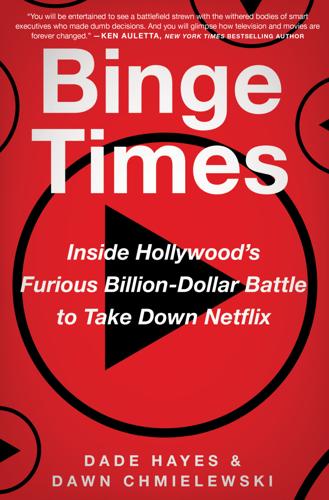
Binge Times: Inside Hollywood's Furious Billion-Dollar Battle to Take Down Netflix
by
Dade Hayes
and
Dawn Chmielewski
Published 18 Apr 2022
Cook returned for the capstone moment: Oprah Winfrey, in a flowing white blouse, touted the inescapable allure of joining forces with Apple. “Because, they’re in a billion pockets, y’all! A billion pockets.” The timing of the event, held two weeks ahead of Disney’s planned investor day, seemed motivated by the desire to capture first-mover advantage. If the world of streaming music was noisy, streaming video was getting to be a cacophony. There were already 235 subscription services operating in the U.S. Apple seemed ready to turn the volume up before it even had the melody down. But the nearly two-hour extravaganza concluded with major questions still unanswered: How much would Apple TV+ cost?
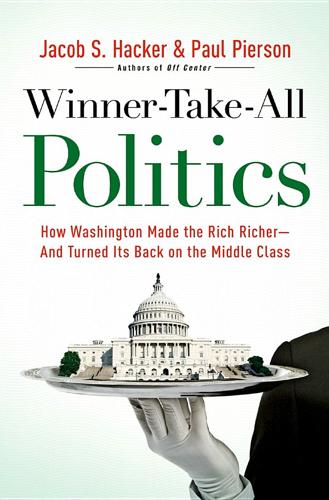
Winner-Take-All Politics: How Washington Made the Rich Richer-And Turned Its Back on the Middle Class
by
Paul Pierson
and
Jacob S. Hacker
Published 14 Sep 2010
An Economic Upswing—for Lobbyists As the politics of organized combat moved into full swing, the Obama administration and K Street were like captains of two playground squads jockeying to get the best players for their side. It was not a fair fight. Organized interests could not only offer vastly bigger paychecks; they had first-mover advantages as well. By the time Emanuel began to assemble his team, many members of the Baucus entourage (as well as those of other prominent moderates like Blanche Lincoln from Arkansas) had already migrated to K Street.36 Beyond Scher, two former Baucus chiefs of staff, as well as a former legislative assistant and two other former staffers, were working for lobbying firms with a large health-care portfolio.

Nexus
by
Ramez Naam
Published 16 Dec 2012
There might very well be clinical utility in a drug that allowed therapist and client to connect mentally. Was it truly possible? In Hyderabad, a serial entrepreneur and a tech financier brainstormed together about this new technology. Was there a way to make money off of it? Was there a scalable business here? Could they grab a first-mover advantage? How could they skirt the Copenhagen restrictions? Just how much funding would they need? In the San Fernando Valley of Los Angeles, an adult film producer mused on the possibilities of making and selling adult films using this new medium. No, not just films. They'd be adult "adventures".

Radical Technologies: The Design of Everyday Life
by
Adam Greenfield
Published 29 May 2017
The idea that a manufacturer might hold off from shipping a feature until it can actually achieve all the things its prospective users have been led to believe it can feels like an artifact from a long-gone age of centralized production, when the entire decision nexus of an industry might feasibly be gathered at a single conference-room table. It has virtually no chance of prevailing in a world where productive capacity is so widely distributed. Some party will always be hungry to claim the first-mover advantage, to benefit from the perception of being first to market with autonomous capability, and will do assuredly do everything this side of the law to make promises that they’ve achieved it. It will take more than a disclaimer in the licensing agreement, or a few lines of boilerplate tucked away at the bottom of the press releases, to keep people from believing them.

Click Here to Kill Everybody: Security and Survival in a Hyper-Connected World
by
Bruce Schneier
Published 3 Sep 2018
Users regularly fail to change default passwords, or misconfigure access control on data in the cloud. In 2017, Stanford University blamed “misconfigured permissions” for exposing thousands of student and staff records. There are lots of these stories. There are other reasons, aside from complexity, why attack is easier than defense. Attackers have a first-mover advantage, along with a natural agility that defenders often lack. They often don’t have to worry about laws, or about conventional morals or ethics, and can more quickly make use of technical innovations. Because of the current disincentives to improve, we’re terrible at proactive security. We rarely take preventive security measures until an attack happens.

Your Face Belongs to Us: A Secretive Startup's Quest to End Privacy as We Know It
by
Kashmir Hill
Published 19 Sep 2023
By the end of 2018, the company had collected a billion faces from the internet, meaning it could identify a significant number of people on the planet, some of whom would have several photos of themselves come up in a search. Clearview now had a more robust product with which to court investors and potential customers. And it had first-mover advantage. Facebook, Google, and other big tech companies had vaster databases of people’s photos and names, but they hadn’t released a tool like Clearview’s. Ton-That believed he could beat them to the punch and reap the rewards. But the reason the Silicon Valley giants hadn’t released their own version of a facial recognition tool to identify strangers wasn’t that they couldn’t build it; it was that they were afraid to.
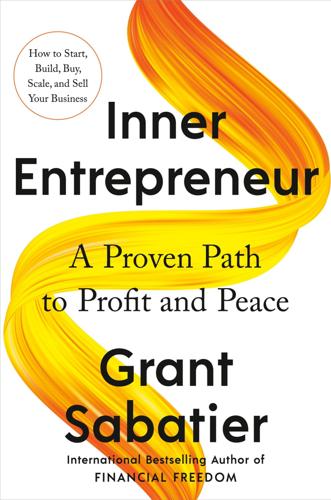
Inner Entrepreneur: A Proven Path to Profit and Peace
by
Grant Sabatier
Published 10 Mar 2025
Logan was confident that there were more people out in the world like him who would be interested in having colorful knives in their kitchen, so he started designing the product himself and contacting manufacturers to make a prototype. To manufacture a unique product like this takes longer and costs more, since the manufacturer has to create custom machinery, designs, etc. However, doing so has a huge potential upside. Logan has the first-mover advantage in harvesting profits and cementing himself at the top of Amazon for specific keywords related to his new product. Like anything else online, once you have a successful product, it’s easy for someone to copy you, so it’s essential to build a strong brand and diversify your sales outside of Amazon through your own website.
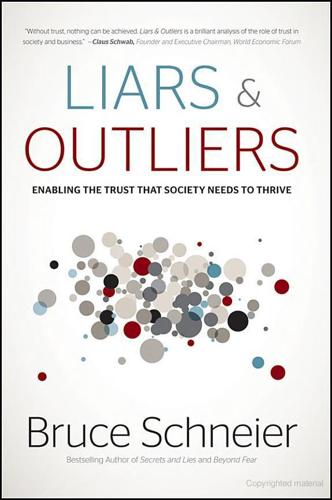
Liars and Outliers: How Security Holds Society Together
by
Bruce Schneier
Published 14 Feb 2012
Defenders are in what the 19th-century military strategist Carl von Clausewitz called “the position of the interior.” They have to defend against every possible attack, while the defector just has to find one flaw and one way through the defenses. As systems get more complicated due to technology, more attacks become possible. This means defectors have a first-mover advantage; they get to try the new attack first. As a result, society is constantly responding: shoe scanners in response to the shoe bomber, harder-to-counterfeit money in response to better counterfeiting technologies, better anti-virus software to combat the new computer viruses, and so on. The attacker's clear advantage increases the scope of defection further.
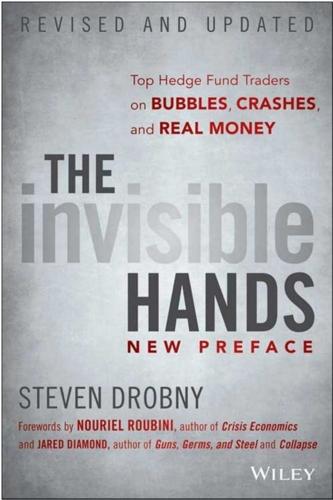
The Invisible Hands: Top Hedge Fund Traders on Bubbles, Crashes, and Real Money
by
Steven Drobny
Published 18 Mar 2010
We have some of the preconditions for a hyperinflation scenario in the sense that we could have a sovereign crisis that drives a massive dislocation in asset prices. The minute someone believes that a sovereign entity will not fulfill its obligations, he will start voting by purchasing resources and diversifying out of the currency. The first mover advantage from game theory is essential here. A lot of people are very long dollars, and there is evidence on the margin that some of these actions are beginning to occur in scale. In Weimar Germany, hyperinflation occurred in about 18 months between 1922 and 1923, where it suddenly took the entire circulation of Reichsmarks to purchase a newspaper.
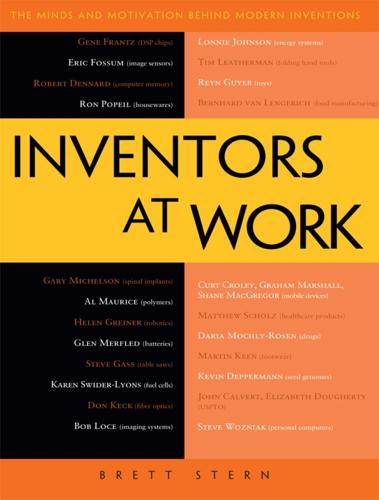
Inventors at Work: The Minds and Motivation Behind Modern Inventions
by
Brett Stern
Published 14 Oct 2012
Fortunately, there is a great business case for robots in both the consumer and military spaces. Stern: Could you talk a little about the intellectual property side? How much is driven for the demand to have patents or something proprietary? Greiner: I think the most important thing is to get the invention to market first and gain the first-mover advantage. I look at some patents in our field and ask, “How can you patent that?” since it is well known in the field. I would be an advocate for changes in the current patent system to allow third-party review as part of the process [to increase the quality of the patents that do survive]. Stern: You have numerous patents, correct?
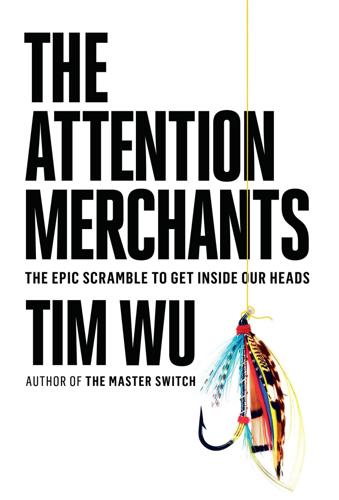
The Attention Merchants: The Epic Scramble to Get Inside Our Heads
by
Tim Wu
Published 14 May 2016
The setup would then give way to Berle’s famous torrent of one-liners. It was not a particularly high bar for television set by NBC and Berle. But the ratings were a triumph for NBC’s overlord, David Sarnoff, who as early as 1923 had prophesied the medium’s importance. A firm believer in what would later be called “first mover advantage,” he had decided during the 1930s that dominating television would be essential to both RCA (which made the sets) and NBC. The world war had ended but the television war had just begun. And so Sarnoff insisted (via internal memo) that he be referred to as “General” David Sarnoff, the “Father of Television.”*1 Bill Paley, meanwhile, entered the postwar period wishfully thinking that radio would remain the main action; sure enough, CBS’s lackluster TV ratings reflected this halfheartedness.

The Hype Machine: How Social Media Disrupts Our Elections, Our Economy, and Our Health--And How We Must Adapt
by
Sinan Aral
Published 14 Sep 2020
The disadvantage, however, is that the second mover can learn from your mistakes and innovate—if, that is, they can overcome the network effects developed by the first mover. WeChat’s origin story was different. It got to peer out from behind the Great Firewall and observe the innovations of Western social platforms, while still maintaining its first-mover advantage in China’s large protected language market. As a result, it evolved as if it were a first mover, but with all the competitive insight of a second mover. It became the most comprehensive social platform in the world and now has over a billion users. Displaying a single friend’s like made users 33.75 percent more likely to click an ad—which is much larger than the 3.8 percent to 10.5 percent lift that our colleagues at Facebook had found.

Open: The Story of Human Progress
by
Johan Norberg
Published 14 Sep 2020
These are the profits that innovators and entrepreneurs make above the normal return on investments when they engage in creative destruction – introducing new goods, technologies and methods into the economy, such as computers that replace hand calculations and barcodes that replace manual sorting. Nordhaus’ conclusion is that those greedy entrepreneurs capture no more than 2.2 per cent of the social value of their innovations, despite first-mover advantage and patent protection. That 2.2 per cent makes up many of the billions and billions you read about on the Forbes list and hear socialists and populists condemn. But it is nothing compared to the almost 98 per cent that society gets, specifically consumers; in other words: all of us. In a modern economy profits are quickly competed away.

Doppelganger: A Trip Into the Mirror World
by
Naomi Klein
Published 11 Sep 2023
Yes, our health-care systems could have been better prepared with larger stockpiles of masks, more ventilators, more beds, and more nurses. But that wouldn’t have changed the underlying problem, which was that it takes time to understand a novel virus. Time to do research before serious scientists will make claims about the best course of action. It was inside that vacuum that so many wellness hustlers saw a first-mover advantage. Sure, they didn’t understand the virus either, but for plenty in this unregulated sector, that had never stopped them from making inflated claims about what a particular herb or diet will do before. And so, unlike the epidemiologists who were busy trying to understand SARS-CoV-2, many wellness gurus wasted no time pitching all manner of supplements, tinctures, and miracle cures that all claimed to do what the doctors could not: protect us.

A City on Mars: Can We Settle Space, Should We Settle Space, and Have We Really Thought This Through?
by
Kelly Weinersmith
and
Zach Weinersmith
Published 6 Nov 2023
If at some point their population outgrows the designated circle, they might be allowed to grab more. Thus, possession is incentivized without allowing small groups to claim whole planets at once. One big issue here is that because not all parts of the Moon or Mars are equally desirable, you’ve got a pretty huge first-mover advantage, which means this framework would vastly privilege the rich spacefaring nations. Shackleton crater, with its Peaks of Eternal Light and cold-trapped water deposits, is only about 20 kilometers across. Anecdotally, we’ve seen space geeks note that you could tactically set up lots of small communities, each 100 kilometers apart, thus claiming massive territories despite having only modest populations.

Narcotopia
by
Patrick Winn
Published 30 Jan 2024
The regime was on board. It had little to lose. Good work, Maher said. On to the bigger obstacle: the State Department. Seizing the narrative was vital. Once US diplomats saw the proposal, they’d bash the DEA for conniving with a tyrannical regime and a heroin cartel. The DEA had to exploit its first-mover advantage, bringing other influential institutions into the plan, framing it as the world’s largest-ever opium eradication—a potential conquest too good to pass up. Maher started working his contacts in Congress. Horn was already courting United Nations agencies. The UN Drug Control Program had offices in Yangon, and its officials loved the idea, even shared it with the World Health Organization and the United Nations Children’s Fund, which could help deliver Saw Lu’s health care and education requirements.
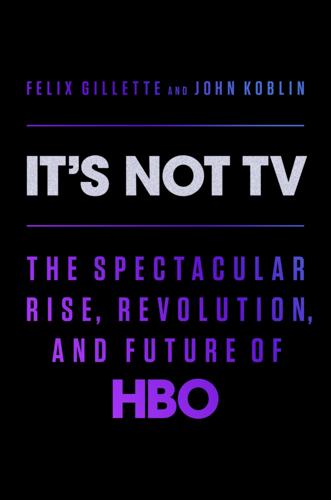
It's Not TV: The Spectacular Rise, Revolution, and Future of HBO
by
Felix Gillette
and
John Koblin
Published 1 Nov 2022
As the final season of The Sopranos crept closer on the calendar, the need for HBO to come up with a new Zeitgeist-rattling series kept growing. But throughout pockets of the company, an air of midlife malaise had settled in, sapping away some of the urgency of HBO’s formative years. “We were first to market. We had a first mover advantage. We were making money hand over foot,” says a former HBO executive. “Quite frankly, we didn’t have to try that hard.” Around Hollywood, there were growing murmurs that HBO was beginning to lose its competitive edge over its rivals. Showtime was airing buzzy series like Weeds, from an up-and-coming writer named Jenji Kohan, and Dexter, a series about a vigilante serial killer starring Six Feet Under alumnus Michael C.
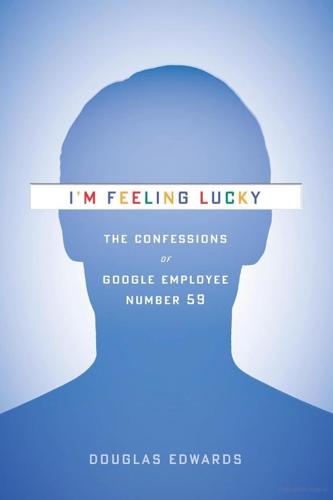
I'm Feeling Lucky: The Confessions of Google Employee Number 59
by
Douglas Edwards
Published 11 Jul 2011
Google itself was a canonical example. No other companies had thought search was important. If they had, Microsoft or Yahoo would have invested more heavily in technology and Google would never have gained such a big head start. Overture observed our trials with content targeting. They didn't want us to have the "first mover" advantage in a new market, so in February 2003 they acted as if they had beaten us to the punch again—as they had with search-related advertising—by claiming that they would soon launch a "contextual advertising" service. A week later, our service was open and ready for business. As an astute poster on WebmasterWorld noted, "Overture announces first.

Connectography: Mapping the Future of Global Civilization
by
Parag Khanna
Published 18 Apr 2016
Launched through an IPO and listed on the Saudi stock exchange, King Abdullah Economic City (KAEC) is, according to its CEO, Fahd al-Rasheed, the “world’s first fully integrated private city.”6 Part of the “Dubai effect” on the Arab world has been that new ports are vigorously competing to displace the U.A.E.’s Jebel Ali as the region’s gateway to the Arabian Peninsula’s booming markets—particularly Saudi Arabia itself. Jebel Ali had first mover advantage on its side, not geography. Once KAEC’s ultramodern new port is fully operational around 2020, Saudi Arabia can begin to capture the lion’s share of the container cargo traffic passing from the Mediterranean through the Suez Canal into the Red Sea, cutting shipping time and efficiently funneling goods outward over high-speed rail lines and ten-lane highways—land bridges across the vast desert to Mecca, Medina, Riyadh, and beyond.
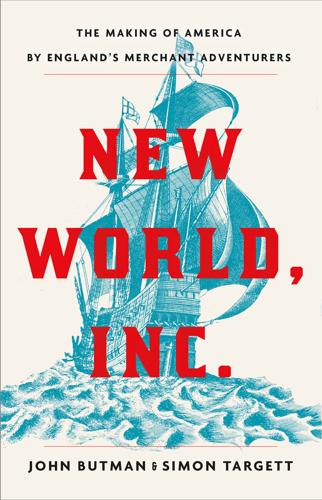
New World, Inc.
by
John Butman
Published 20 Mar 2018
In other words, making the trip from the West Country to London by ship was almost as daunting as crossing the Atlantic.44 The simmering rivalry between the London and Plymouth investors was about to reach boiling point as the two companies prepared to launch their separate colonies. They knew only too well that whoever got to Virginia first would have first-mover advantage. The London investors, richer and more established, might have been expected to get off to the faster start. But it was John Popham, the feared Lord Chief Justice, and Ferdinando Gorges, his ally on the King’s Council, who got their ships out of the harbor first. 16 A PUBLIC PLANTATION THE PLYMOUTH COMPANY, first off the mark, was the first to run into trouble.

Corporate Warriors: The Rise of the Privatized Military Industry
by
Peter Warren Singer
Published 1 Jan 2003
For example, in the Ethiopia-Eritrea context, a twist on the traditional arms race emerged as the two sides competed first on the global military leasing market, racing to hire military skills (primarily from ex-Soviet sources), prior to taking the field of battle. The result is that the pace of an arms race is accelerated and "first- mover" advantages is heightened. These both impact on the likelihood of war initiation, as the sides might see shrinking window's of opportunity.38 Linked with the impact of military marketization on arms races are its resultant effects on arms control efforts. The monitoring and maintenance of agreements (particularly on conventional weapons), are equally made more difficult with the presence of PMFs.

Model Thinker: What You Need to Know to Make Data Work for You
by
Scott E. Page
Published 27 Nov 2018
Proponents of patents push back by noting that while slowing innovation may be bad, without patents the reduction in investment would be much larger. To counter that claim, Boldrin and Levine use a logic partly based on our diffusion model. A useful product based on new knowledge will spread quickly through the population of buyers. That was true of the radio, television, Google’s search engine, and Facebook. This creates a first-mover advantage. The innovator can still benefit, but only by producing something with the idea. With a patent, an inventor can wait for others to implement the idea and profit. Boldrin and Levine also question how much credit the inventor deserves anyway. If breakthroughs were the result of a solitary genius, and most ideas would never have been produced without incentives, then the case for patents is stronger.
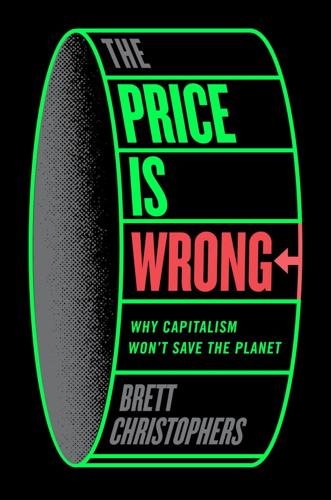
The Price Is Wrong: Why Capitalism Won't Save the Planet
by
Brett Christophers
Published 12 Mar 2024
The advent of ‘green capitalism’ (such as it is), rather, is the result principally of government support helping to make clean energy a business that is just about sufficiently profitable to attract investment, combined with a certain willingness in some capitalist quarters to accept lower returns, either in the expectation that green profits will eventually be substantially forthcoming, and thus that there is long-term economic value in establishing first-mover advantage and market leadership, or – whisper it – in the service of delivering the use value of greenness. Investment in renewable energy capacity around the world has, it turns out, always danced disproportionately to the tune of state subsidy. In the US, for example, as Ross McCracken and Housley Carr observed in 2016, ‘the rate of new build for solar and wind has historically been heavily influenced by [tax] credits – booming when certainty exists and stalling when it does not’.25 Little wonder that the most immediate consequence when US policymakers did finally renew the country’s renewables tax credits in the summer of 2022, through the passage of the Inflation Reduction Act (IRA), was a sharp jump in the share prices of clean energy companies.

Troublemakers: Silicon Valley's Coming of Age
by
Leslie Berlin
Published 7 Nov 2017
In 1977, Apple had $49,000 in net retained earnings on $756,000 revenues and robust European sales that accounted for nearly 25 percent of the company’s profits.73 The company had twenty-four employees, a business plan spun into a seventy-page private offering memorandum, and sales on track to grow tenfold in the next year—as well as first-mover advantage in a personal computer market that Apple predicted would reach $290 million by 1980.74 (The market would, in fact, be more than twice that size.)75 Markkula’s leadership was a strong draw, as well. Peter O. Crisp, the managing partner of an early investor, Venrock (the Rockefeller family’s venture capital firm that was also a first-round investor in Intel), says that all Venrock knew about Apple “was that they were honest, and Markkula recommended them.”76 In the fall of 1977, Apple sold 150,000 shares at $3 each, most of them to people Markkula knew from the semiconductor industry and wanted on the board.

Rentier Capitalism: Who Owns the Economy, and Who Pays for It?
by
Brett Christophers
Published 17 Nov 2020
Amazon’s two infrastructure rentier businesses – Fulfillment by Amazon and Amazon Web Services – are excellent examples of businesses displaying these non-natural monopoly tendencies. Replicating the vast infrastructures underpinning either one would be prohibitively costly. Writing about AWS, for example, Tom Krazit recently noted that ‘its first-mover advantage has lingered well into its second decade’ – its share of the market having held steady at around one-third for several years – precisely because ‘it takes an enormous amount of investment to create a cloud infrastructure network that can compete with AWS’.14 And AWS is not alone. Table 6.2 provides a list, broken down by sector, of some of the UK’s biggest infrastructure rentiers in business today.

Aerotropolis
by
John D. Kasarda
and
Greg Lindsay
Published 2 Jan 2009
Given enough planes and enough runways, an airline could conceivably link every city in the country— some fifty thousand city pairs—from a centrally located one like Dallas. For cities, hubs meant dozens of new destinations and frequent service to them—more flights than they could have justified on their own. The airlines were learning about “network effects” and “first-mover advantage” long before the Internet escaped from the lab. American moved its headquarters to Dallas immediately after deregulation and opened its hub there two years later, filling the void left by Braniff. With concentration came immense economies of scale. Today, American is the largest private employer in the Metroplex, bigger than Walmart.
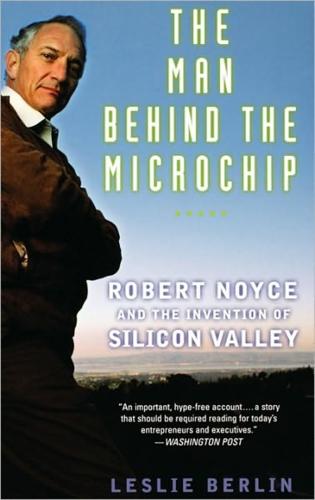
The Man Behind the Microchip: Robert Noyce and the Invention of Silicon Valley
by
Leslie Berlin
Published 9 Jun 2005
Group think, a single yes: Noyce, “The Fruit of Success,” Chemtech, Dec. 1979. 61. Use money to buy time: Gene Flath, interview by author. A rifleman who shoots: Gordon Moore, “Intel—Memories and the Microprocessor,” Daedalus 125, Spring 1966: 55–80. In this article, Moore offers the following example of first-mover advantage: the 1101, Intel’s first MOS memory device, was initially designed to operate at standard power supply voltages of +5 and +12v. Intel soon discovered, however, that “12 volts was more than the device structure could handle.” Since no system had yet been built to use semiconductor memories, Intel was free to adjust the voltage, effectively decreeing that semiconductor memories would run at +5 and +9v—specifications that eventually became industry standards. 342 Notes to Pages 172–177 62.
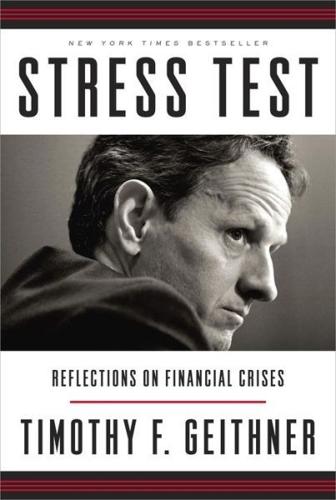
Stress Test: Reflections on Financial Crises
by
Timothy F. Geithner
Published 11 May 2014
He saw “Wall Street reform” as a great issue to build momentum, set the agenda, and force Republicans to choose between siding with Wall Street and giving the President a bipartisan victory. And regardless of Rahm’s political considerations, I thought it made sense to strike while the pain of the crisis was raw and the financial establishment was weak, rather than wait for memories to fade and the empire to strike back. I wanted to seize the first-mover advantage in setting the terms of the debate, both in the United States and globally. I also believed an early push for reform could provide a productive outlet for the public’s Old Testament anger, a positive expression of what I called “the atonement agenda.” I didn’t want populist fury to muck up our crisis response with damaging short-term conditions, but I thought it could help us pass tough new long-term rules of the road.
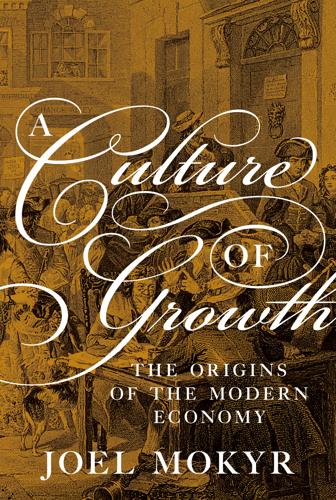
A Culture of Growth: The Origins of the Modern Economy
by
Joel Mokyr
Published 8 Jan 2016
The book contains a plethora of practical detailed prescriptions but also illustrates the appropriability issues involved in invention by listing “An offer of certain new inventions which the author proposes to disclose upon reasonable considerations.” He also considered opening his own shop to sell the “excellent sweet oils and waters” that he had invented, implicitly recognizing an alternative way in which an inventor could be remunerated: first-movers advantage (Harkness, 2007, p. 232). None of this led to much, and he complained that “happy men are rewarded with good words, but few or none, in these days, with any real recompense” (Harkness, 2007, p. 233). 9 An example is the Dutch engineer and alchemist Cornelis Drebbel (1572–1633), whose inventions included improved (compound) microscopes, clocks, thermostats, pumps, a tin mordant for dyeing scarlet with cochineal, and, most famously, the first submarine.

Architects of Intelligence
by
Martin Ford
Published 16 Nov 2018
When thinking about what the most desirable strategic situation for humanity is when superintelligence arises in the future, it seems that one important desideratum is that the competitive dynamics should be allayed as much as possible. MARTIN FORD: If we do have a “fast takeoff” scenario where the intelligence can recursively improve itself, though, then there is an enormous first-mover advantage. Whoever gets there first could essentially be uncatchable, so there’s a huge incentive for exactly the kind of competition that you’re saying isn’t a good thing. NICK BOSTROM: In certain scenarios, yes, you could have dynamics like that, but I think the earlier point I made about pursuing this with a credible commitment to using it for the global good is important here, not only from an ethical point of view but also from the point of view of reducing the intensity of the racing dynamic.

The Long Game: China's Grand Strategy to Displace American Order
by
Rush Doshi
Published 24 Jun 2021
Second, and more important, China is rolling out a digital RMB to compete with the US dollar that completely bypasses US payments infrastructure. Chinese officials have long worried about the potential of a US-led digital currency that would bolster the US dollar system, and so they have raced for first-mover advantage. Wang Xin, director of the People’s Bank of China’s research bureau, stated that “if the digital currency is closely associated with the U.S. dollar . . . there would be in essence one boss, that is the U.S. dollar and the United States,” which would have geopolitical consequences.59 The United States should carefully study and then consider rolling out a digital currency that preserves its financial advantages and brings about precisely the world Wang Xin was concerned about—a digital currency that complements and is anchored to the US dollar system.

Facebook: The Inside Story
by
Steven Levy
Published 25 Feb 2020
* * * • • • AS A MEMBER of the Psychometrics Centre, Aleksandr Kogan got to know Stillwell and Kosinski and became one of Kosinski’s thesis examiners. He was bowled over by Stillwell’s initial discovery that Facebook could be a revolutionary way to collect social-science data. “It was the first-mover advantage,” says Kogan with admiration. “There weren’t a lot of personality quizzes yet on Facebook—now you see a billion of them.” Kogan wanted to do such work himself and asked Stillwell to give him access to myPersonality data, and he began to analyze it. One of Kogan’s grad students began looking at the idea of applying the research to an economics question: How does intrapersonal contact between countries affect things like trade and charitable donations between countries?

Four Battlegrounds
by
Paul Scharre
Published 18 Jan 2023
While the U.S. government has taken a much more laissez-faire attitude to tech regulation, with members of Congress dragging tech leaders like Facebook’s Mark Zuckerberg before Congress for a public browbeating but passing little in the way of substantive regulation, Europe has leaned into regulating technology. American business executives have decried Europe’s model, arguing too much regulation could “strangle business,” and it is certainly true that overly burdensome regulations could harm innovation. However, the GDPR has given Europe a first-mover advantage in establishing global norms for privacy regulation. When I met with Chinese lawyers debating the contours of a potential new consumer data privacy law for China, the GDPR was the default starting point for the conversation. Scholar Anu Bradford has referred to Europe’s approach as a “race to the top” for regulatory standards, and Europe is aiming for the same approach with artificial intelligence.
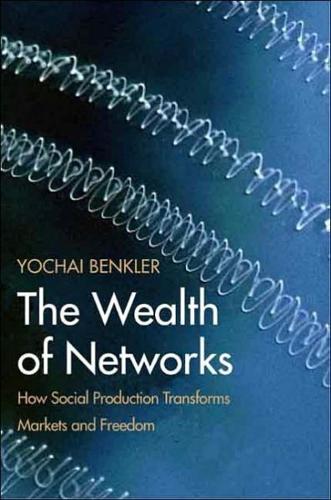
The Wealth of Networks: How Social Production Transforms Markets and Freedom
by
Yochai Benkler
Published 14 May 2006
Similarly, the learning curve and knowhow effects in semiconductors are such that early entry into the market for [pg 46] a new chip will give the first mover significant advantages over competitors. Investment is then made to capture that position, and the investment is captured by the quasi-rents available from the first-mover advantage. In some cases, innovation is necessary in order to be able to produce at the state of the art. Firms participate in "Learning Networks" to gain the benefits of being at the state of the art, and sharing their respective improvements. However, they can only participate if they innovate. If they do not innovate, they lack the in-house capacity to understand the state of the art and play at it.

The Friendly Orange Glow: The Untold Story of the PLATO System and the Dawn of Cyberculture
by
Brian Dear
Published 14 Jun 2017
The result was an escalating cycle of fear, mobilization, and worry for the future. Given that Sputnik appeared right in the middle of the Cold War—in the six months prior to the launch the U.S. and USSR combined conducted some thirty-nine atomic bomb tests, and fourteen in the six months after the launch—for one superpower to surprise another with the first-mover advantage in space raised legitimate concerns about the Soviet Union’s intentions and America’s ability to get to space as well. Among other things, Sputnik fueled calls for immediate and sweeping reform of American education. Getting to space was rocket science, and rocket science required math and science skills, and clearly the American education system had let the country down in those areas.

Political Order and Political Decay: From the Industrial Revolution to the Globalization of Democracy
by
Francis Fukuyama
Published 29 Sep 2014
Geography continued to play a critical role in the consolidation of a strong absolutist Russian state, one whose authority and power over society came to be far greater than anything experienced under the absolutisms of Western Europe. Power was centralized under the Rurik dynasty in Moscow under Ivan III (1440–1505), which under subsequent tsars underwent a huge territorial expansion. The openness of the Russian steppe, combined with the relative weakness of the aristocratic boyar class, gave the Muscovites a huge first-mover advantage. Organizing a middle service class as a Mongol-style light cavalry, the Muscovite tsars ran into few natural defensive obstacles until they encountered the better-organized communities in Poland and Lithuania, and the Turks to the south. Independent commercial cities like Novgorod, that were so important to the development of political freedom in Western Europe, were militarily overwhelmed and subordinated to Moscow’s centralized control.
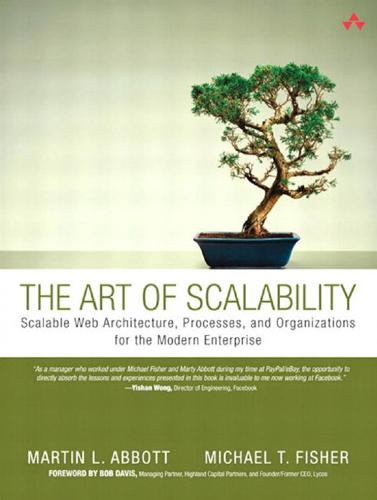
The Art of Scalability: Scalable Web Architecture, Processes, and Organizations for the Modern Enterprise
by
Martin L. Abbott
and
Michael T. Fisher
Published 1 Dec 2009
If you ignore the quality of the product, it will result in either a feature without the desired or required characteristics and functionality or it will be so buggy as to render it unusable. If you choose to ignore the speed, your competitors are likely to beat you to market and you will lose first mover advantage and your perception as an innovator rather than a follower. The larger the scope of the project, the higher the cost, the slower the speed to market, and the more effort required to achieve a quality standard. Any of these scenarios should be worrisome enough for you to seriously consider how you and your organization actively balance these constraints.
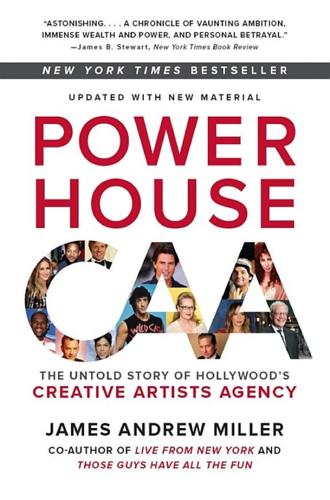
Powerhouse: The Untold Story of Hollywood's Creative Artists Agency
by
James Andrew Miller
Published 8 Aug 2016
As for going first or going second, what do they say, pioneers get arrows in their back? If you risk going first, you risk going into an industry that doesn’t have a lot of public exposure, and you wind up being the target of a lot of publicity and a lot of trial and error by the regulatory authorities. On the other hand, you may get a first-mover advantage. MICHAEL OVITZ: The momentum has totally changed. Ari has an incredible business now. He and Patrick have close to five thousand employees producing for them across dozens of countries. CAA has gone from the dominant number one to a market where owning the film business is no longer the goal or the road to the victory stand.

The Golden Passport: Harvard Business School, the Limits of Capitalism, and the Moral Failure of the MBA Elite
by
Duff McDonald
Published 24 Apr 2017
As Matthew Stewart, a philosopher, former management consultant, and bestselling author, puts it in The Management Myth, Taylor was pushing a new philosophy of management, the use of math (which he called “science”) to “work smarter, not harder.”2 To that point, management of the country’s newly gargantuan corporations—everything from railroads to wholesalers (Marshall Field), department stores (Macy’s), mail-order firms (Sears), meatpackers (Swift and Armour), ore refiners (U.S. Steel), and electrical manufacturers (General Electric)—hadn’t been that focused on control of their workforces. The secrets to success at the time, argues historian James Hoopes, were things like first-mover advantages, capital-intensive barriers to entry, and protective tariffs.3 Most companies saw oversight of the workforce as a simple matter of command-and-control, the organizational stratagem that had been ported over from the military along with actual terminology such as division and dispatcher. Most manual labor workforces of the era were run similarly—workers were given piece-rate pay that supposedly incentivized them to work hard.
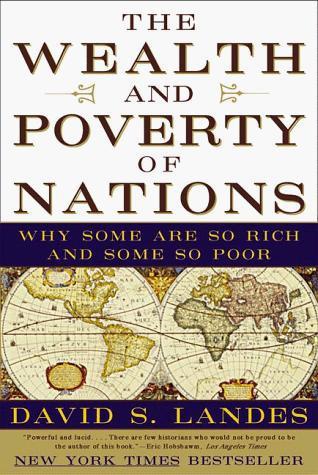
The Wealth and Poverty of Nations: Why Some Are So Rich and Some So Poor
by
David S. Landes
Published 14 Sep 1999
To this end, they learned to design and test faster: 46 months in Japan vs. 60 in the United States (1.7 million man-hours vs. 3.1 million) to craft a new model; 1.4 months vs. 11 to return to normal quality after introduction of the new model.19 The latter comparison is crucial. Haste makes waste, quality is decisive, and the annals of American car production are dotted with instances of quick savings swallowed by long repairs.* These quick-change techniques made it possible for Japan to gain first-mover advantage;† to copy quickly the successes of other makers; to drop mistakes in a hurry. Here was the flexible production that some have put forward as the technology of the future.20 It was not a shift to small scale (“small is beautiful”) as some have thought; on the contrary, big firms had the resources to do it better and pay the costs of variation.
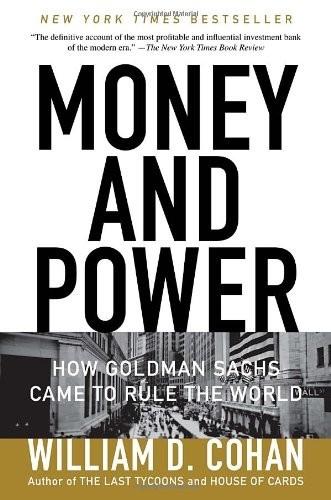
Money and Power: How Goldman Sachs Came to Rule the World
by
William D. Cohan
Published 11 Apr 2011
He acknowledged that the firm’s willingness to mark down its long positions “gave rise to all sorts of stories about how we are marking our books” and to questions about the “significant differences in marks vs. competitors” and that “there are a lot of disputes with clients,” but he viewed Goldman’s mark-to-market prowess as a singular accomplishment. “Best success here was on our marks and our collateral calls,” he continued. “First mover advantage, most realistic marks, competitors unwilling to mark fully given implications for their own trading positions.” The next day, Blankfein asked Viniar and Cohn how the “review of the mortgage and [CDO] books” went. Viniar responded, “Extremely well. You will be very pleased.” It was increasingly easy to see why.
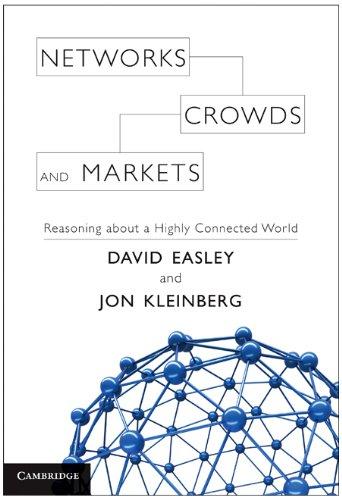
Networks, Crowds, and Markets: Reasoning About a Highly Connected World
by
David Easley
and
Jon Kleinberg
Published 15 Nov 2010
In our first example, we imagine that there are two firms — Firm 1 and Firm 2 — each of whom is trying to decide whether to focus its advertising and marketing on two possible regions, named A or B. Firm 1 gets to choose first. If Firm 2 follows Firm 1 into the same region, then Firm 1’s “first-mover advantage” gives it 2/3 of the profit obtainable from the market in that region, while Firm 2 will only get 1/3. If Firm 2 moves into the other region, then each firm gets all the profit obtainable in their respective region. Finally, Region A has twice as large a market as Region B: the total profit obtainable in region A is equal to 12, while in Region B, it’s 6.
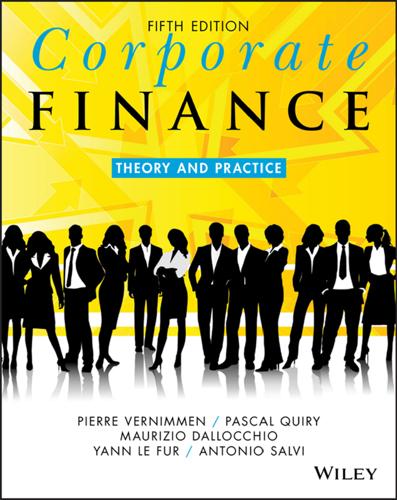
Corporate Finance: Theory and Practice
by
Pierre Vernimmen
,
Pascal Quiry
,
Maurizio Dallocchio
,
Yann le Fur
and
Antonio Salvi
Published 16 Oct 2017
The two groups benefit from their respective presence in different regions; product (Kraft-Heinz). The group can offer a full palette of products to its customers. Although riskier than organic growth, mergers and acquisitions enable a company to save valuable time. In growing sectors of the economy, speed (the first-mover advantage) is a critical success factor. Once the sector matures, it becomes more difficult and more expensive to chip away at competitors’ market share, so acquisitions become a matter of choice (Charter-Time Warner Cable). The idea is also to get rid of a competitor (Linde-Praxair). When a company is expanding internationally or entering a new business, a strategic acquisition is a way to circumvent barriers to entry, both in terms of market recognition (Discovery-Eurosport) and expertise (Midea-Kuka).